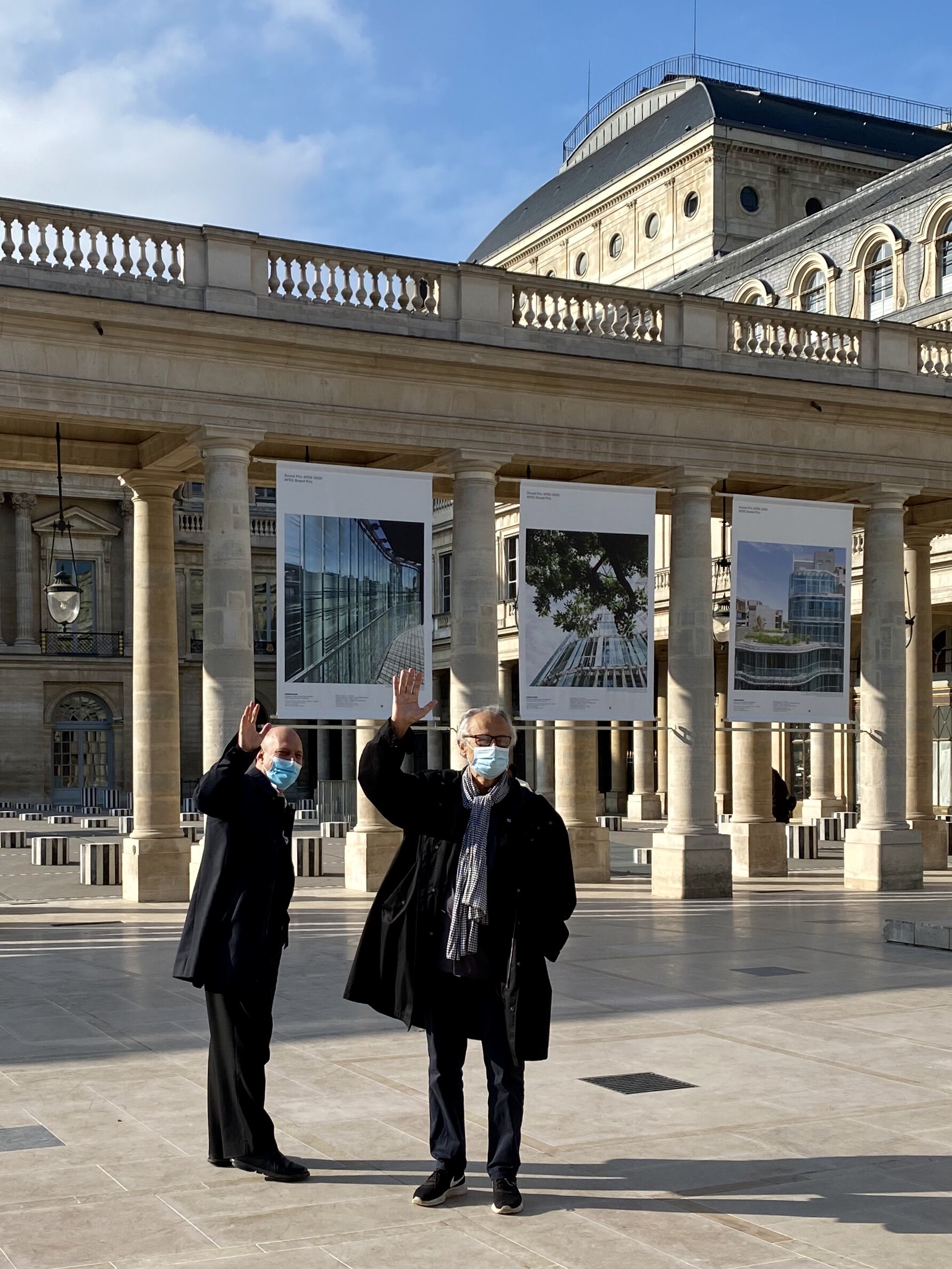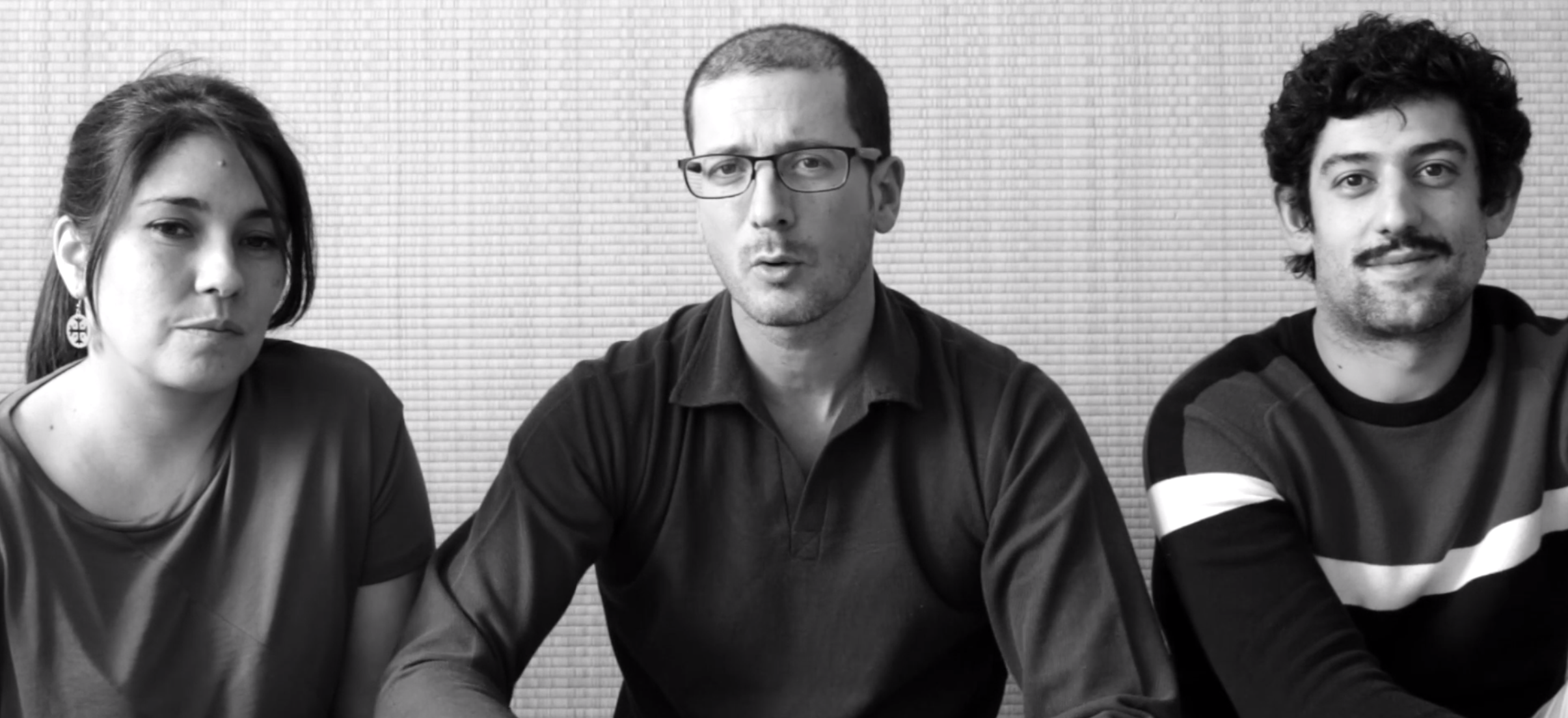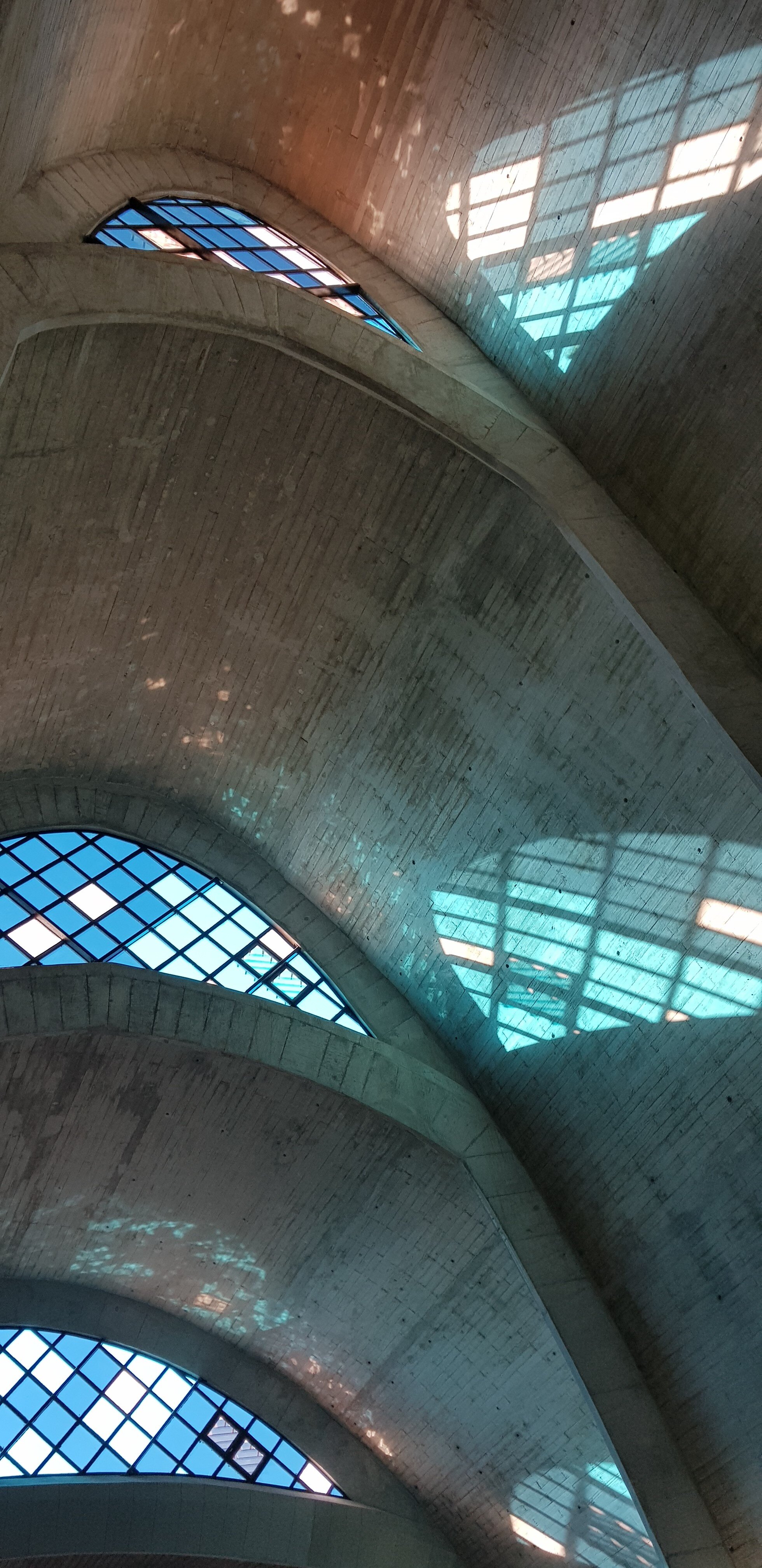….Le Grand Prix AFEX 2020 a été décerné à l’agence Architecturestudio pour l’immeuble Summers à Buenos Aires en Argentine. Le projet de l’Atelier Tanka de campus scolaire dans la vallée du Zanskar en Inde a également été distingué par un Prix Spécial du Jury..The AFEX 2020 Grand Prix was awarded to Architecturestudio for the Summers building in Buenos Aires, Argentina. The Atelier Tanka School Campus in the Zanskar Valley of India was also recognized with a Special Jury Prize….
….GRAND PRIX AFEX 2020..2020 AFEX GRAND PRIX….
….ARCHITECTURESTUDIO - IMMEUBLE SUMMERS À BUENOS-AIRES, ARGENTINE
..ARCHITECTURESTUDIO - SUMMERS BUILDING - BUENOS AIRES, ARGENTINA….
….A Buenos Aires, au cœur du quartier en pleine mutation de Palermo, ce bâtiment de bureaux permet d’imaginer de nouvelles manières de travailler dans le climat privilégié de cette région tempérée d’Amérique du Sud.
Le projet SUMMERS surgit comme une réflexion inéluctable au sein d’une planète fragilisée, en profonde transformation. Dans ce bâtiment, architecturestudio a cherché des réponses adaptées à la situation tant urbaine qu’écologiques afin de répondre aux défis de la révolution numérique et de la transition énergétique.
Summers est un programme de bureaux de 3.700m² localisé à Buenos Aires (Argentine). Il a été livré en décembre 2019. L'agence architecturestudio s'est associée pour le réaliser à ZAS Lavarello & Asociados, un architecte local avec lequel la coopération a été très fructueuse.
..
In the heart of the rapidly changing Palermo district of Buenos Aires, this office building provides new ways of working in the mild climate of this temperate region of South America.
The Summers project is the result of a study of a fragile planet under profound transformation. In this building, architecturestudio sought solutions adapted to both the urban and ecological environments, to meet the challenges of the digital revolution and energy transition.
Summers is a 3,700m² office development delivered in December 2019 by architecturestudio in association with ZAS Lavarello & Asociados, a very fruitful cooperation with a local architect. ….
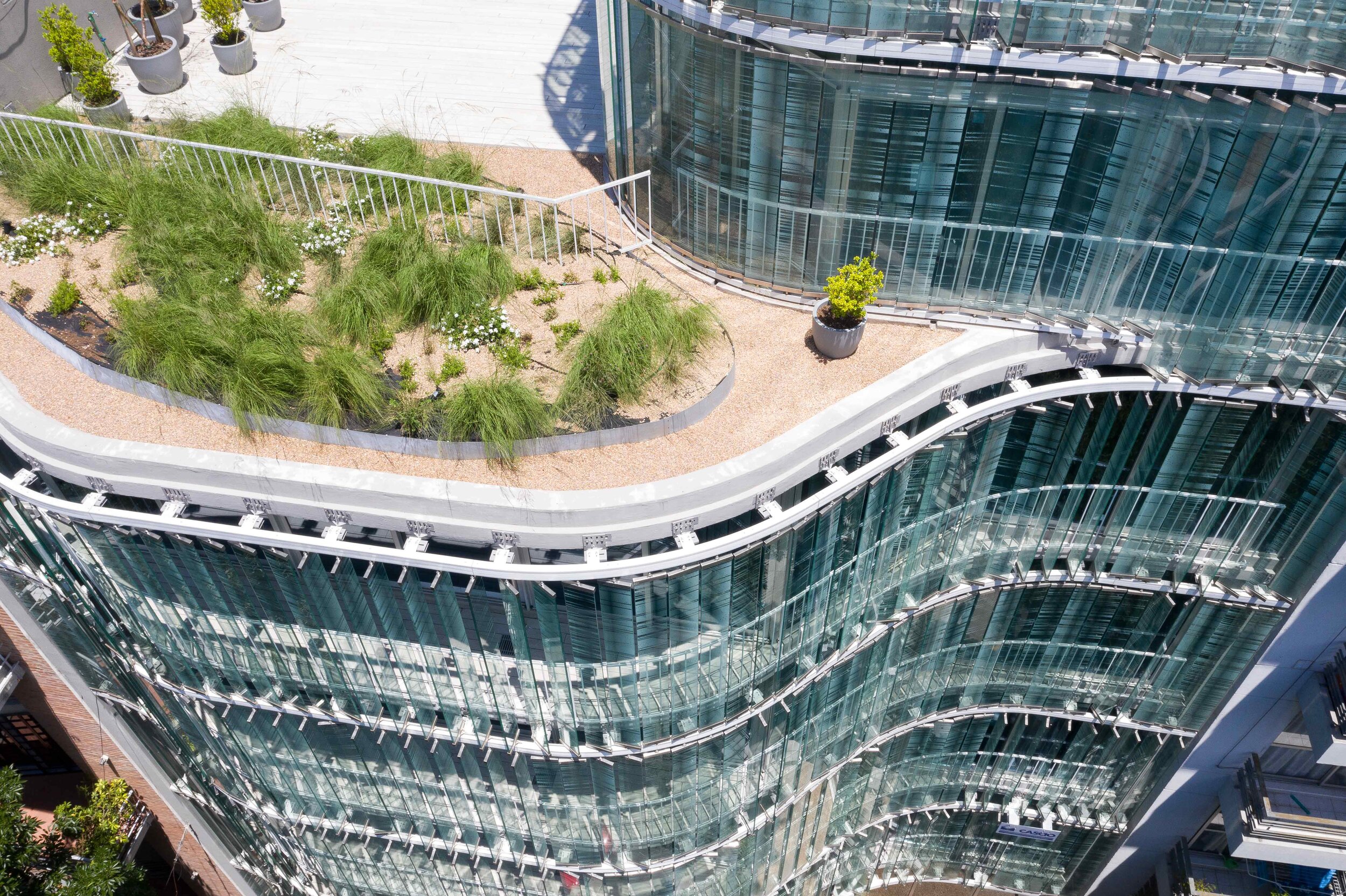
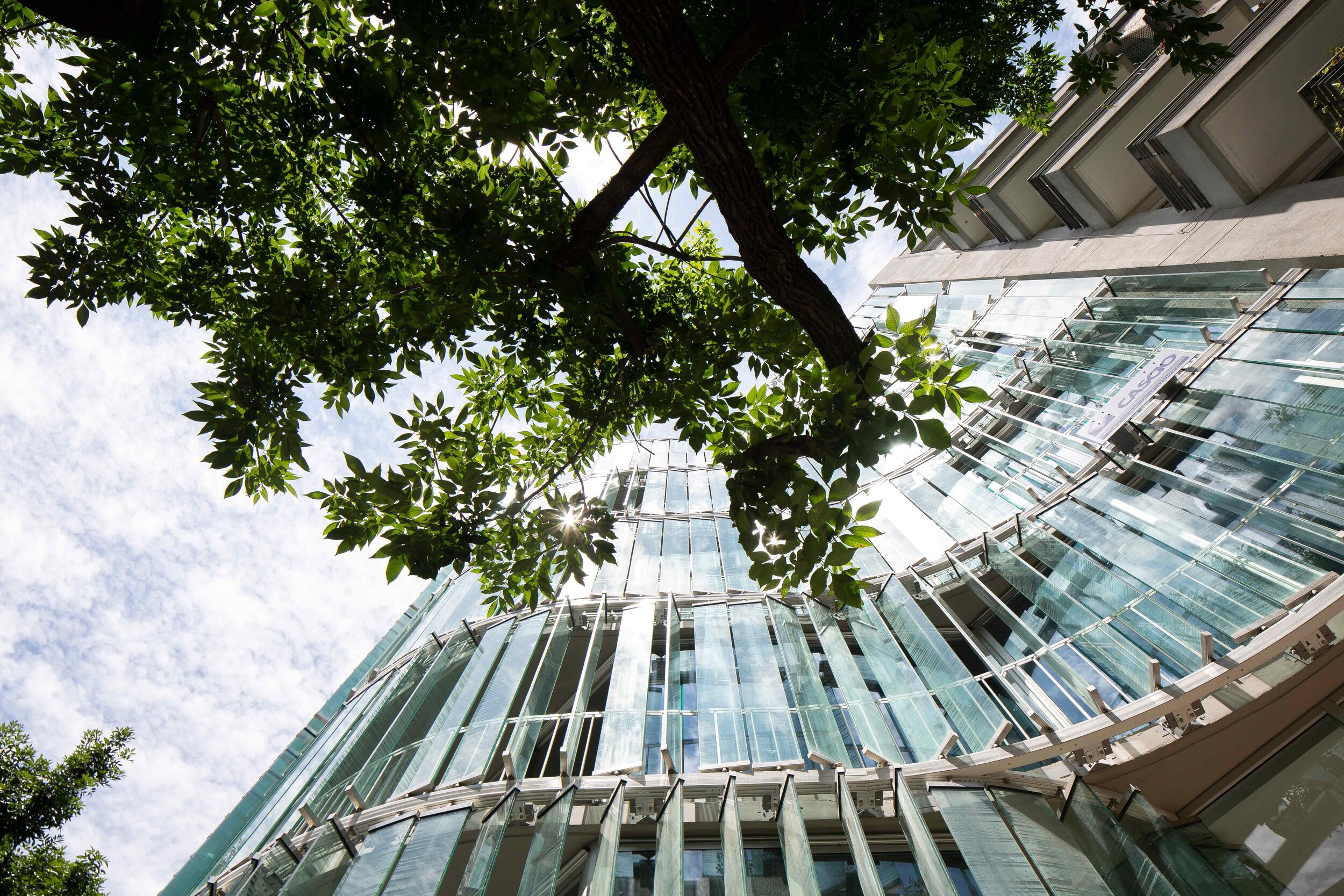
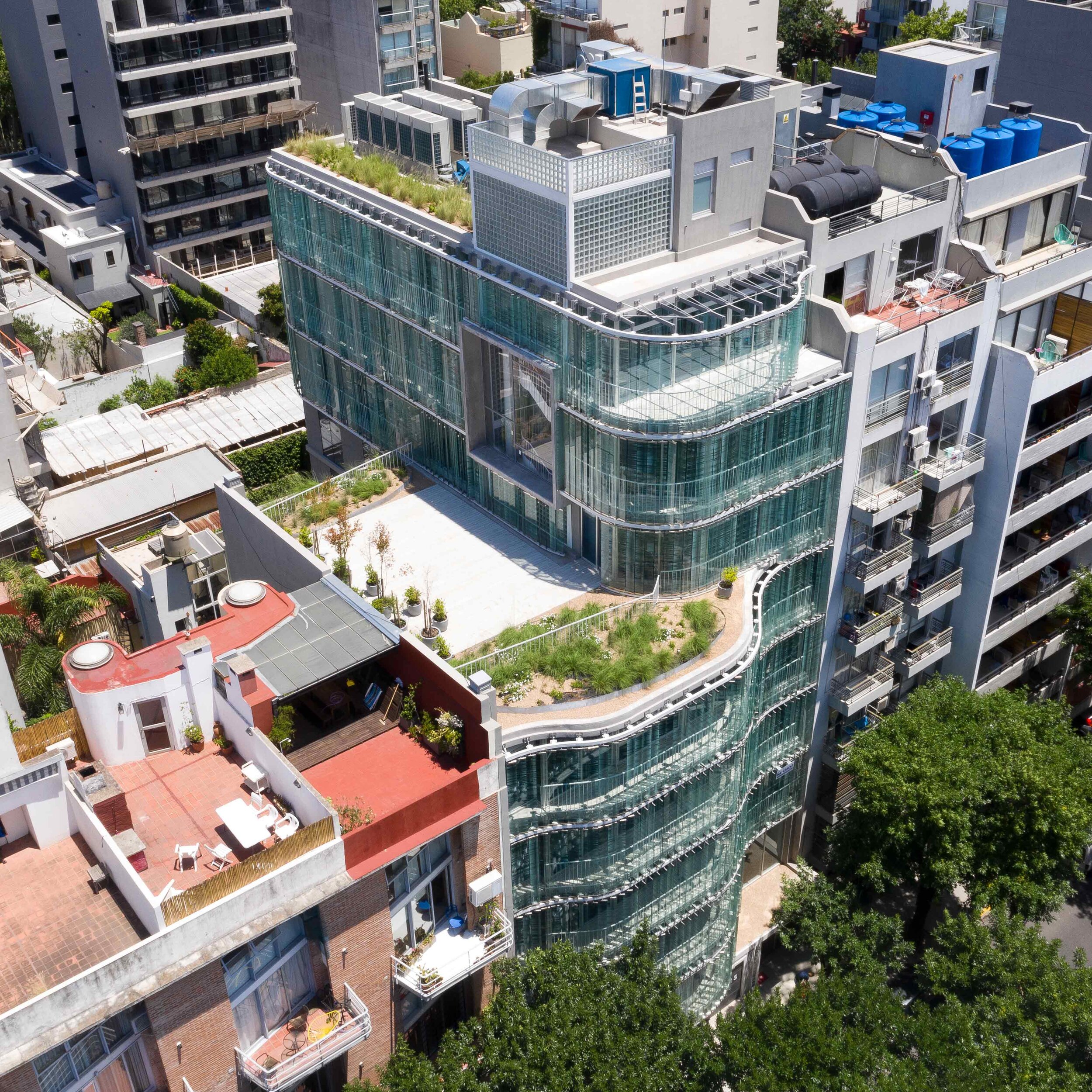
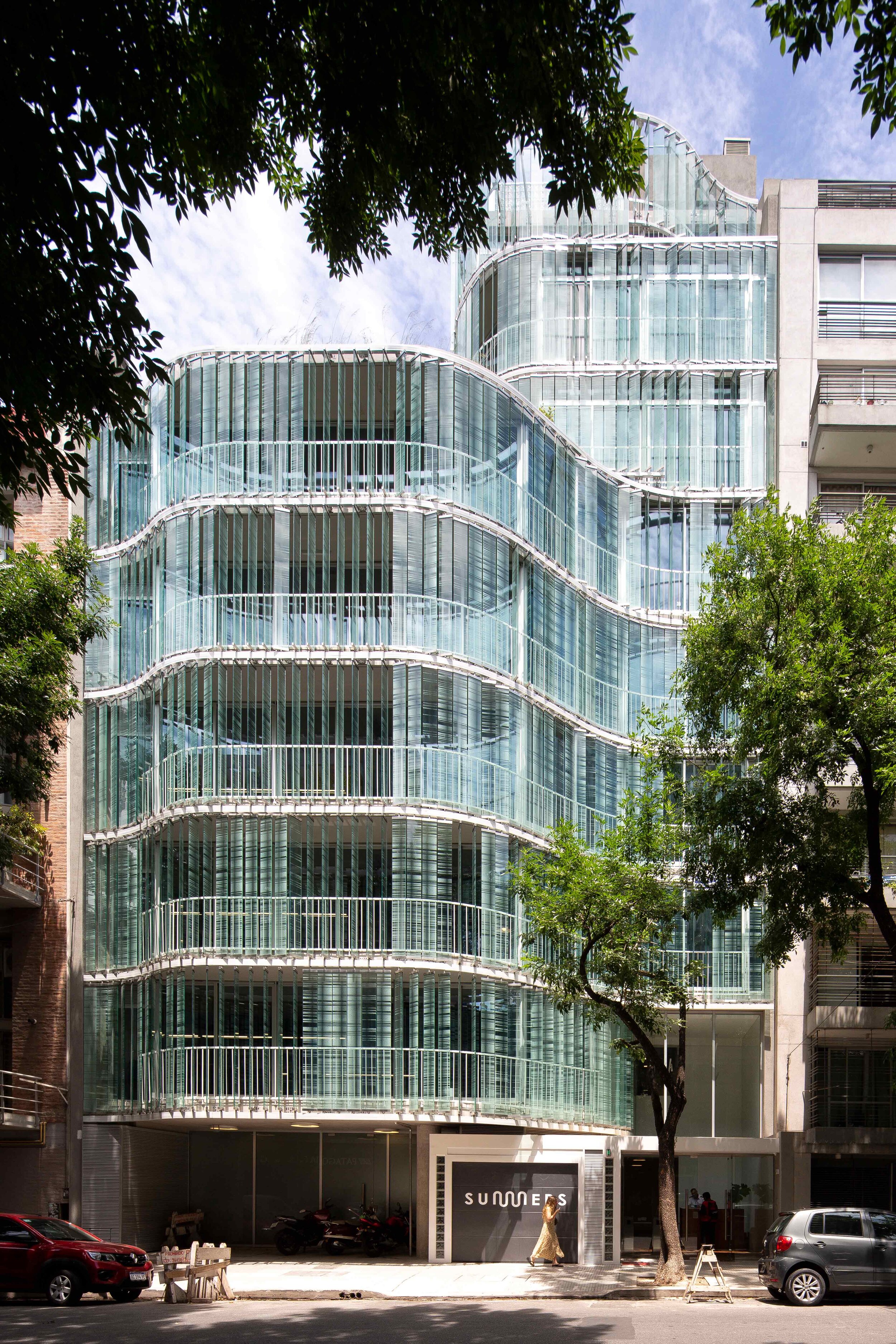
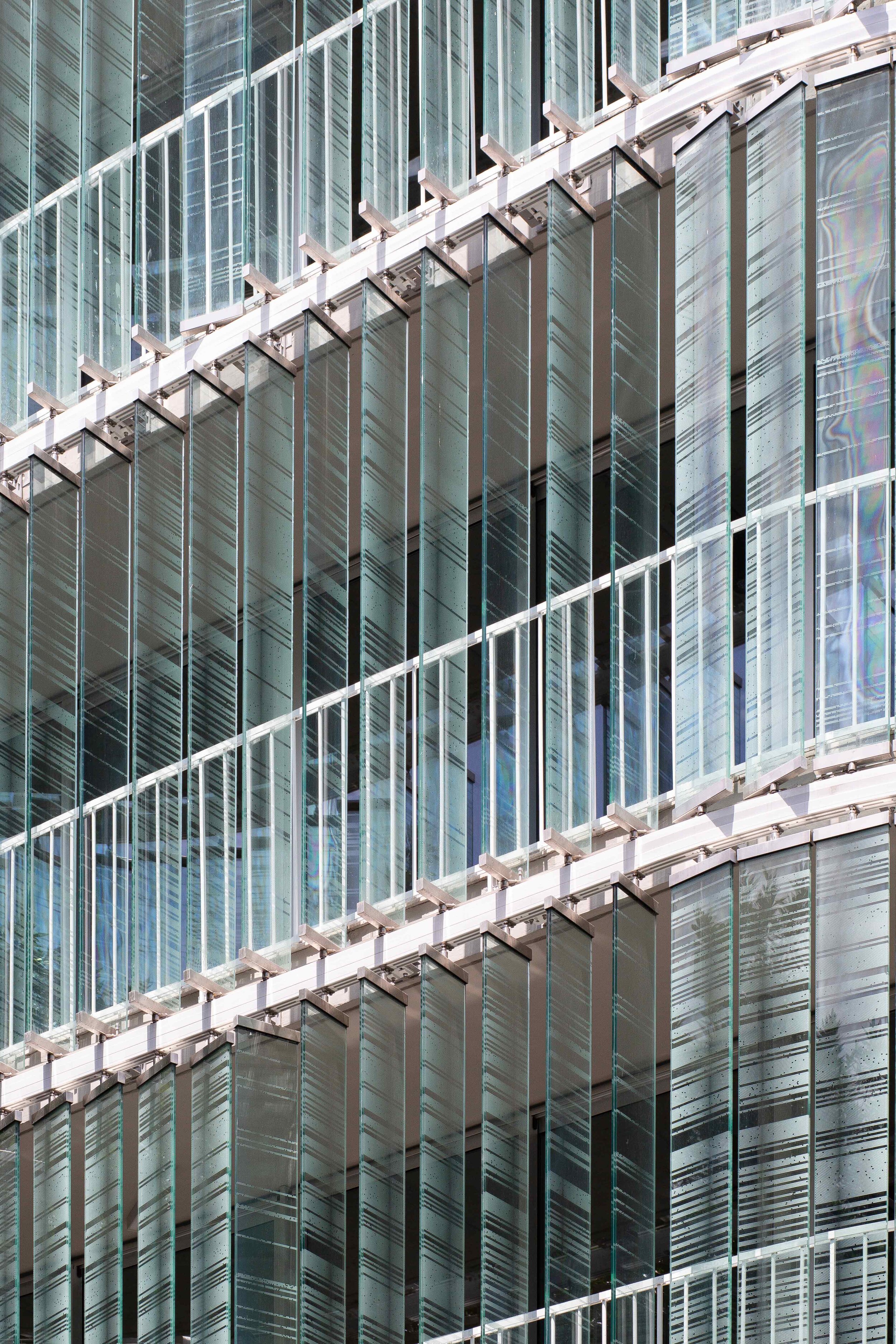
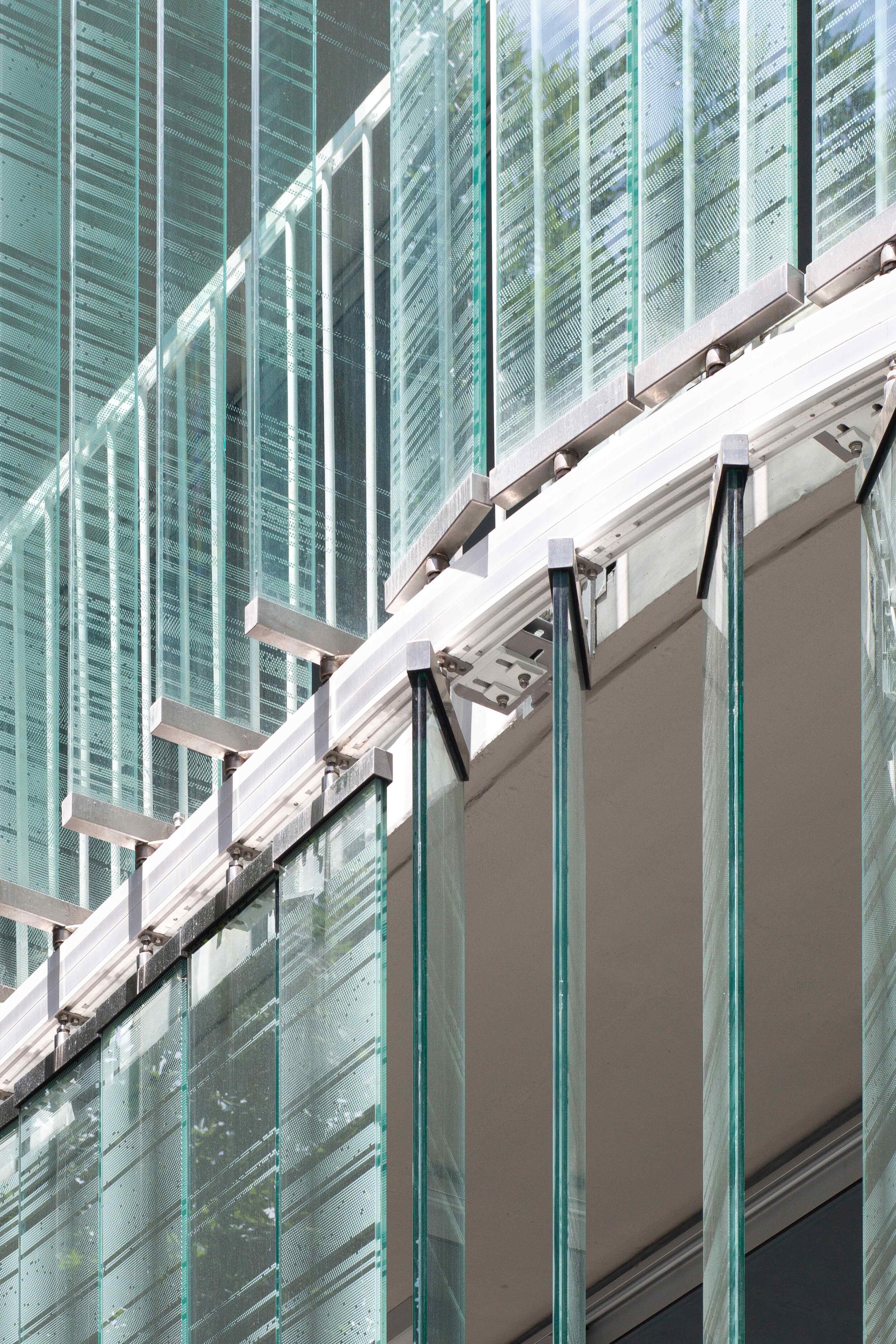

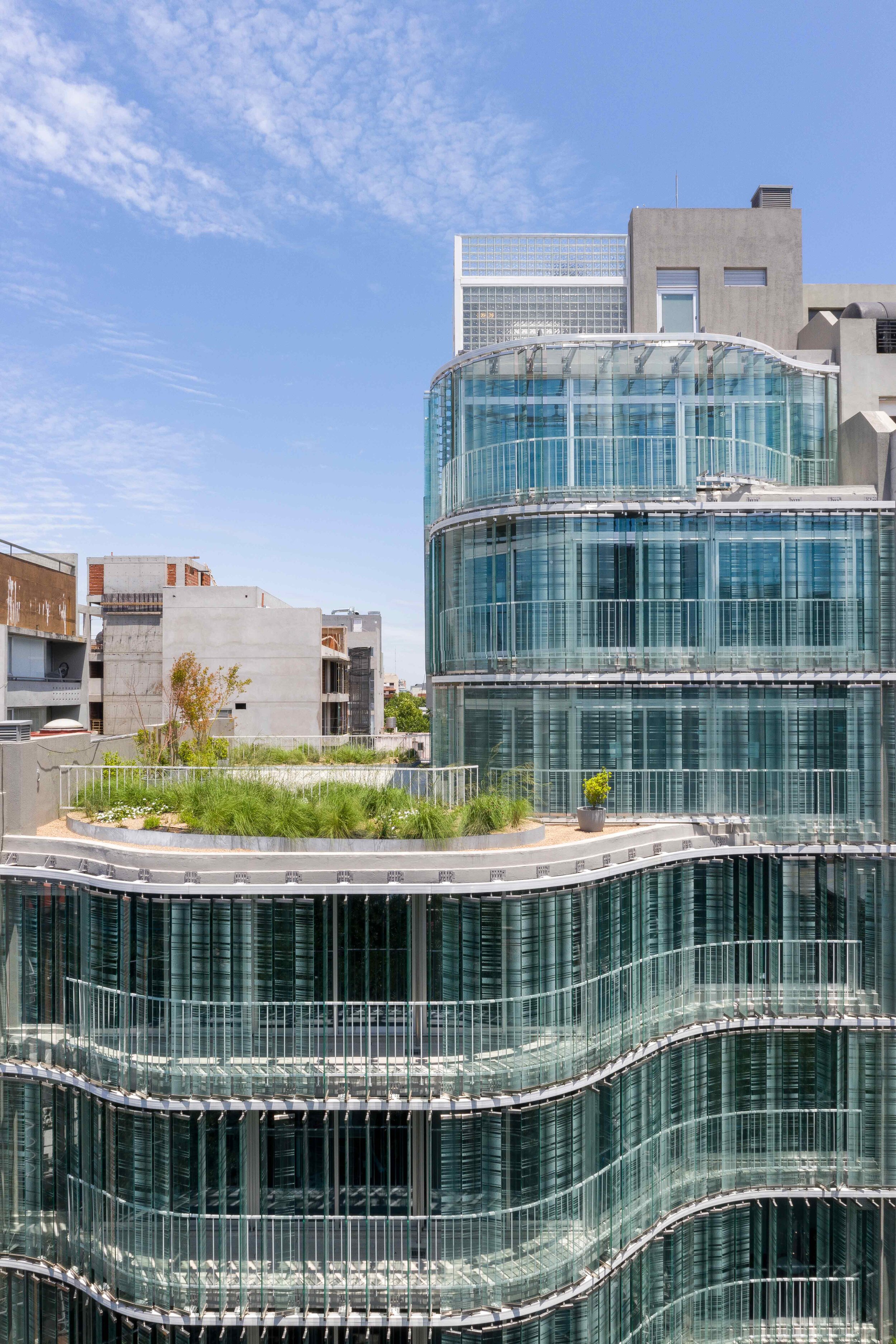
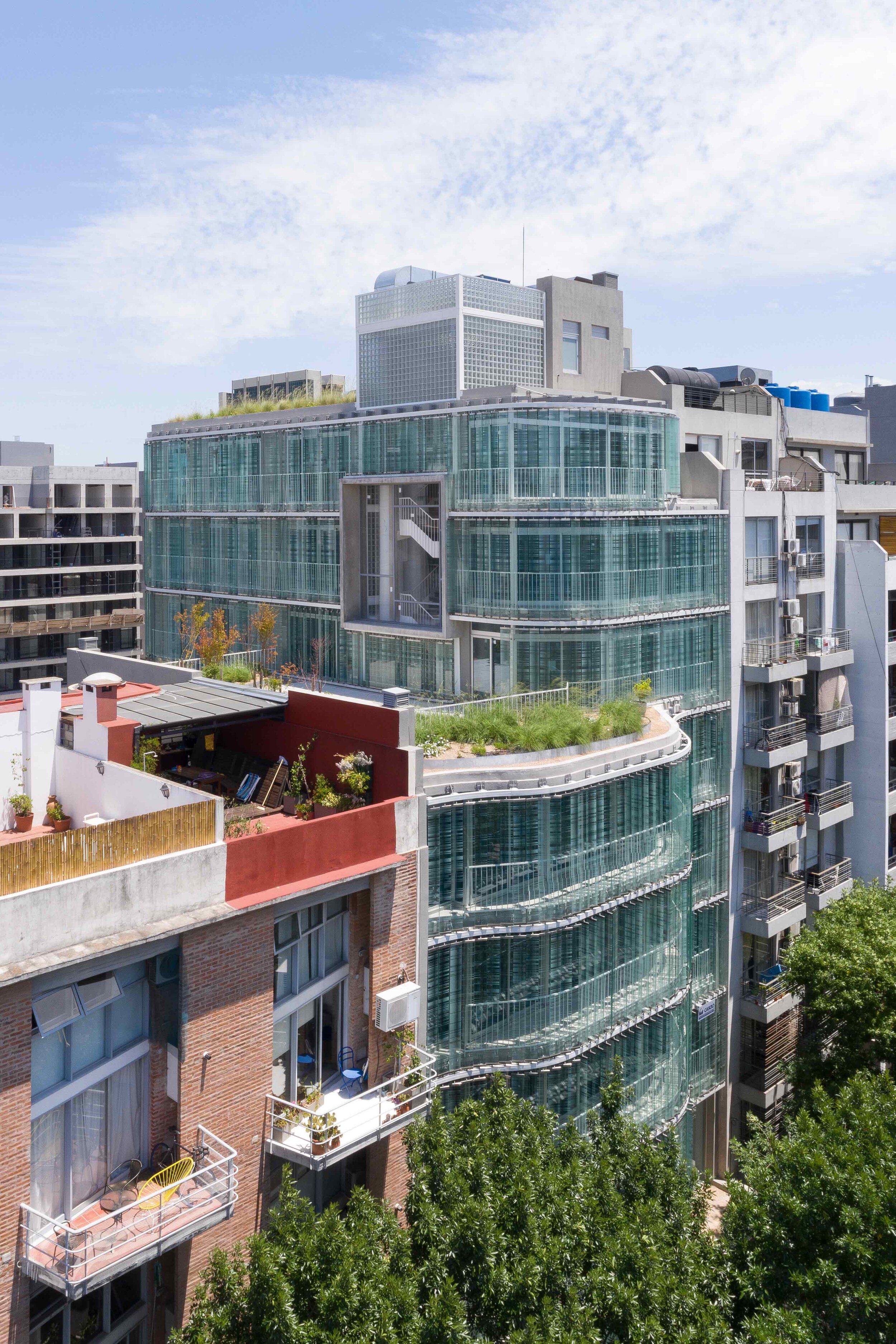
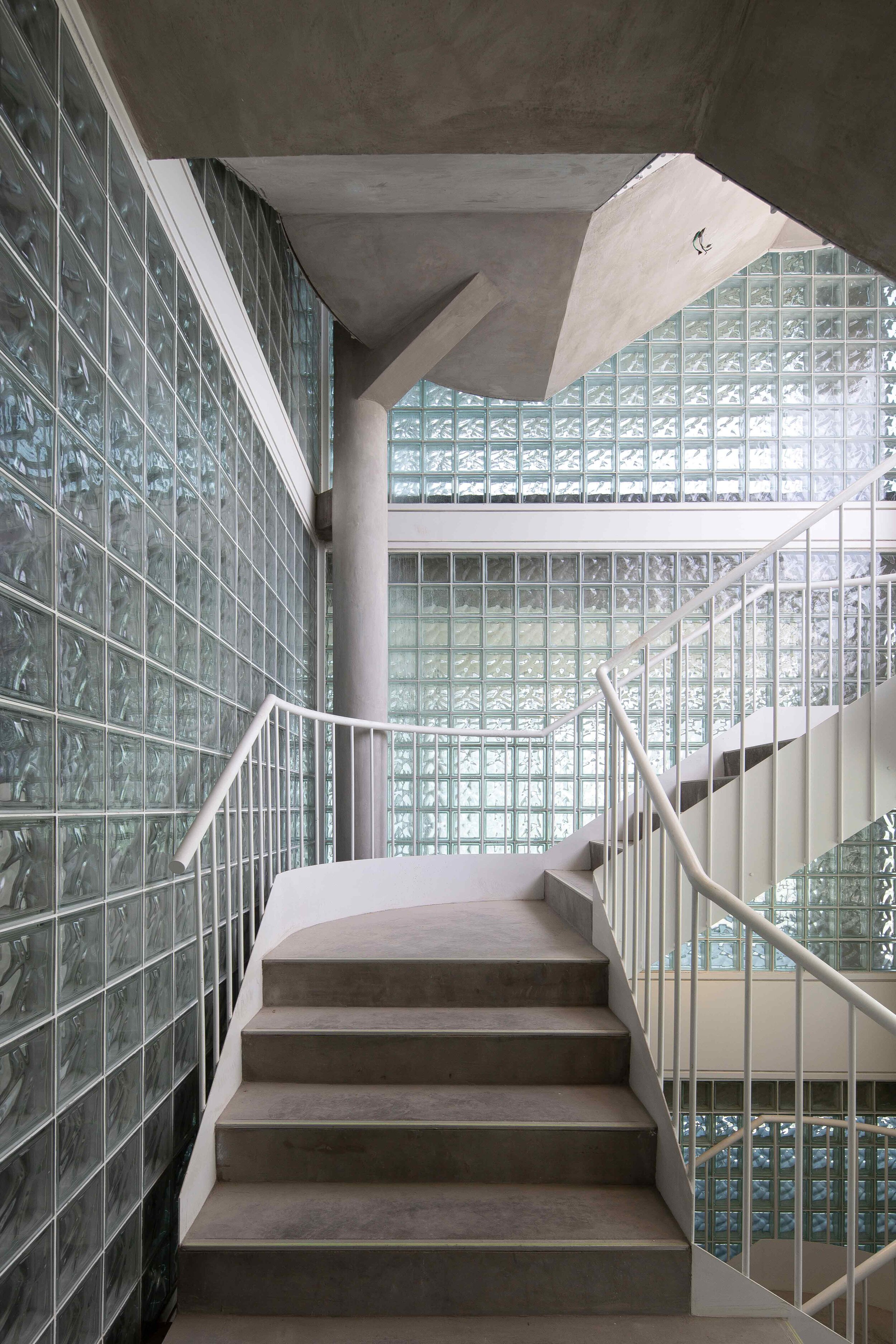
© Javier Agustin Rojas
Présentation du projet par Mariano Efrón lors des rencontres du Grand Prix AFEX
….PRIX SPÉCIAL DU JURY 2020..2020 JURY SPECIAL AWARD….
….ATELIER TANKA - CAMPUS SCOLAIRE, VALLÉE DU ZANSKAR, INDE
..ATELIER TANKA - SCHOOL CAMPUS - ZANSKAR VALLEY, INDIA….
….Situé à l'extrême nord de l'Inde, derrière les hauts sommets de l'Himalaya, le Zanskar est l'une des régions habitées les plus froides du monde. Sa situation géographique lui confère de plus un grand isolement : la succession des chaînes de montagnes culminant à 5000 mètres ne la rend accessible que par une seule route depuis la vallée voisine. Cette route, ouverte de juin à septembre, renferme ensuite la vallée sur elle-même sitôt que les premières neiges ont bloqué les cols. La construction du projet s’est déroulée pendant les deux mois d’étés des années 2011 à 2019, seules périodes où la vallée du Zanskar est accessible.
Le projet d’extension du campus a consisté en la construction d’une école élémentaire de 9 classes (de 2011 à 2014) et d’un dortoir de 7 chambres (de 2015 à 2019). L’objectif de l’association porteur du projet (AaZ - Aide au Zanskar) était de développer l’école existante par la construction de nouveaux locaux tout en favorisant une améliorer des conditions d’enseignement. La volonté des architectes, l’Atelier Tanka, était de permettre le prolongement de la scolarisation des élèves pendant la période hivernale où les températures peuvent atteindre -30°C, par la conception de bâtiments solaires passifs.
Le projet "Un campus au Zanskar" a été dessiné par Douchan Palacios, Vanessa de Castro Cerda et Romain Condomitti, de l'Atelier Tanka, pour un coût total de 500.000 euros.
..
Located in the far north of India behind the high peaks of the Himalayas, Zanskar is one of the coldest habited regions in the world. Its geographical location is also very remote. Due to a succession of mountain ranges culminating at 5,000 metres, it is only accessible by road from the neighbouring valley. Open from June to September, the valley is cut off as soon as the first snow blocks mountain passes. Construction took place from 2011 to 2019 during the two summer months, the only period when the Zanskar valley is accessible.
The campus expansion project includes the construction of a 9-classroom elementary school (2011-14) and a 7-bedroom dormitory (2015-19). The objective of the association carrying out the project (AaZ - Aide au Zanskar) was to redevelop the existing school by building new premises to provide better teaching facilities. Atelier Tanka wanted students to pursue their education during the winter period, when temperatures can reach -30°C, by designing passive solar buildings.
The "Un campus au Zanskar" project was undertaken by Atelier Tanka (Douchan Palacios, Vanessa de Castro Cerda and Romain Condomitti) at cost of 500,000 euros. ….

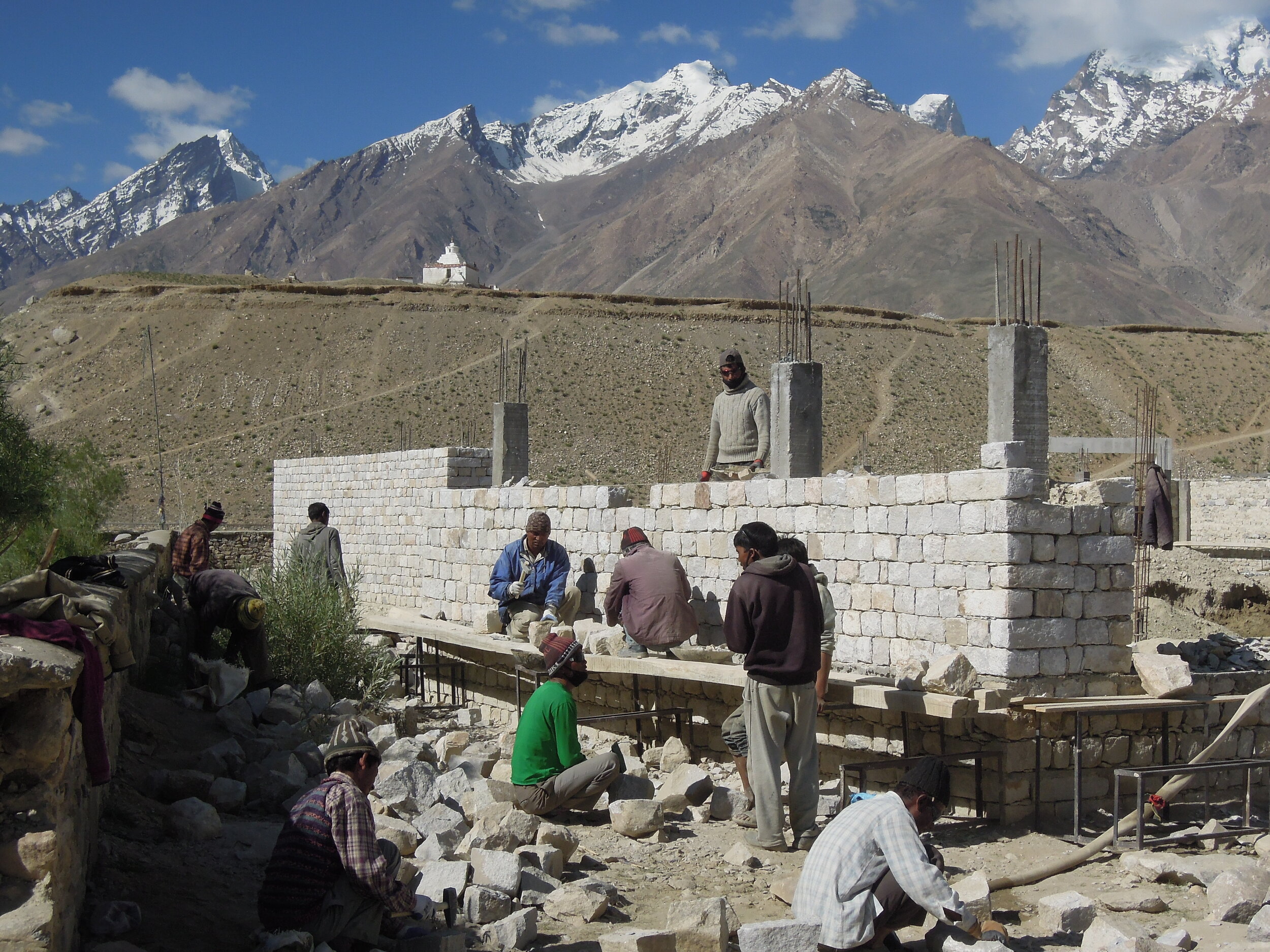

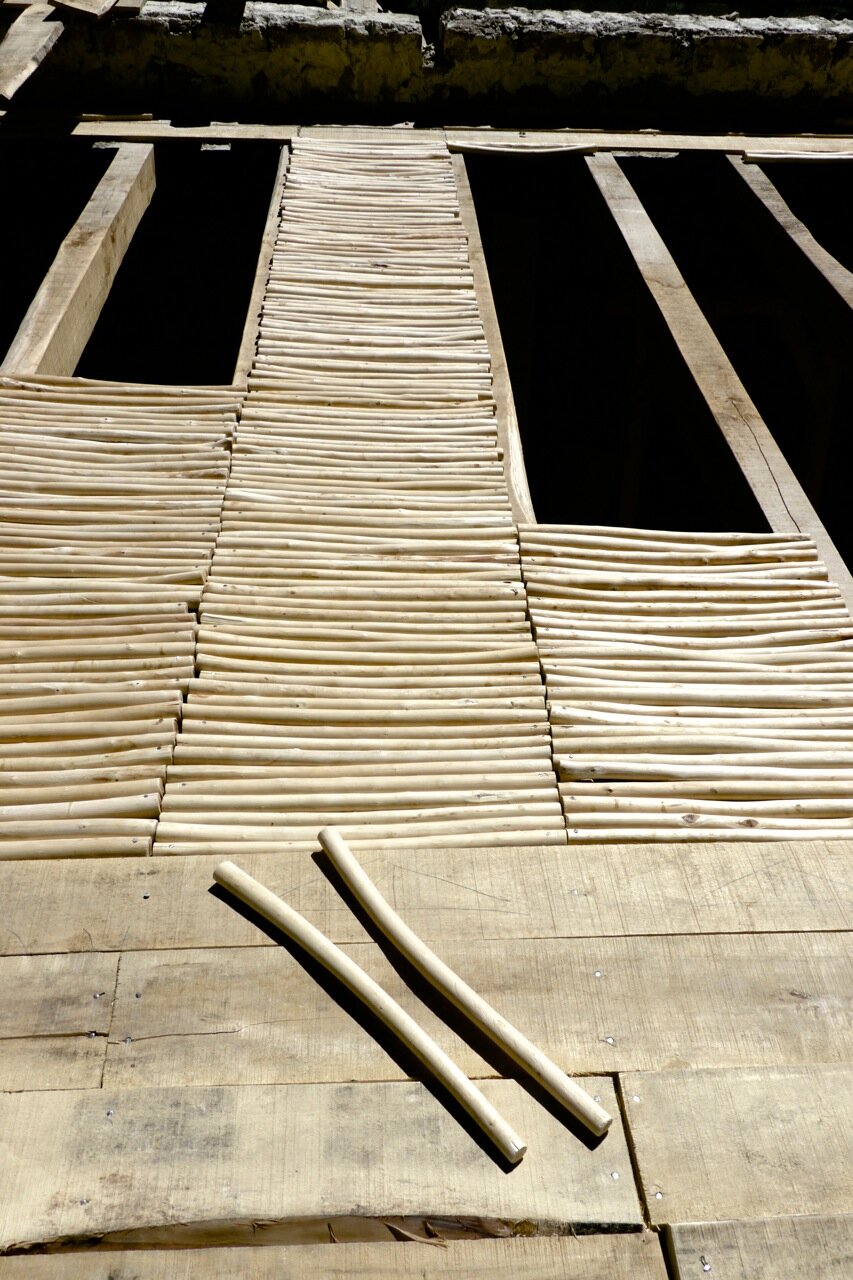



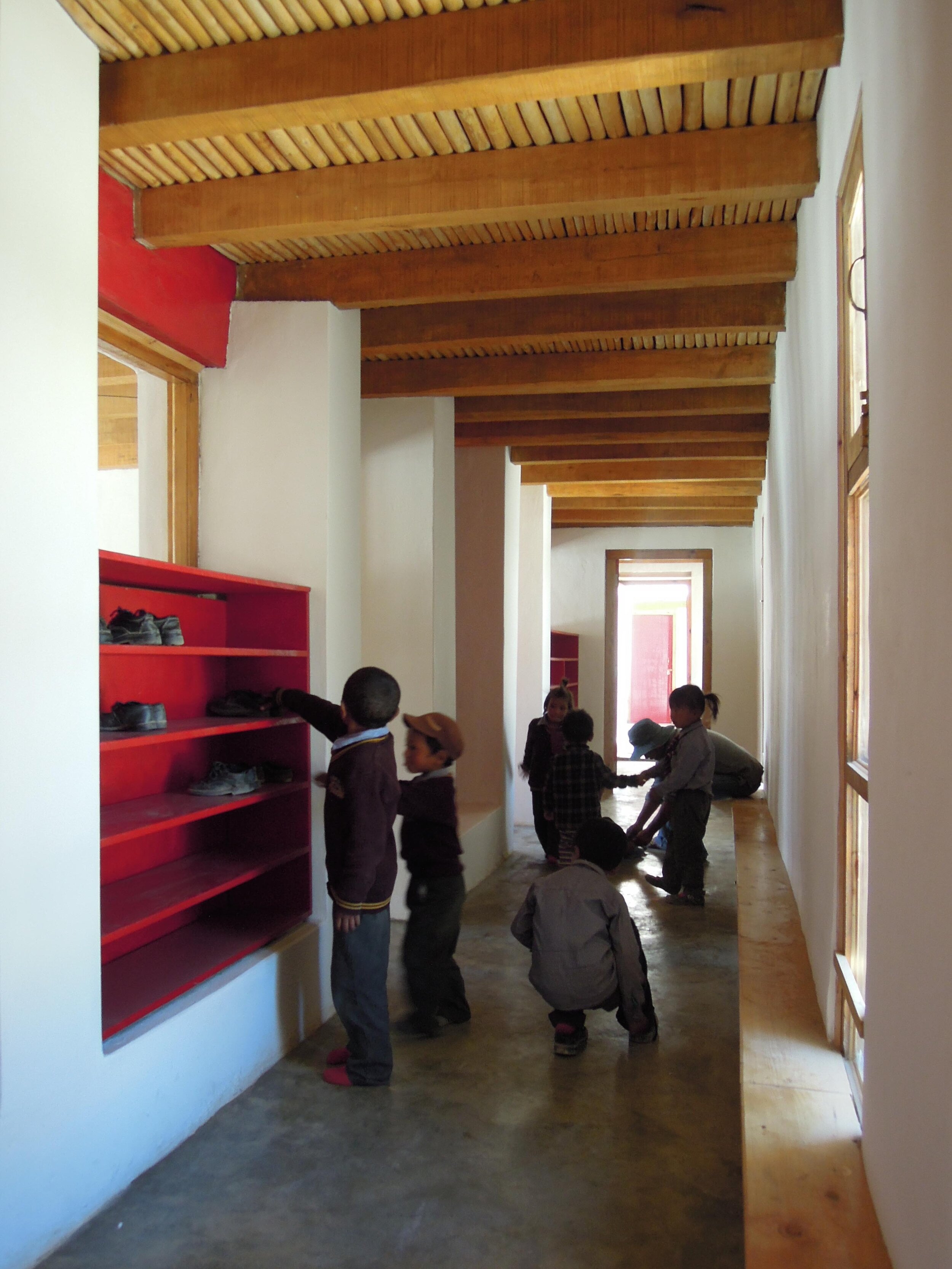


© Douchan Palacios
Présentation du projet par Douchan Palacios lors des rencontres du Grand Prix AFEX
….PALMARÈS DU GRAND PRIX AFEX 2020
..2020 AFEX GRAND PRIX PROJECTS….
….Dans le cadre de ses missions, l’AFEX, Architectes français à l’export, organise depuis 2010 le Grand Prix AFEX de l’architecture française dans le monde.
L’édition 2020 - organisée avec le soutien du Ministère de la culture & du Ministère de l’Europe et des affaires étrangères - récompense des bâtiments livrés à l’étranger par des architectes français entre le 1er janvier 2018 et le 31 décembre 2019.
Le Jury a dans un premier temps sélectionné dix réalisations de grande qualité, présentées ci-dessous par ordre alphabétique d’agence
And Studio, pour une reconversion de friche industrielle à Shanghai (Chine)
Arep, pour la gare TGV des J.O. à Pékin (Chine)
Architecturestudio, immeuble de bureaux à Buenos-Aires (Argentine) - Grand Prix AFEX 2020
Atelier Tanka, campus scolaire dans la vallée du Zanskar (Inde) - Prix spécial du jury 2020
ATTA-Tsuyoshi Tane, pour une maison individuelle à Tokyo (Japon)
AW², pour un éco-lodge à Guanacaste (Costa Rica)
EGA - Erik Giudice Architecture, pour un immeuble de bureaux à Malmö (Suède)
Ferrier Marchetti Studio, pour un immeuble de bureaux à Shanghai (Chine)
In Situ Architecture, pour une église à Nianing (Sénégal)
Voie Off Architectes, pour un campus scolaire à Sousse (Tunisie).
C’est ensuite mi-octobre au Palais Royal que sera remis officiellement le Grand Prix AFEX 2020 accompagné d’une exposition du 15 octobre au 15 décembre 2020 pour les Journées Nationales de l’Architecture. L’exposition débutera ensuite son itinérance internationale.
..
As part of its activities, since 2010 French Architects Overseas (AFEX) organizes the AFEX Grand Prix for French architecture throughout the world.
Organized with the support of the Ministry of Culture and the Ministry of European and Foreign Affairs, the 2020 edition rewards buildings delivered abroad by French architects between 1st January 2018 and 31st December 2019.
The jury initially shortlisted the ten high-quality projects listed alphabetically below
And Studio - redevelopment of brownfield site in Shanghai (China)
Arep - Olympic Games TGV station in Beijing (China)
Architecturestudio - office building in Buenos-Aires (Argentina) - 2020 AFEX Grand Prix
Atelier Tanka - school campus in Zanskar Valley (India) - 2020 Jury Special Award
ATTA (Atelier Tsuyoshi Tane Architects) - private house in Tokyo (Japan)
AW² - eco-lodge in Guanacaste (Costa Rica)
EGA (Erik Giudice Architecture) - office building in Malmö (Sweden)
Ferrier Marchetti Studio - office building in Shanghai (China)
In Situ Architecture - church in Nianing (Senegal)
Voie Off Architectes - school campus in Sousse (Tunisia)
The 2020 AFEX Grand Prix will be officially conferred during the opening of the Journées Nationales de l’Architecture mid-October at the Palais Royal, followed by an exhibition from 15th October to 15th December 2020. The exhibition will subsequently begin its international itinerary. ….
….Les partenaires du Grand Prix AFEX 2020
..2020 AFEX GRAND PRIX PARTNERS….
Ministère de la Culture, Direction Générale des Patrimoines / Centre des Monuments Nationaux
Ministère de l’Europe et des Affaires étrangères
Ministère de la cohésion des territoires
Ministère de la transition écologique
Conseil National de l’Ordre des architectes
MAF - Mutuelle des Architectes Français
….LE PALMARÈS 2020 EN IMAGES
..2020 AWARDS PHOTOS….
….And Studio, pour une reconversion de friche industrielle à Shanghai (Chine)
..AND STUDIO - REGENERATION OF INDUSTRIAL SITE IN SHANGHAI (CHINA)….
….Le Yangtze River Delta Roadshow Center, d'And Studio, est un projet de requalification d'une ancienne imprimerie de soie à Shanghai. Le projet se situe au sud-ouest de la ville, bordé sur trois côtés par la rivière. La superficie totale est de 48 hectares, où l'on trouve plusieurs typologies de bâtiments ponctués d'espaces publics. La conception globale privilégie les formes et les matériaux industriels dans leur diversité, comme la brique ou le métal déployé. L'objectif de cet ensemble est de créer un centre de technologie et un parc industriel dynamique, dotés d'un théâtre multifonctionnel.
..
The Yangtze River Delta Roadshow Center by And Studio is a project to redevelop an old silk printing plant in Shanghai. The project is located in the southwest of the city, bordered on three sides by a river. The total area is 48 hectares punctuated by public spaces, where several types of buildings are located. The design intent favours different industrial forms and materials, such as brick and steel grills. The objective of this complex is to create a technology centre and a dynamic industrial park, endowed with a multifunctional theatre.
Yangtze River Center is a cultural project of 15,000m² located on the site of a former 17th century Ming Dynasty brick factory, located north of Shanghai. In 2018, the mayor of Shanghai chose this former industrial site to become the catalyzer of a large cultural project aimed at renovating and boosting several villages in the Shanghai region. Two years ago, we were contacted by the Shanghai Construction Group (the project developers) to provide them with ideas for a new concept and share with them our vision for the potential that the site could have. AND STUDIO played as an active participant in the entire development process, with the role of architect, artist, engineer, and strategist. During the visit of the site, wandering between empty buildings, we were immediately seduced by the composition of the spaces and the poetic decadence of the site, by the still very present soul of the old factory.
The original intention of the owner was to destroy the whole site and our objective was to convince him about the interest of a metamorphosis. To keep, restructure the framework, and complete the urban structure to reinvent a village, a place for exchange and encounters. We worked on developing the functionalities of each of the buildings. At the same time, we have elaborated and perfected the urban composition of the site: the perspectives, the sequences of solids and voids, the landscape, the architecture. The materials and their alternations, the light, the memento of the original site.
To create sensitive spaces, along a path, both dynamic and conducive to contemplation and wandering. We have used local materials, notably bricks, highlighting the history of the site. We used mainly natural ventilation, water recycling, and tried to minimize the impact on the environment, using renewable energies. We have been awarded the LEED Platinum certification for the entire neighborhood. In the last seven years, only ten other buildings in China have received it.
The project consists of twelve buildings assembled together following different functions: A coworking area, distributed around a green patio, a combination of orange bricks, metal profiles, and plaster that emphasize the volume. The spaces are organized around a sequence of gardens treated in the traditional Chinese style. Several restaurants are located along with the lain ax. Their interiors highlight the industrial soul of the venue. A conference room, with a capacity of 800 people, can be transformed according to the needs of the client.
Several art galleries lead to a large showroom and a cafeteria facing a water basin. Heavily polluted, it has been thoroughly purified. A multifunctional hall with a two-sided scene opens onto the park as its’ natural extension. A broadcasting studio, reveals in the background the emblematic element of the original project, the high chimney of the brick factory. Today unused, it remains a witness to the site's industrial past. ….














© MLee Studio
Présentation du projet par Duccio Cardelli lors des rencontres du Grand Prix AFEX
….Arep, pour la gare TGV des J.O. à Pékin (Chine)
..AREP – OLYMPIC GAMES TGV STATION IN BEIJING (CHINA)….
….La gare TGV de Qinghe, nouveau pôle d’échanges majeur de Pékin de près de 300M€ et 150 000m², a été conçue pour servir l’organisation des Jeux Olympiques d’hiver de 2022. La ligne s’intègre au schéma de transport défini à l’échelle de la mégalopole Jing-Jin-Ji qui réunit Pékin, la province du Hebei et Tianjin.
Le projet s’insère dans un environnement complexe tout en répondant aux enjeux d’accessibilité, d’intermodalité, de fluidité, de sécurité, d’image et de développement urbain. L’inclinaison de la toiture et la façade entièrement vitrée permettent d’offrir des perspectives lointaines dirigées vers la montagne Xishan.
..
A major new 300M€ transport hub in Beijing, the 150,000m² Qinghe TGV Station was designed for the 2022 Winter Olympic Games. The new line fits into the transport network of the Jing-Jin-Ji megalopolis which links Beijing, Hebei province and Tianjin.
The project fits into a complex environment to meet the challenges of accessibility, transport interchanges, fluidity, security, image and urban development. The inclined roof and the fully glazed facade provide distant views of the Xishan Mountain. ….
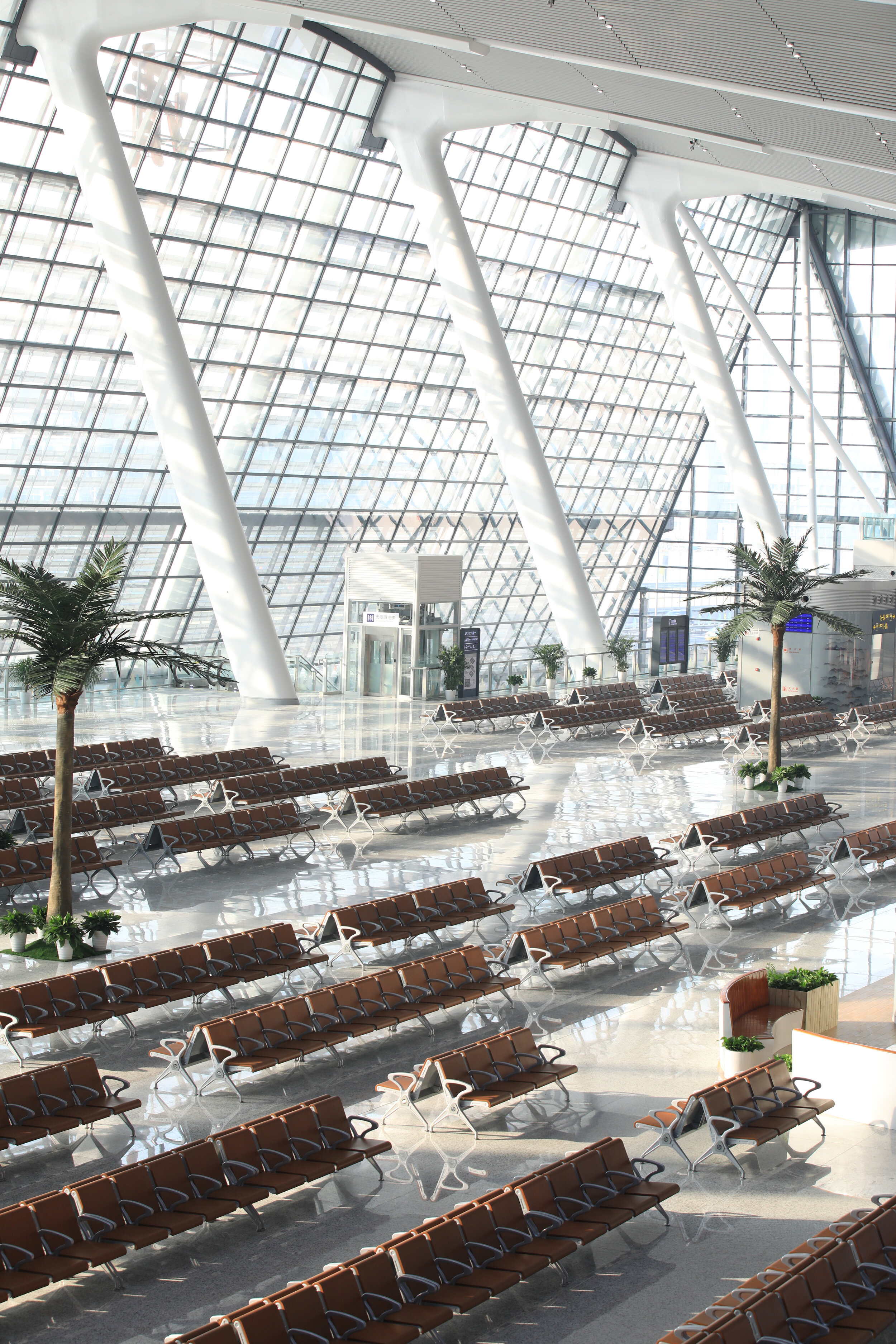
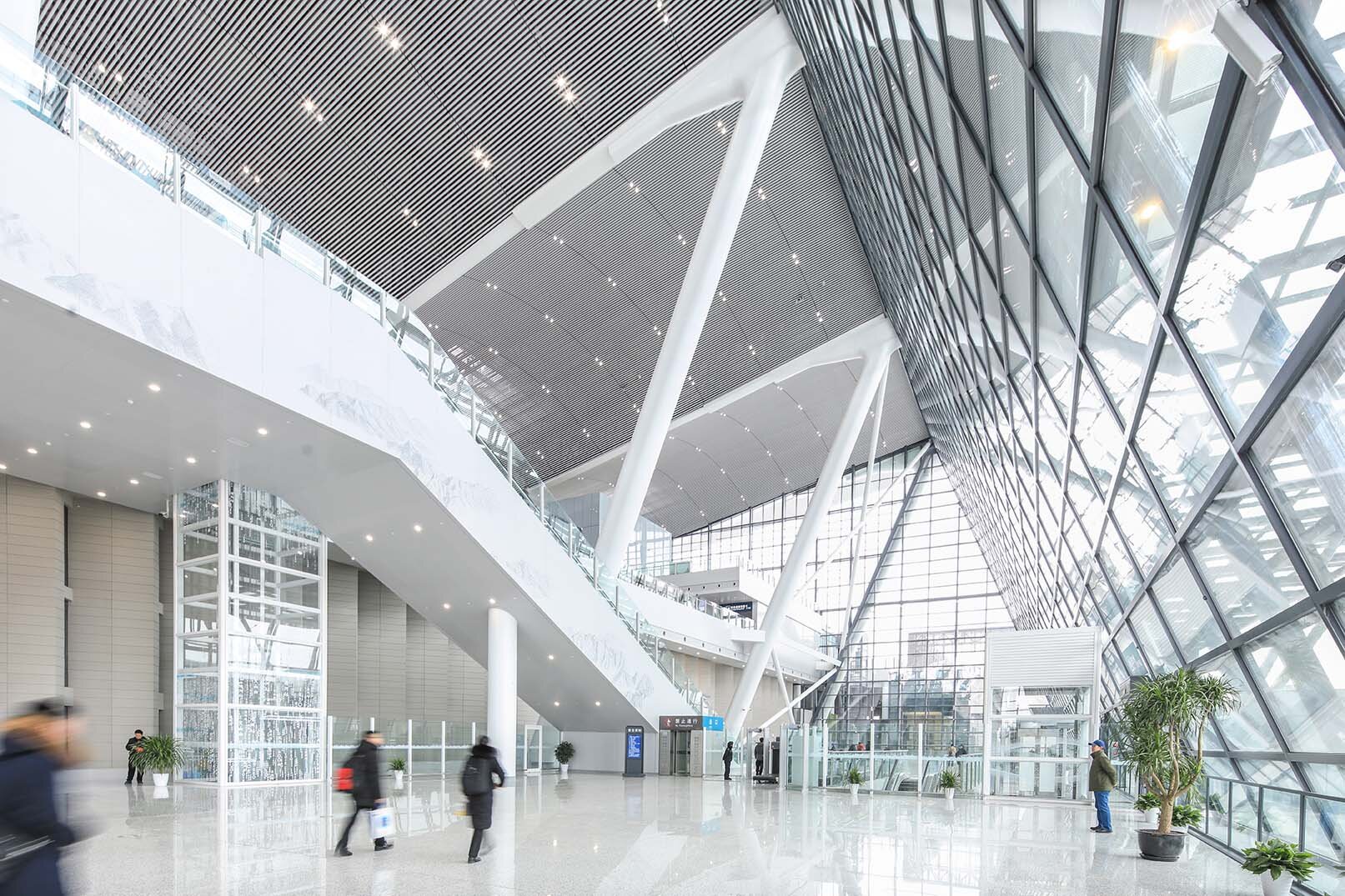

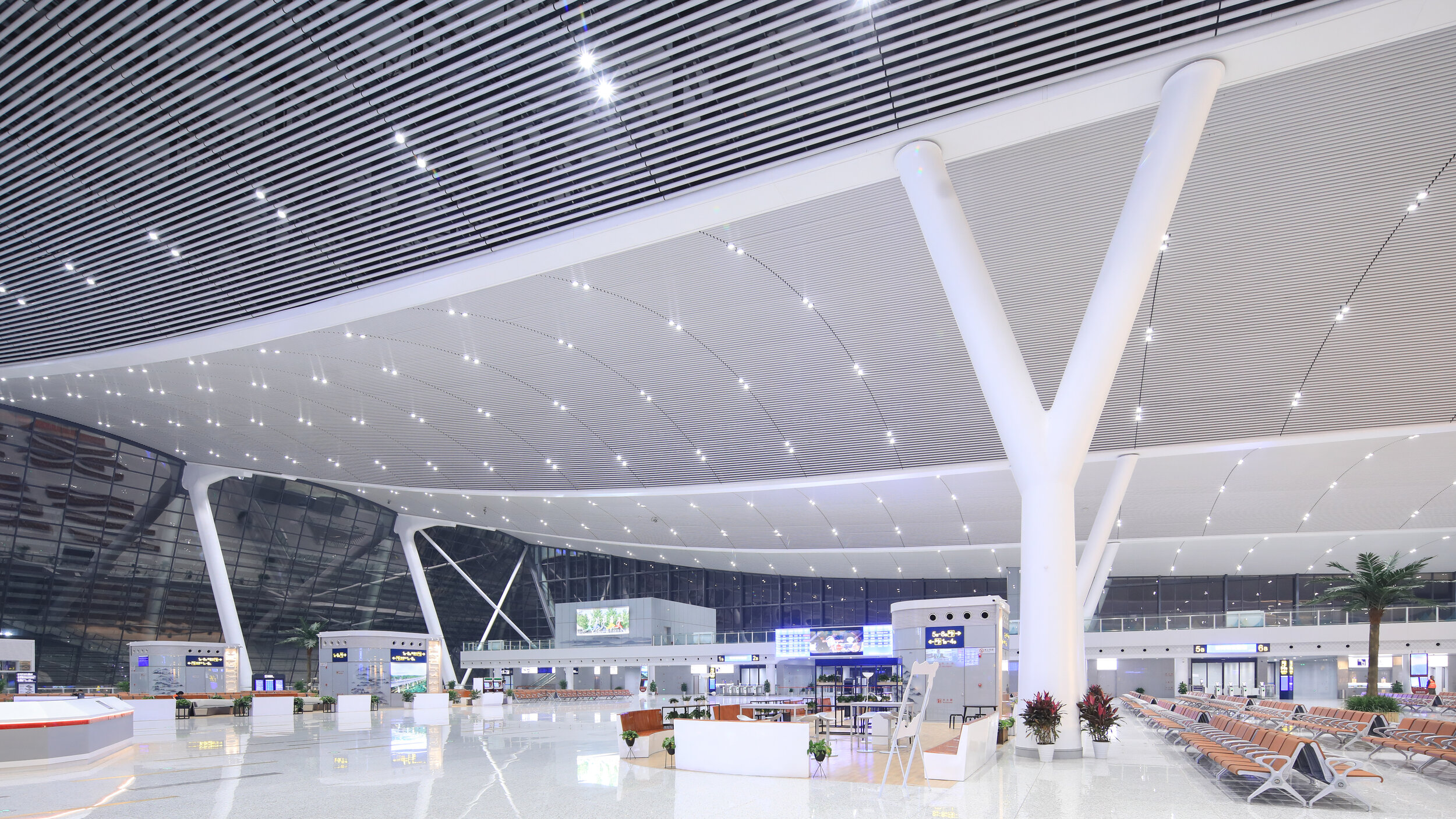

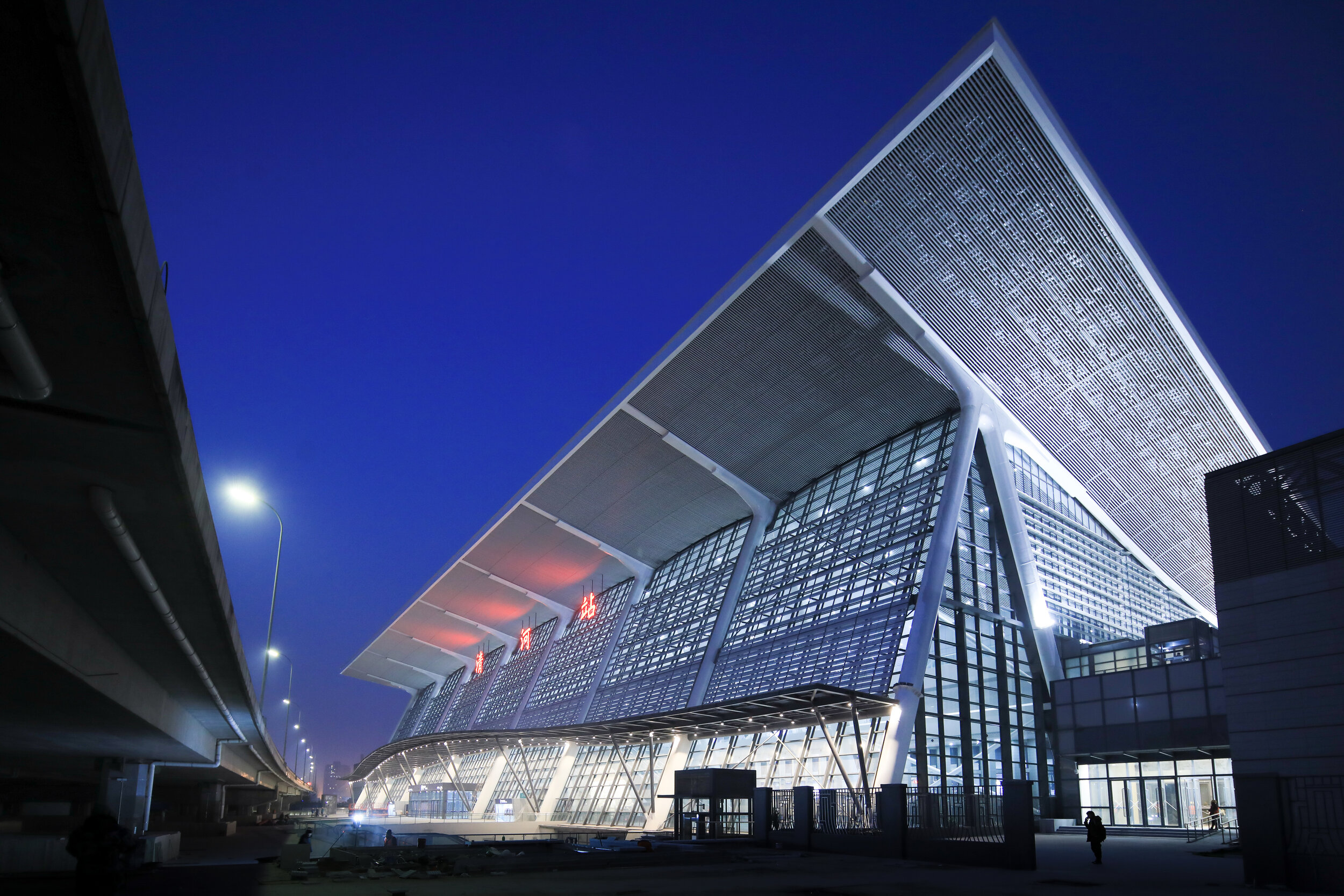

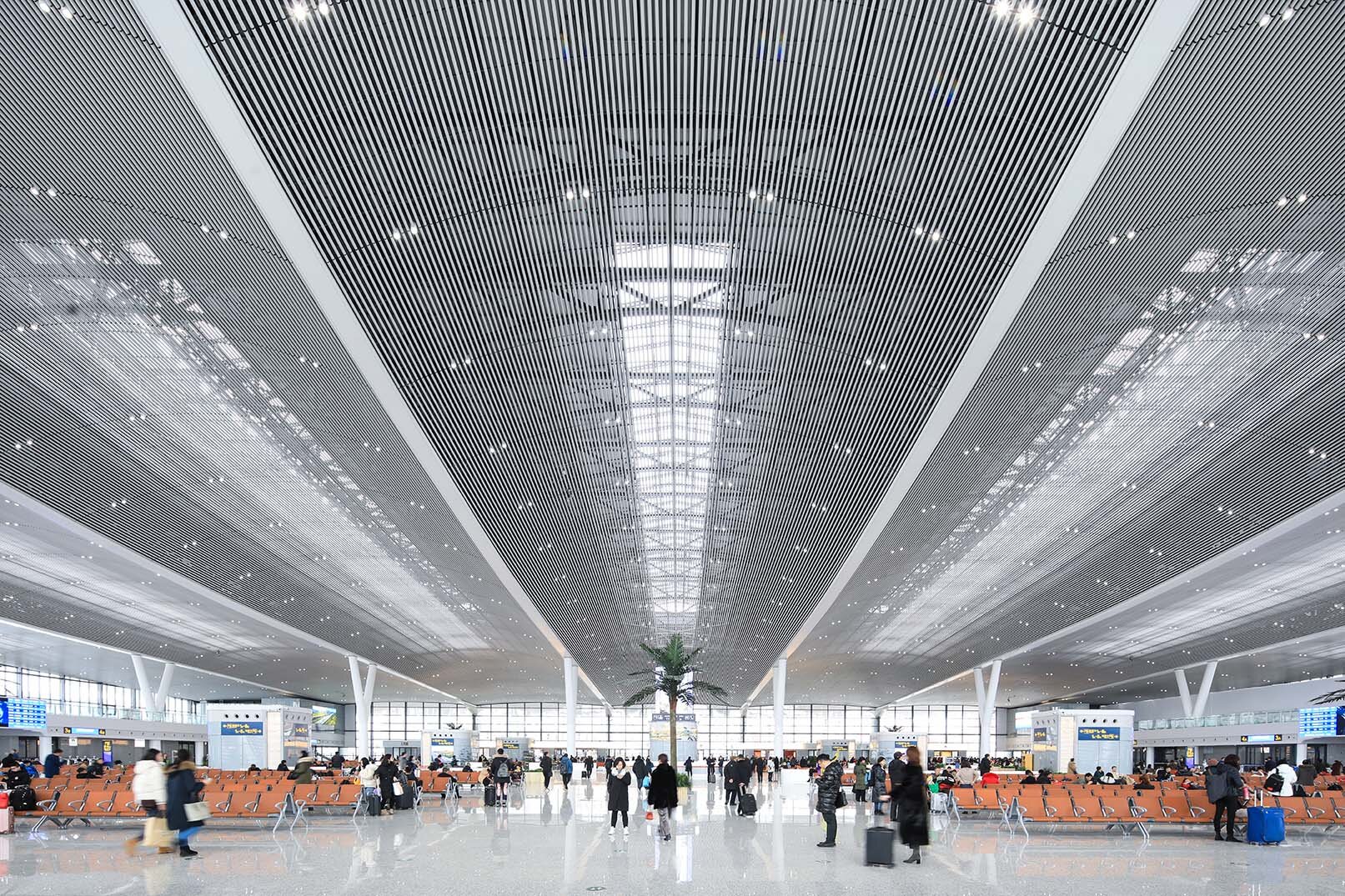
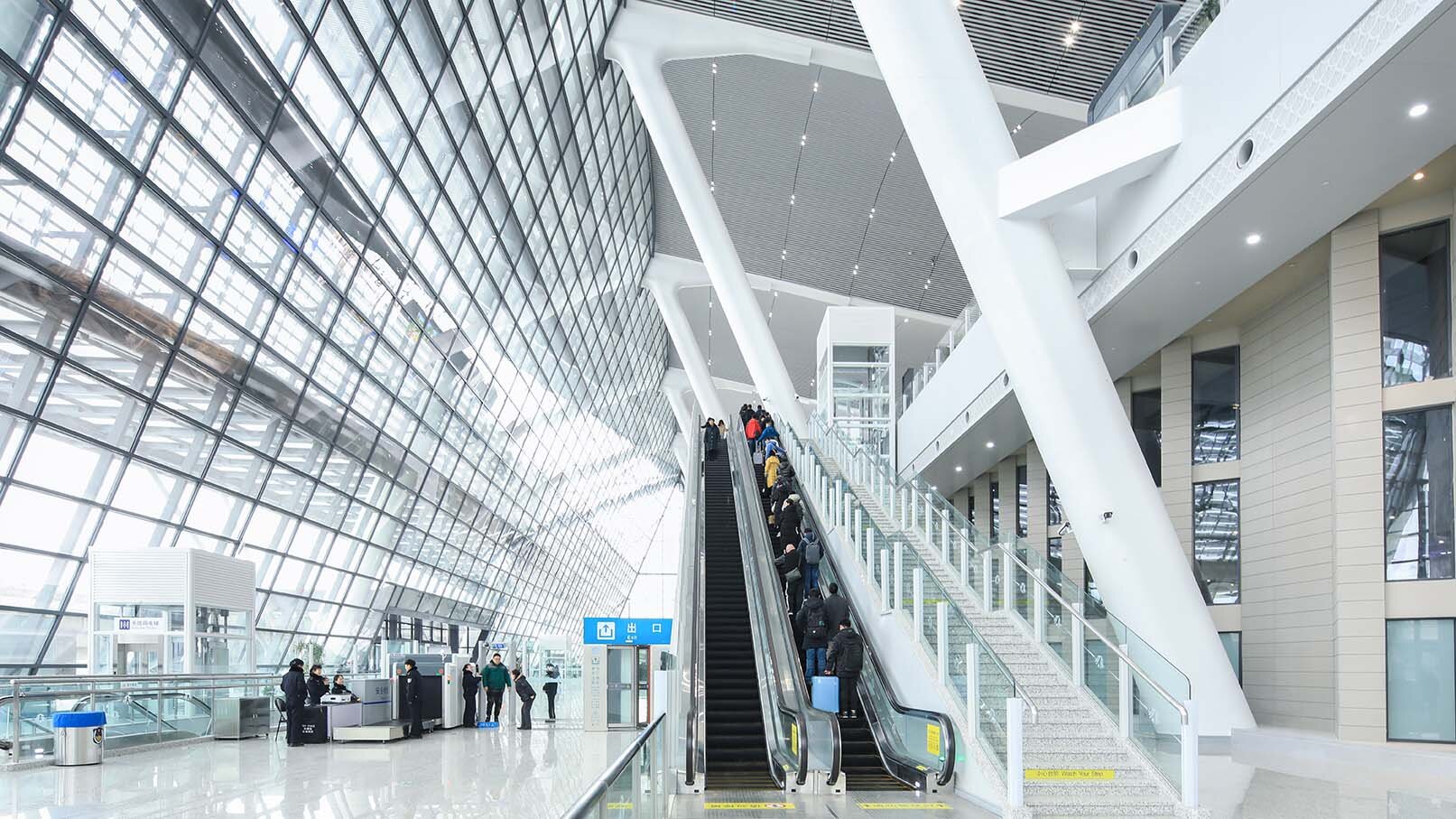
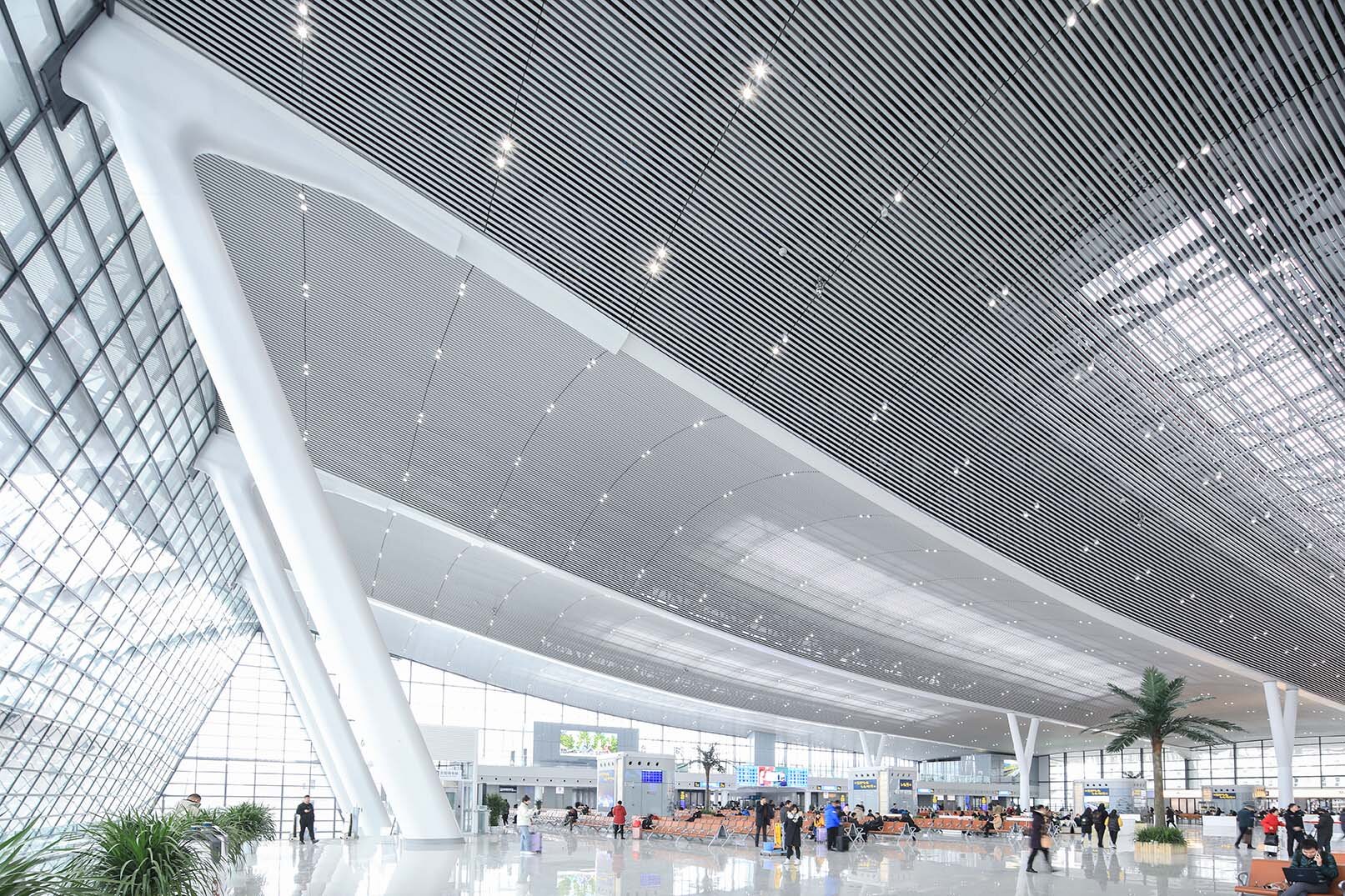
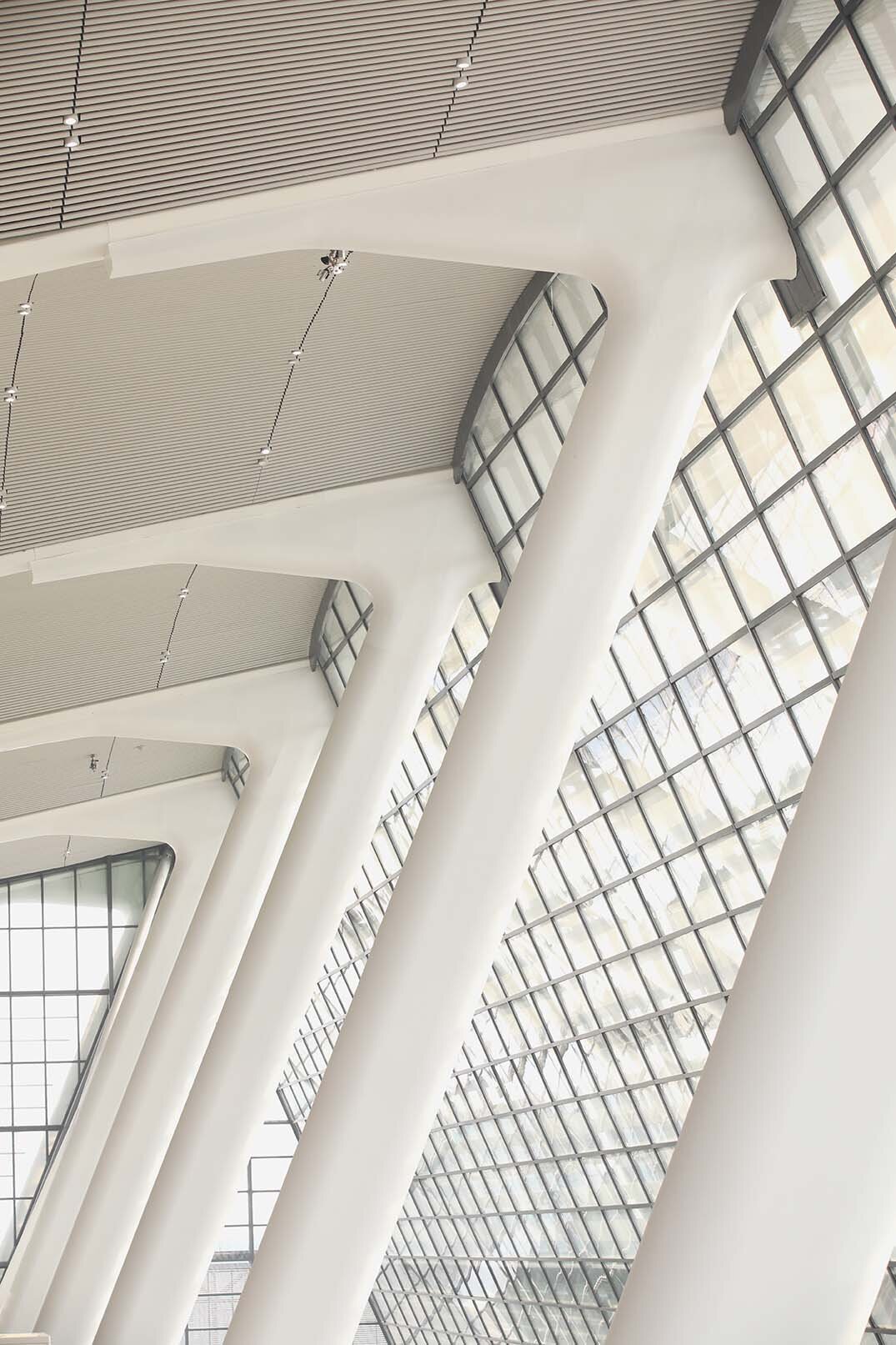
© Qiuhao Xiong
Présentation du projet par François Pradillon lors des rencontres du Grand Prix AFEX
….ATTA - Atelier Tsuyoshi Tane Architects, pour une maison individuelle à Tokyo (Japon)
..ATTA (ATELIER TSUYOSHI TANE ARCHITECTS) - PRIVATE HOUSE IN TOKYO (JAPAN)….
….Située à une dizaine de kilomètres du centre-ville de Tokyo, la maison Todoroki, dessinée par Atelier Tsuyoshi Tane Architects, a été réalisée en 2017-2018, pour un montant dépassant le million d'euros. Le premier niveau offre un espace largement ouvert. Le deuxième niveau est dédié à la chambre parentale bénéficiant de huit orientations différentes grâce à de larges fenêtres. Le troisième niveau bénéficie quant à lui de six orientations et offre les alcôves accueillant les enfants de la famille.
..
Located about ten kilometres from downtown Tokyo, the Todoroki house (built 2017-18) was designed by Atelier Tsuyoshi Tane Architects at a cost exceeding one million euros. The first level comprises a wide-open space. Dedicated to the master bedroom, the second level benefits from eight different orientations due to its large windows. The third level benefits from six orientations and provides alcoves to accommodate the children. ….
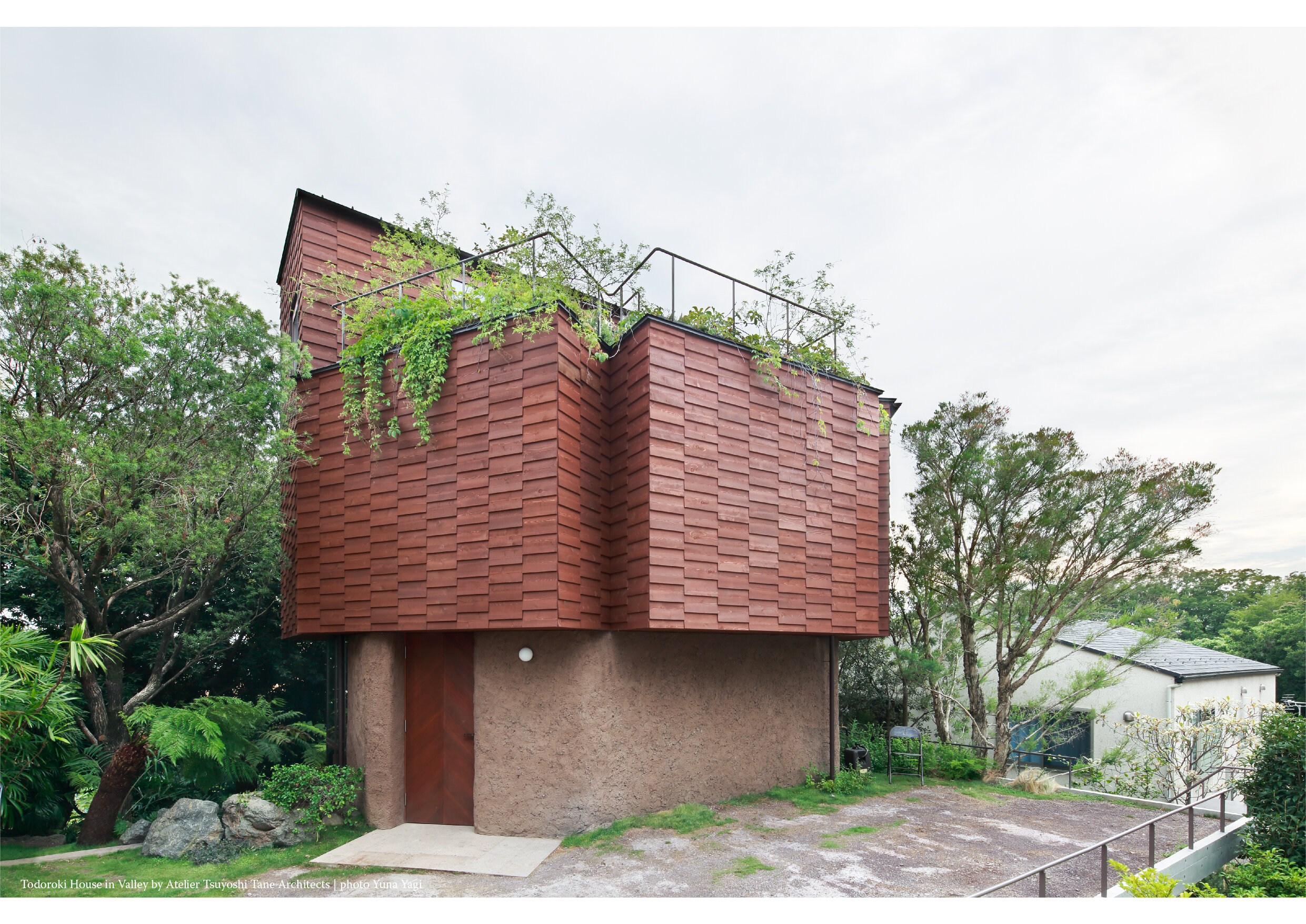
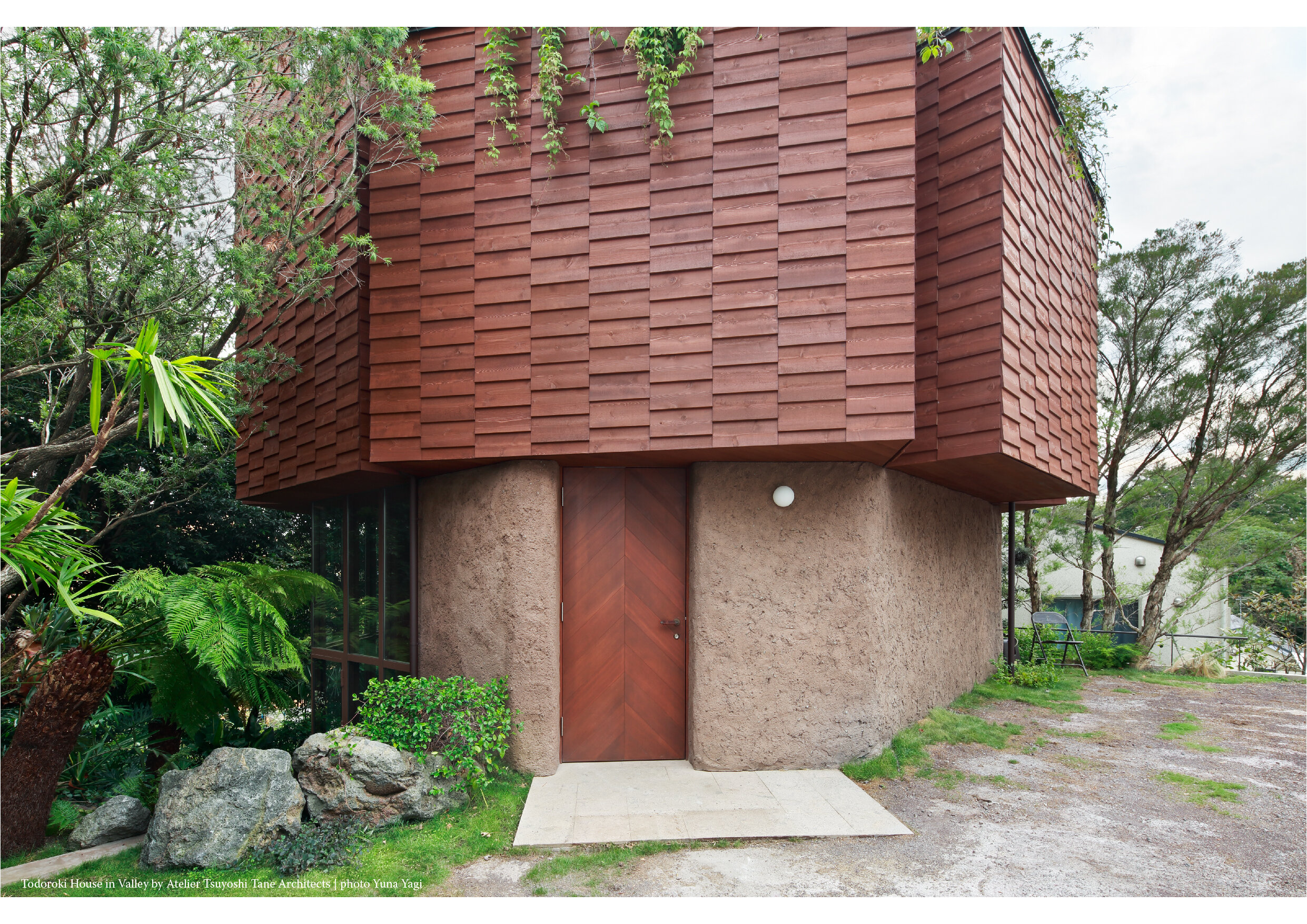
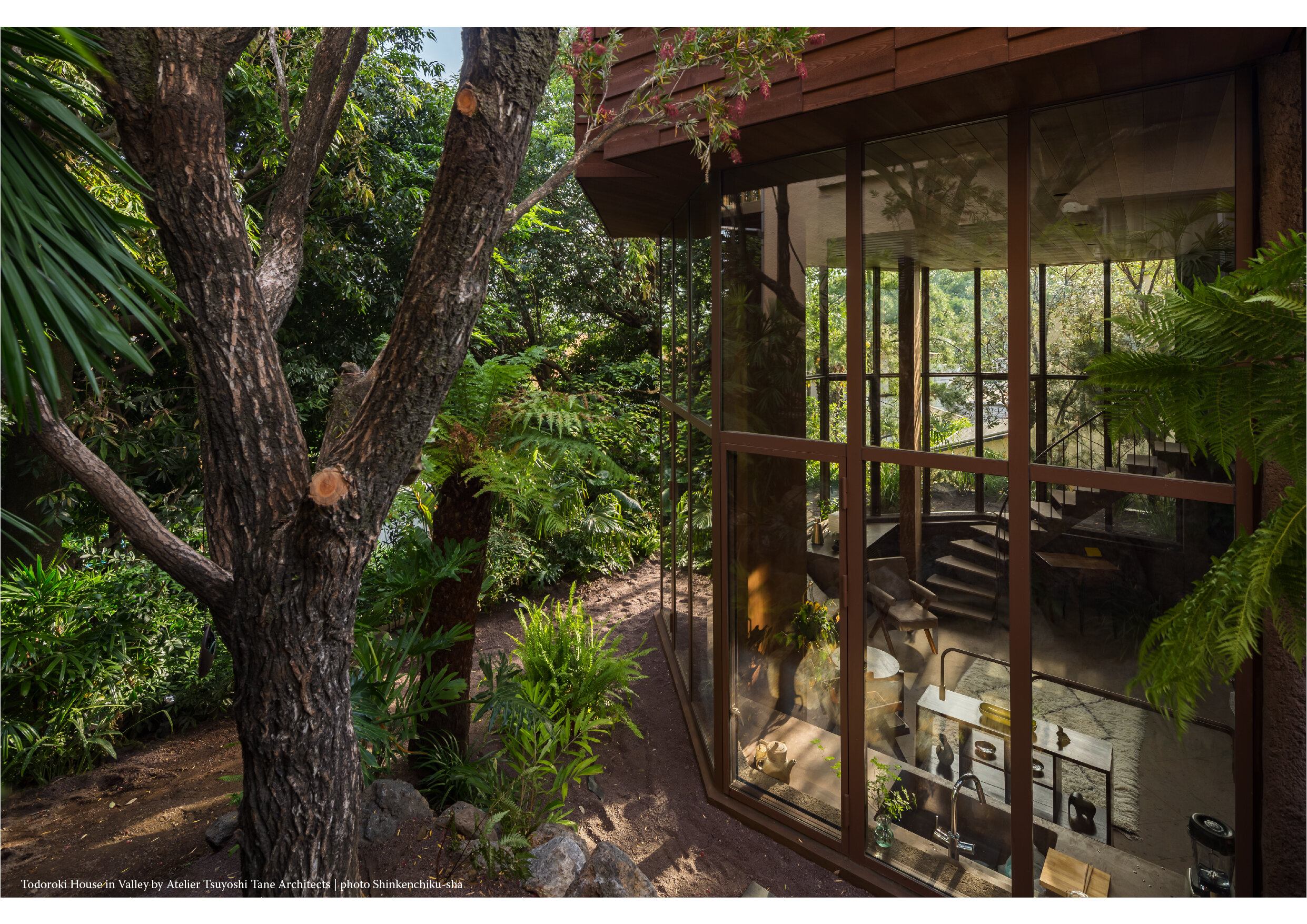
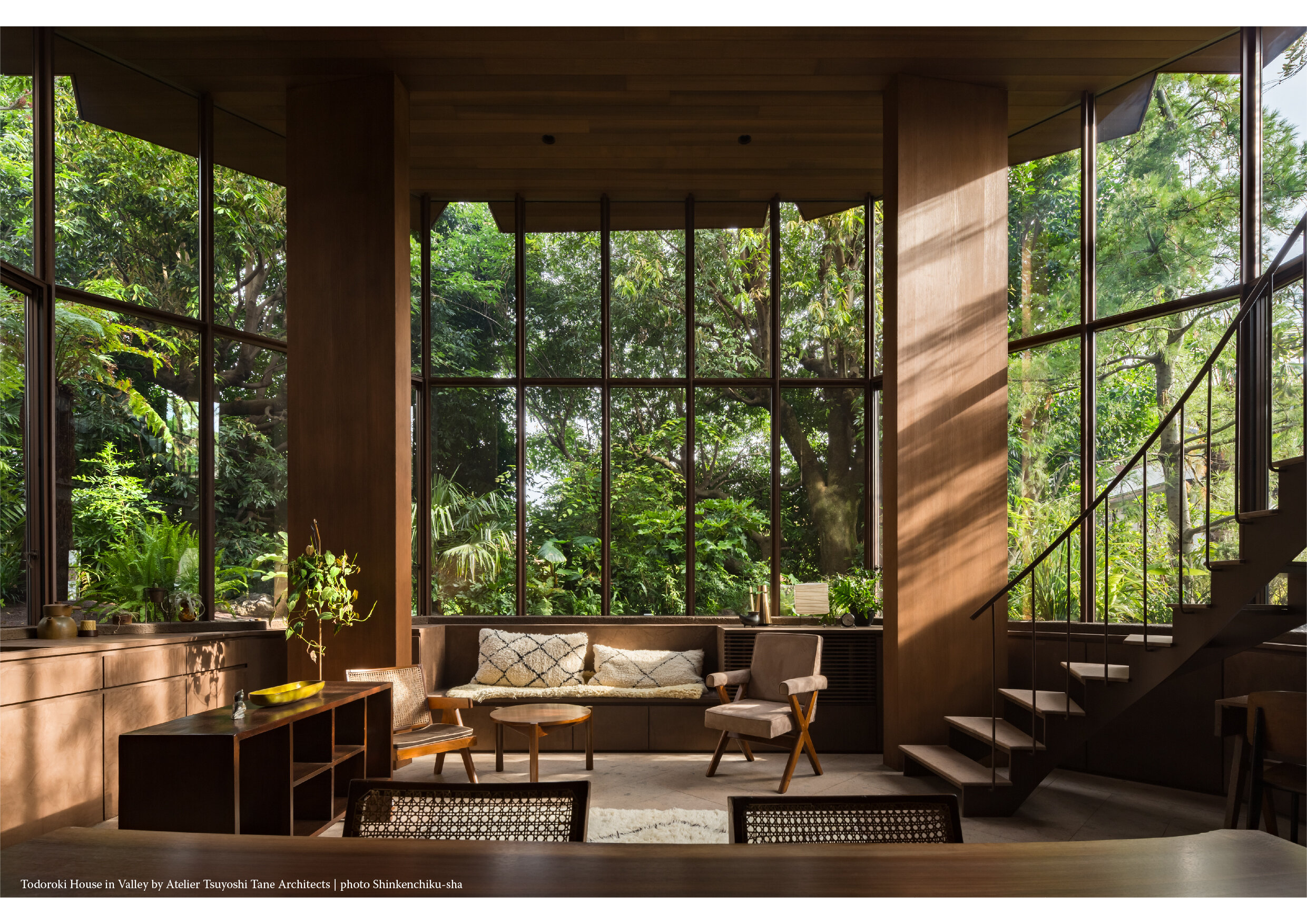
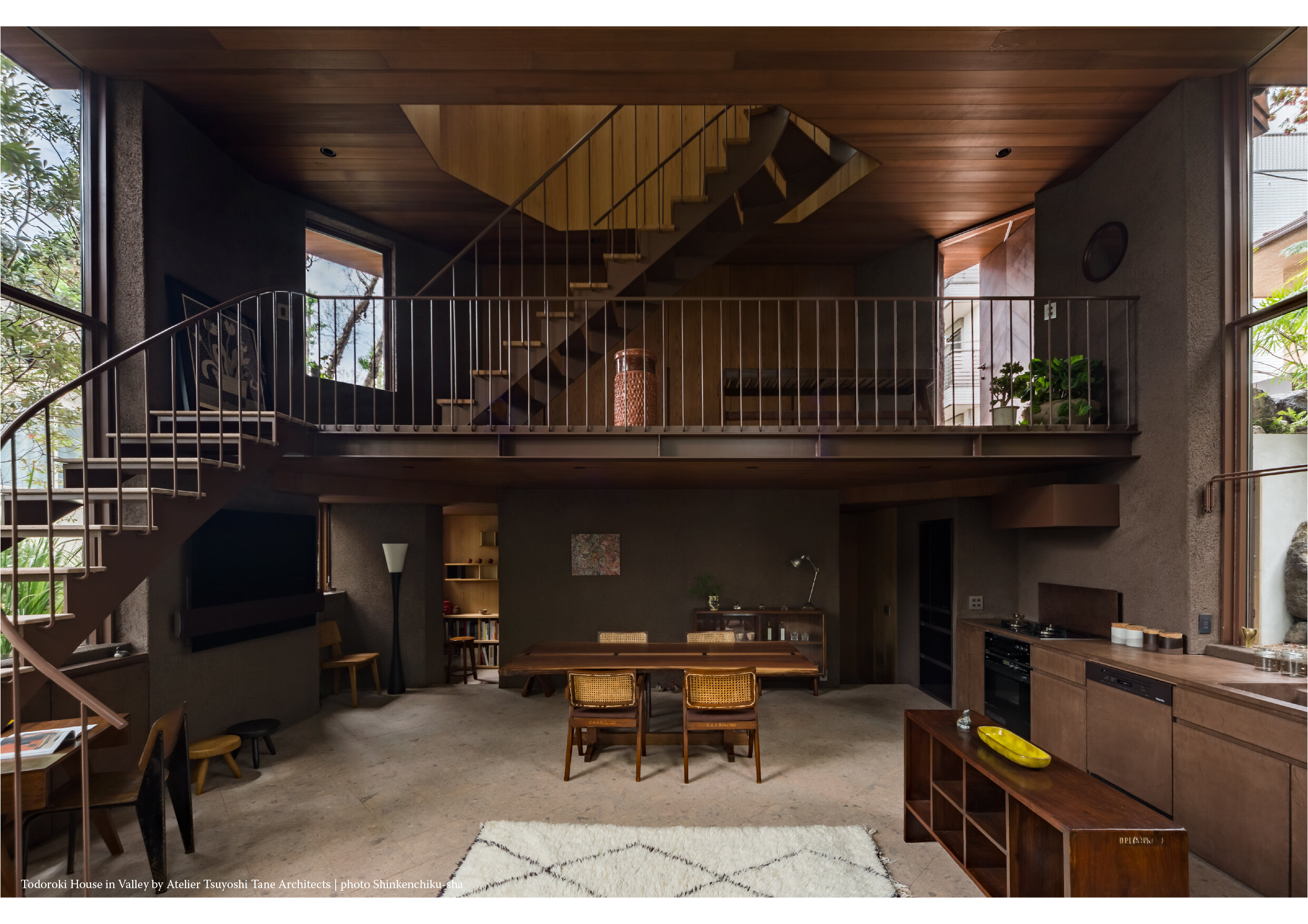
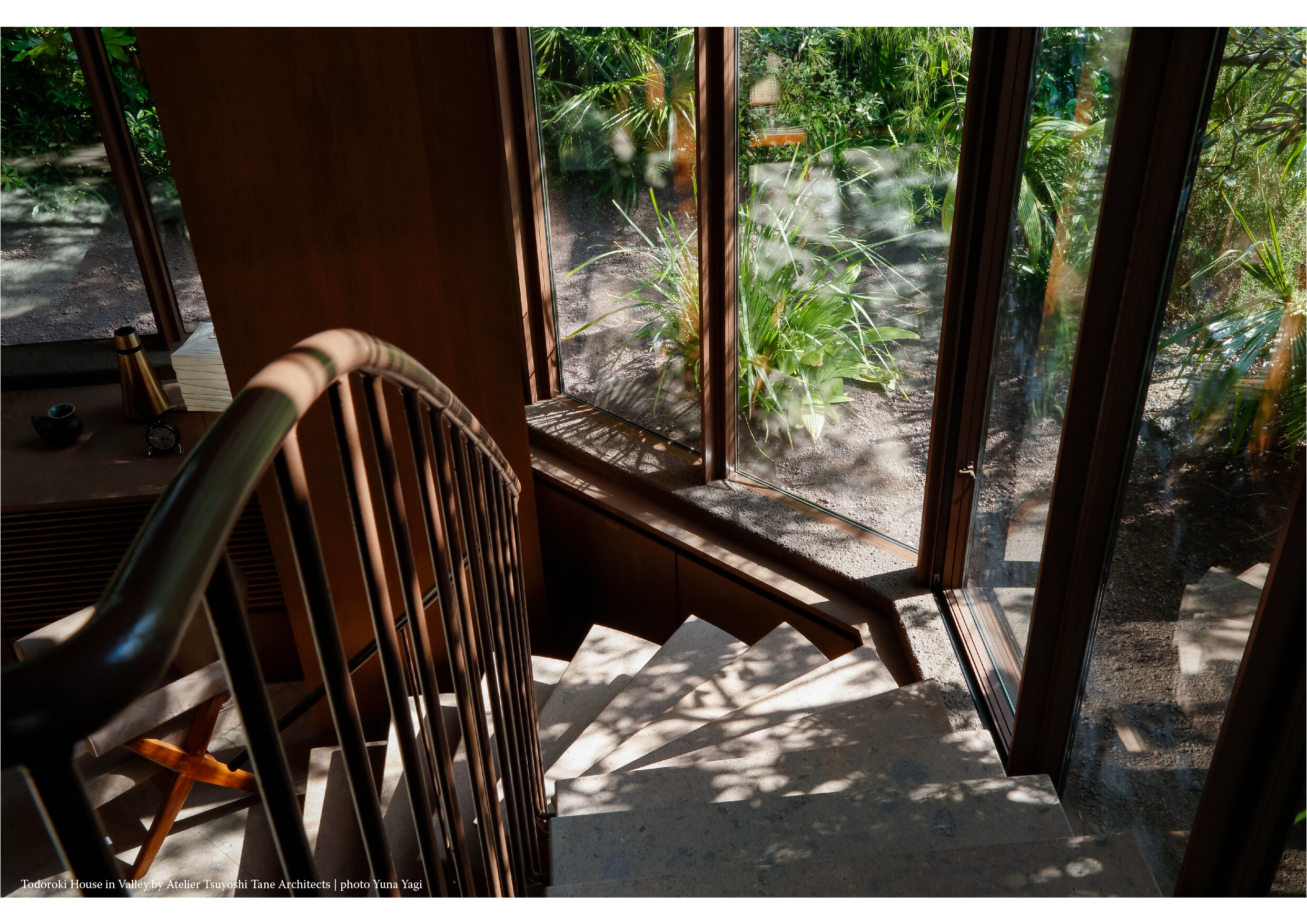
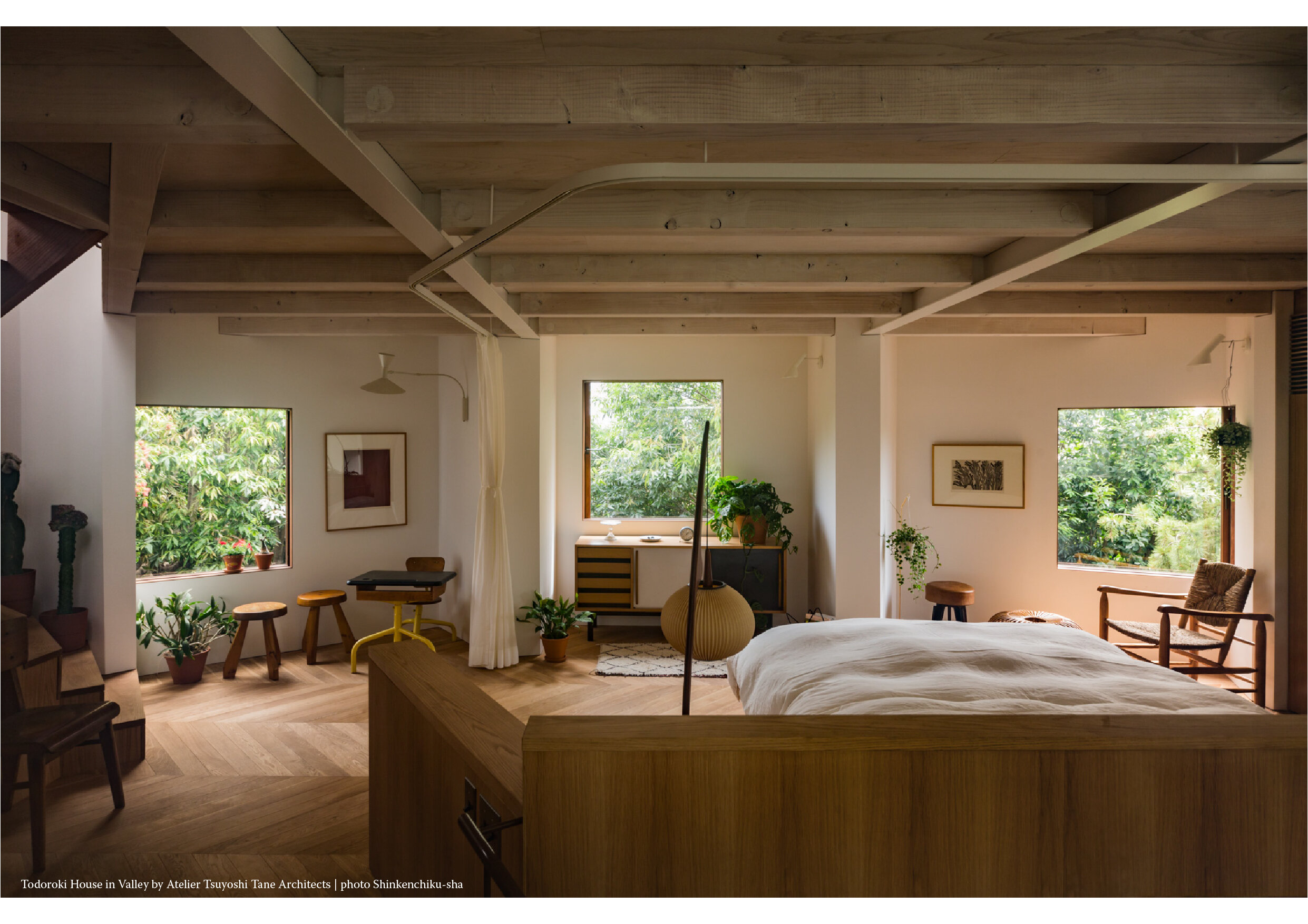

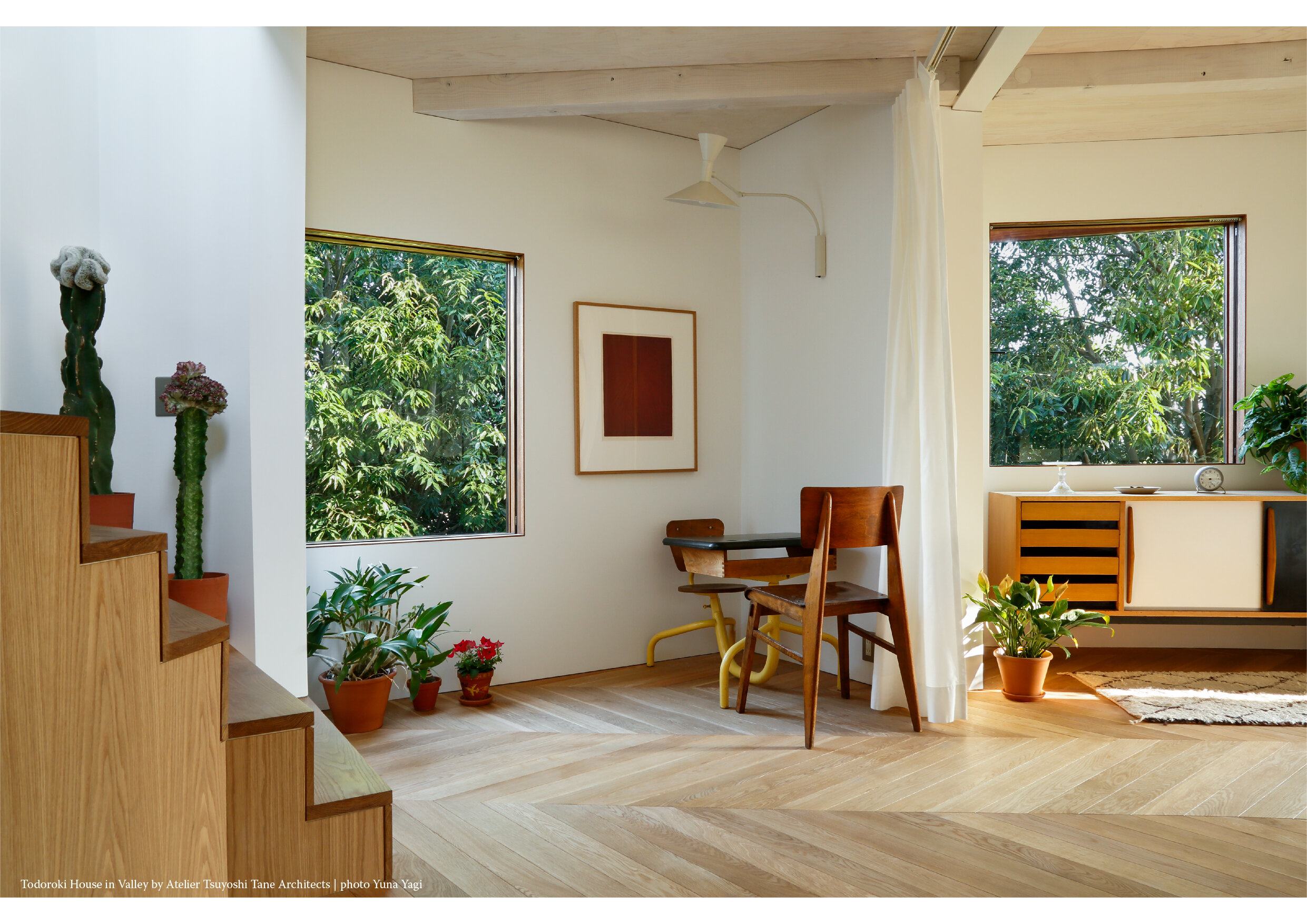
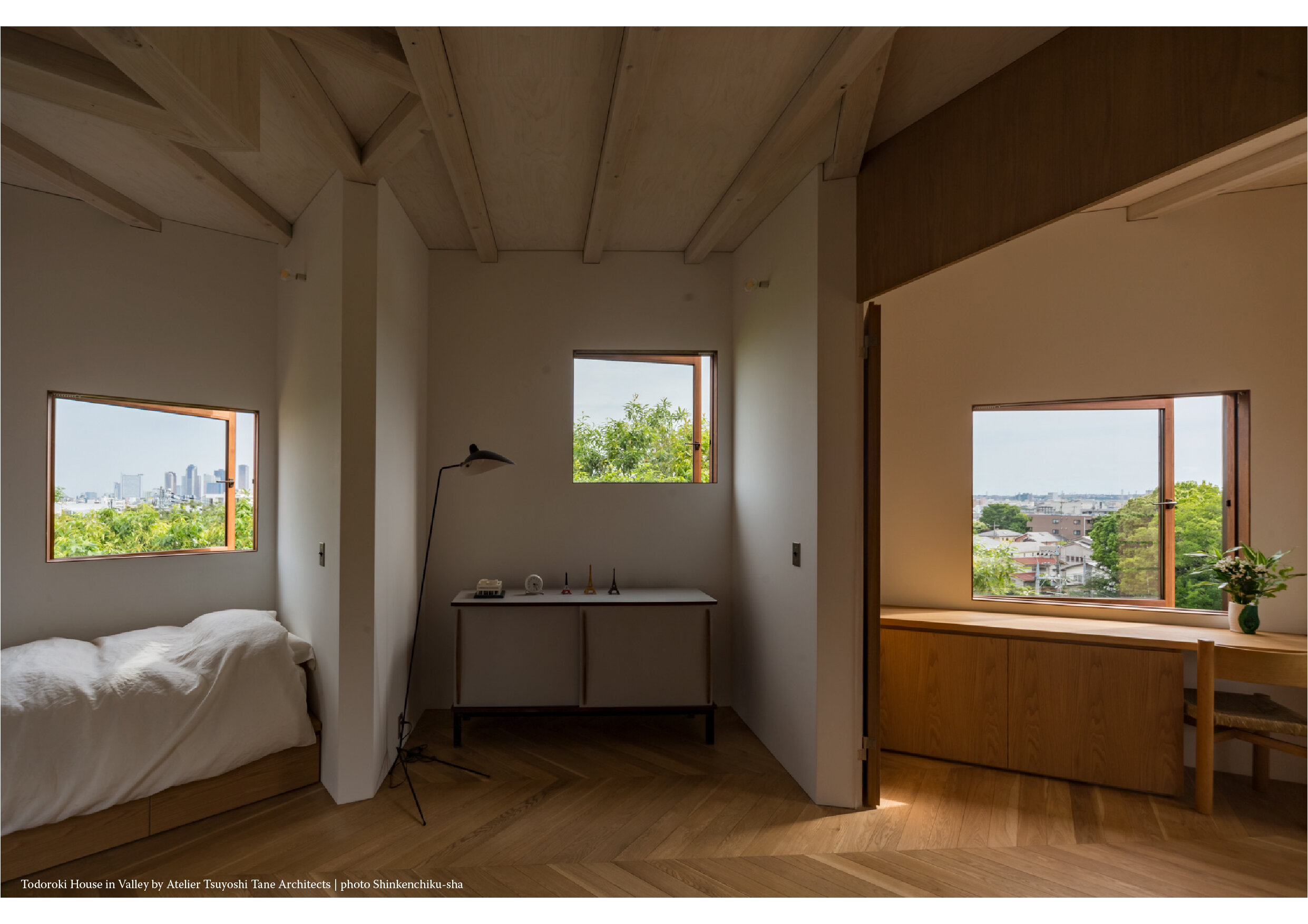
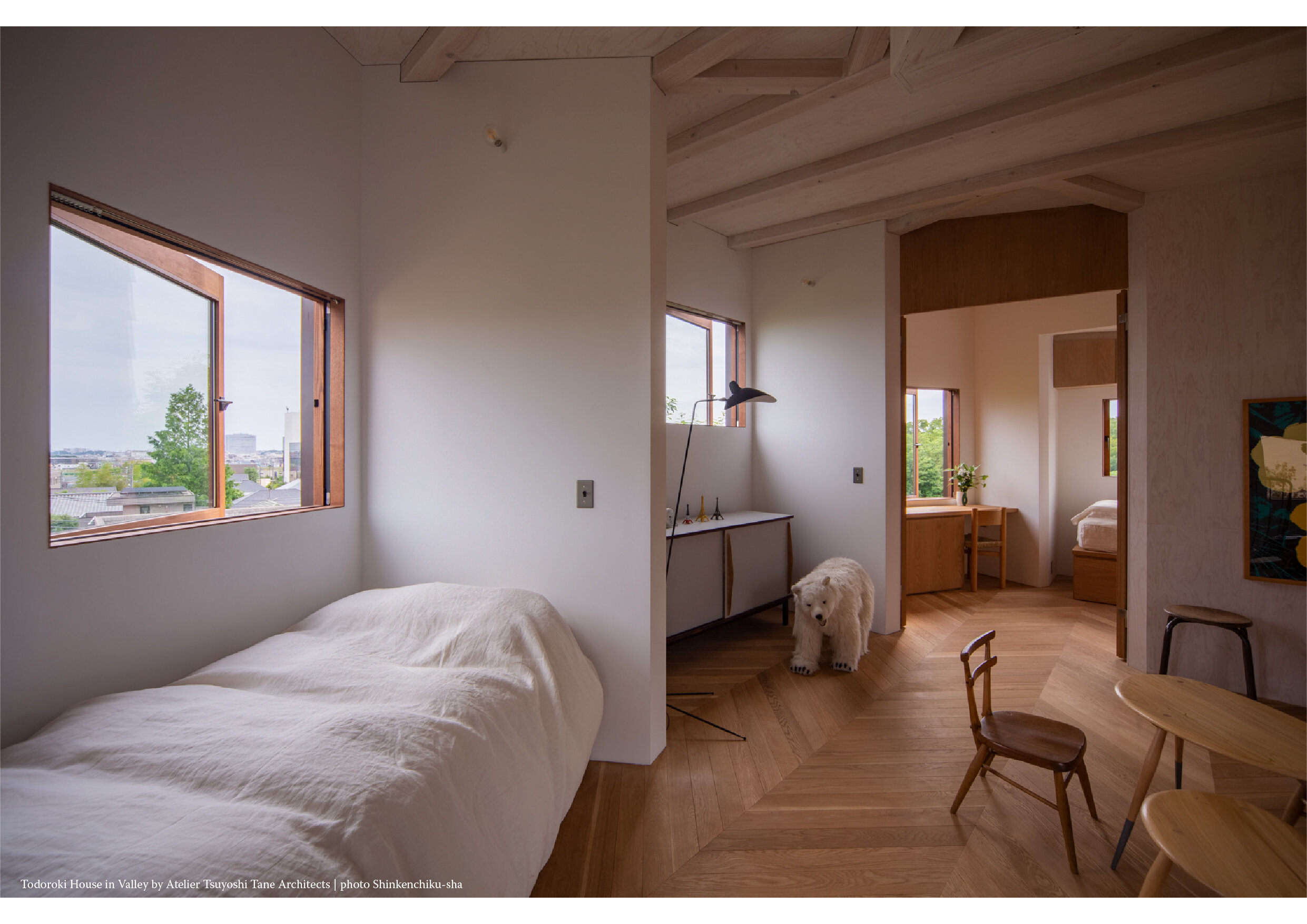
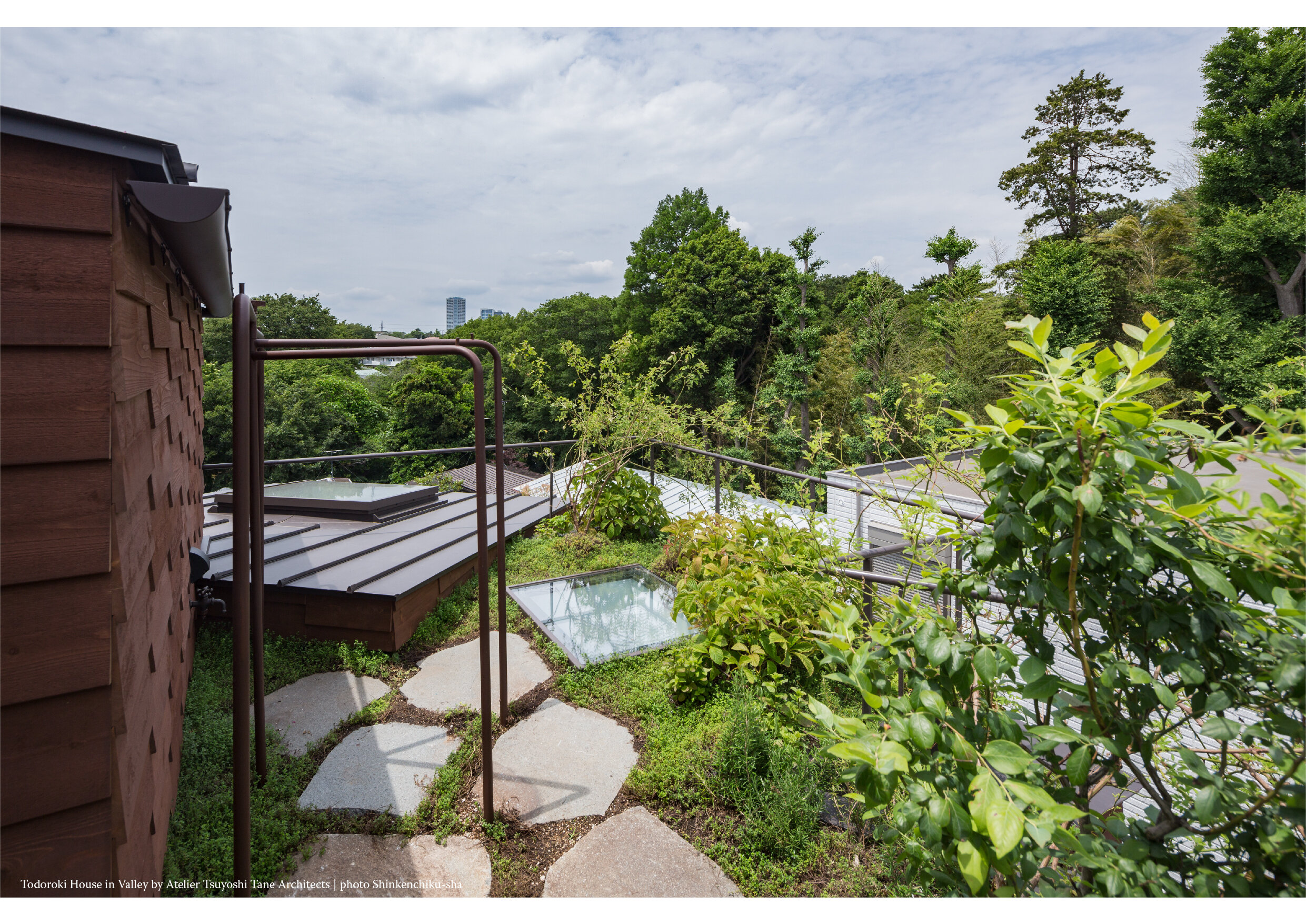
© Yuna Yagi
Présentation du projet par Valentino Pagani lors des rencontres du Grand Prix AFEX
….AW², pour un éco-lodge à Guanacaste (Costa Rica)
..AW² - ECO-LODGE IN GUANACASTE (COSTA RICA)….
….L'ecolodge Kasiiya Papagayo, dessiné par AW² à Guanacaste, au Costa Rica, a été imaginé comme "une escapade immersive et intime avec la nature costaricaine". Situé au cœur d'une forêt tropicale de 123 hectares, le resort de luxe se veut "le lieu d'une expérience sensible offrant une harmonie totale avec son cadre". "Construit sur des plateformes à ossature bois sans fondations, Kasiiya ne laisse aucune trace de son passage. Notre intention tout au long du projet n'était pas d'avoir un impact minimal sur l'environnement, mais de ne pas en avoir du tout. Aucun arbre n'a été abattu lors de la construction. L'utilisation de fondations et de plateformes à vis - sans béton - permet de retirer les bâtiments sans endommager le site. Ce projet intégralement éco-responsable depuis le concept jusqu'au chantier et dans son fonctionnement aujourd'hui (100% d'énergie solaire, très faible empreinte carbone, aucune modification de la topographie) a été l'occasion d'affiner notre expertise dans le domaine de l'éco-construction", expliquent les architectes.
..
Designed by AW² in Guanacaste Costa Rica, the Kasiiya Papagayo Ecolodge was conceived as "an immersive and intimate getaway within the Costa Rican landscape". Located within the heart of a 123-hectare tropical forest, the luxury resort aims to be "the place of a sensorial experience in total harmony with its surroundings". "Built without foundations on demountable platforms, Kasiiya leaves no trace of its passage. Our intention throughout the project was not just to minimize impact on the environment, but to have no impact at all. No trees were felled during construction. The use of foundations and timber platforms - without concrete - allow buildings to be removed without damage to the site. This fully eco-responsible project, from its design to construction and operations (100% solar energy, very low carbon footprint, no topographical remodelling), was an opportunity to further develop our expertise in the field of eco-construction", explain the architects. ….






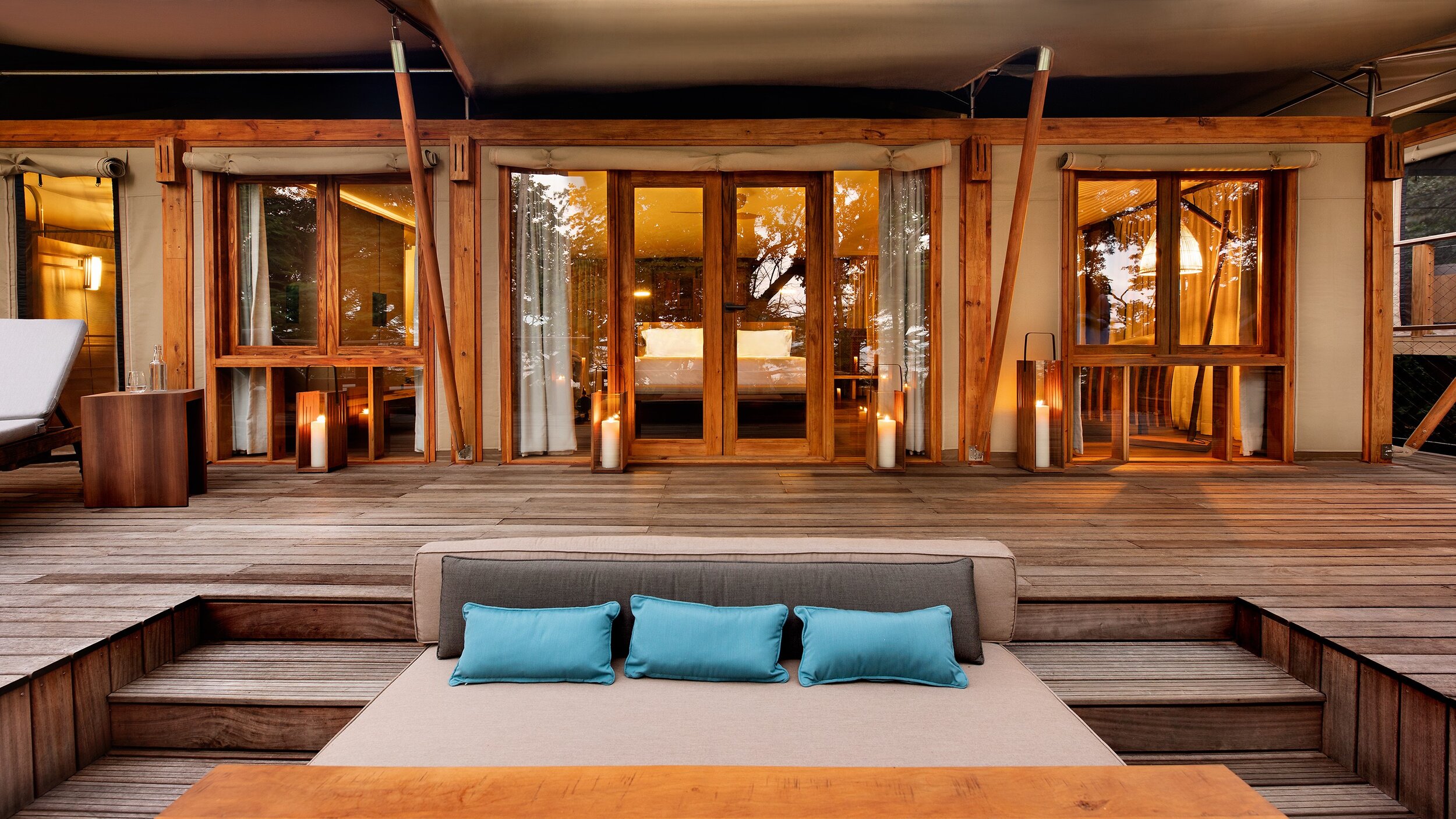

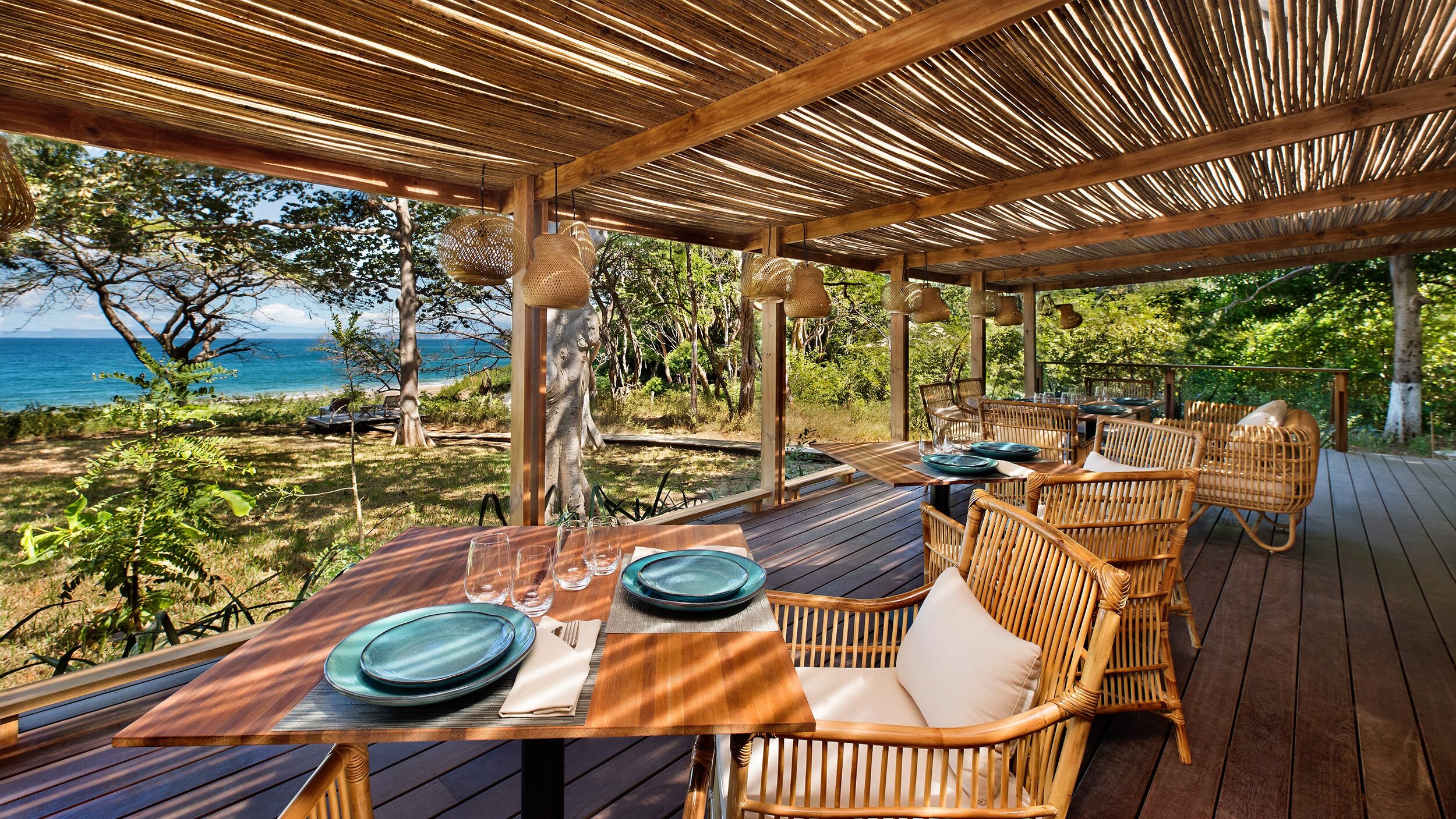
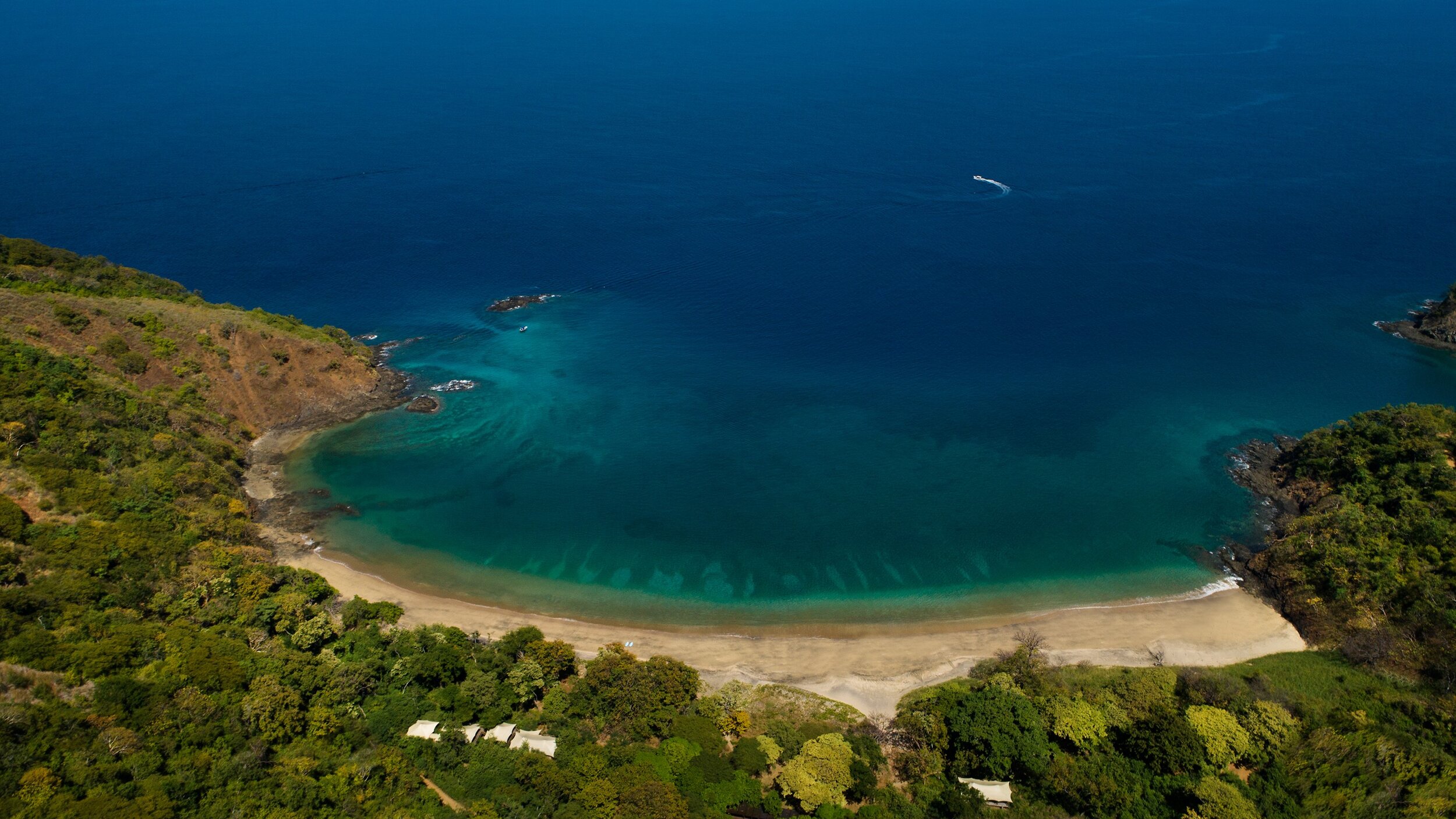
© Kenny Viese
Présentation du projet par Stépanie Ledoux lors des rencontres du Grand Prix AFEX
….EGA - Erik Giudice Architecture, pour un immeuble de bureaux à Malmö (Suède)
..EGA (ERIK GIUDICE ARCHITECTURE) - OFFICE BUILDING IN MALMÖ (SWEDEN)….
….Le programme tertiaire The Edge, à malmö, en Suède, livré en décembre 2019, a pour architecte mandataire Erik Giudice Architecture. D'un coût total de 19 millions d'euros HT, il prend la forme d'un prisme de verre de onze étages, qui grâce à sa forme dynamique "devient un signal dans son environnement proche et lointain". L'enveloppe de verre, qui combine éléments transparents et opaques, évolue en fonction de la lumière et des conditions météorologiques réfléchissant les couleurs et les mouvements du contexte. En terrasse, une topographie artificielle gradinée en bois enveloppe les installations techniques et crée des espaces de détente extérieurs avec de multiples orientations et des vues lointaines, vers le centre de Malmö, vers le pont reliant la Suède et le Danemark et vers le grand paysage de Skanie.
..
Erik Giudice Architecture is lead architect for the Edge office development in Malmö Mässän Sweden, delivered in December 2019. An 11-story glass prism at a cost of 19M€ which, due to its dynamic form, "becomes a signal in its surrounding and far off environment". The glass envelope, which combines transparent and opaque elements, changes according to the light and weather conditions to reflect the colours and movements of its environment. On the roof, a stepped timber deck envelops plant, creates outdoor relaxation areas with multiple orientations and distant views towards downtown Malmö, towards the bridge that connects Sweden with Denmark and towards the great landscape of Skanie. ….
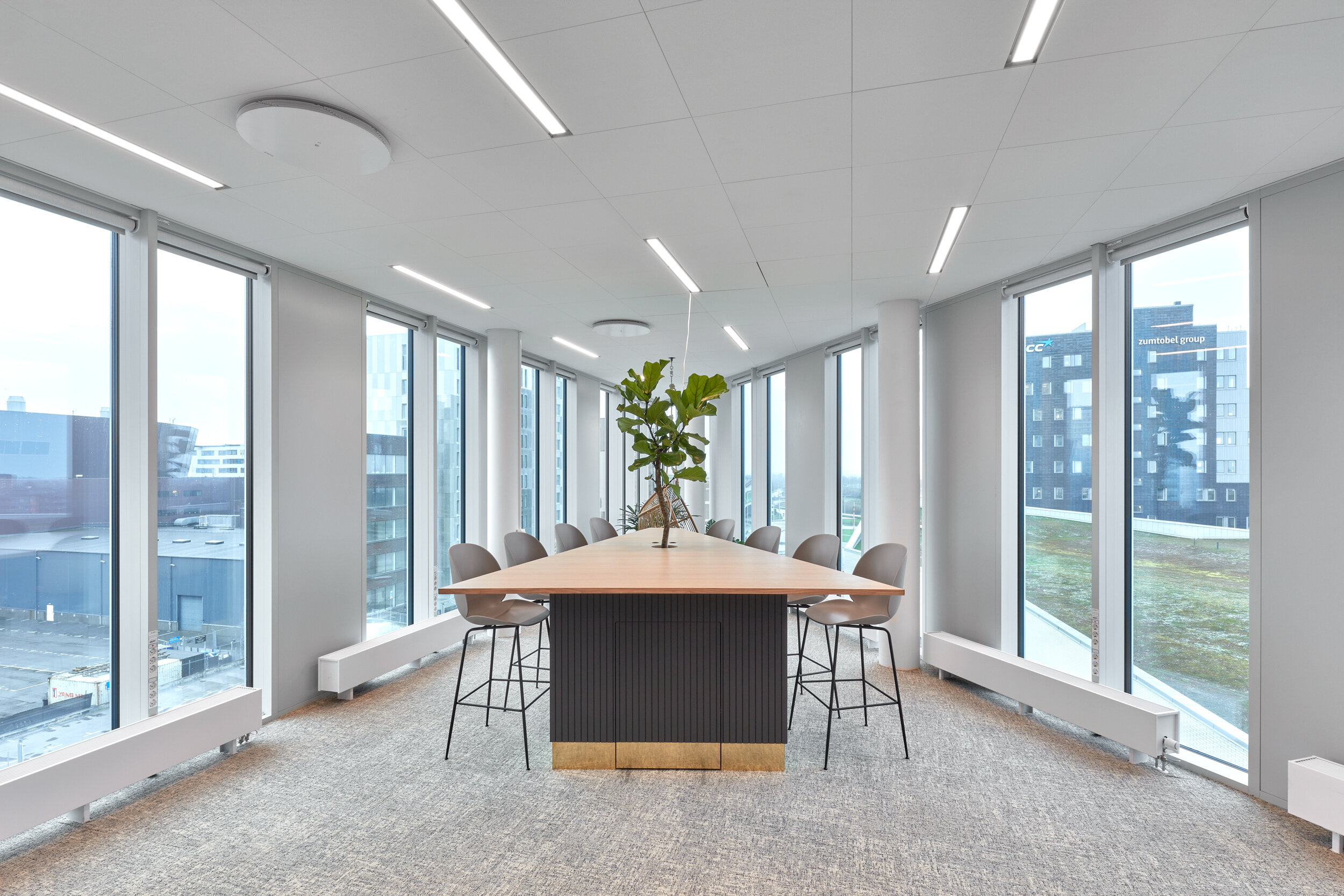
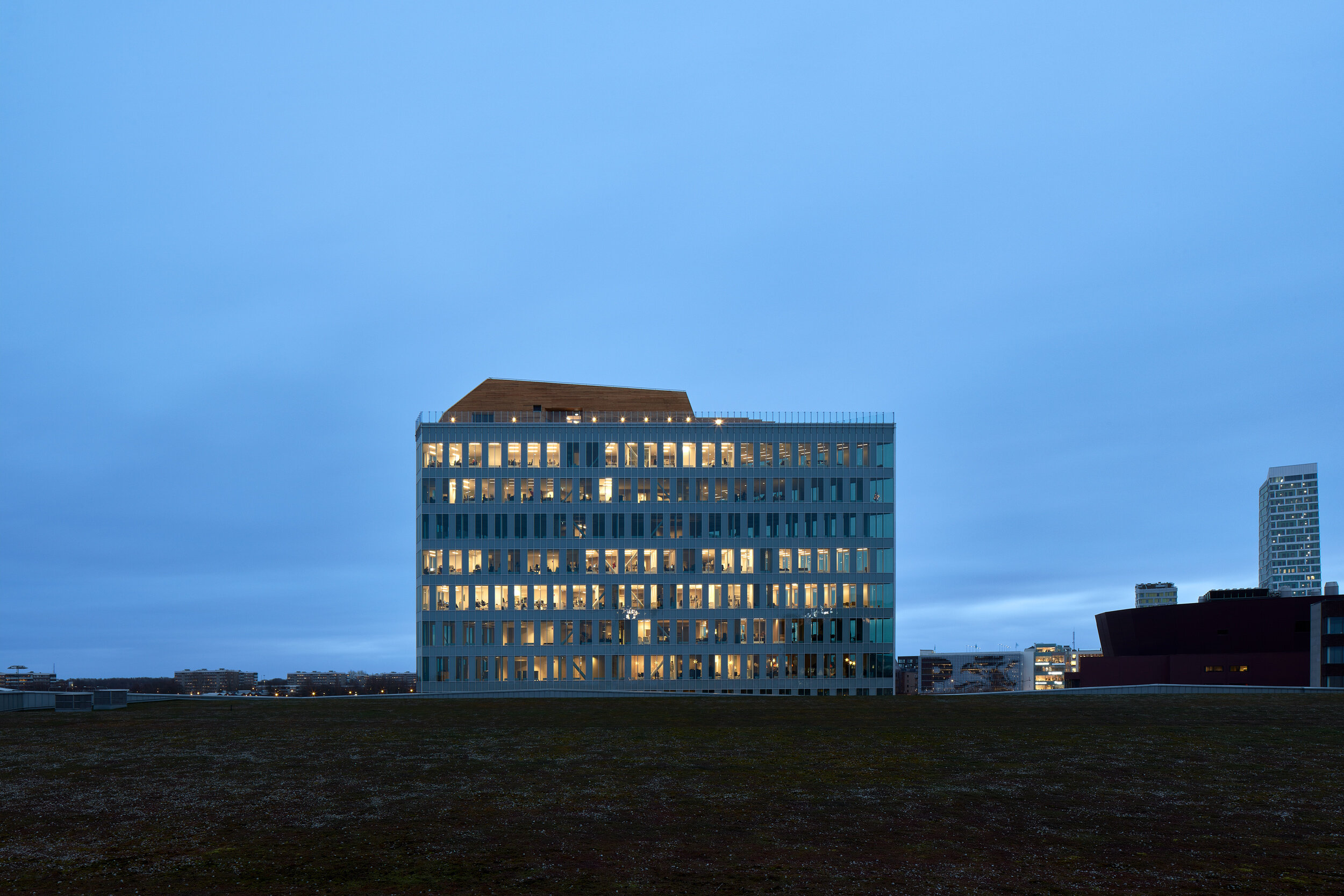
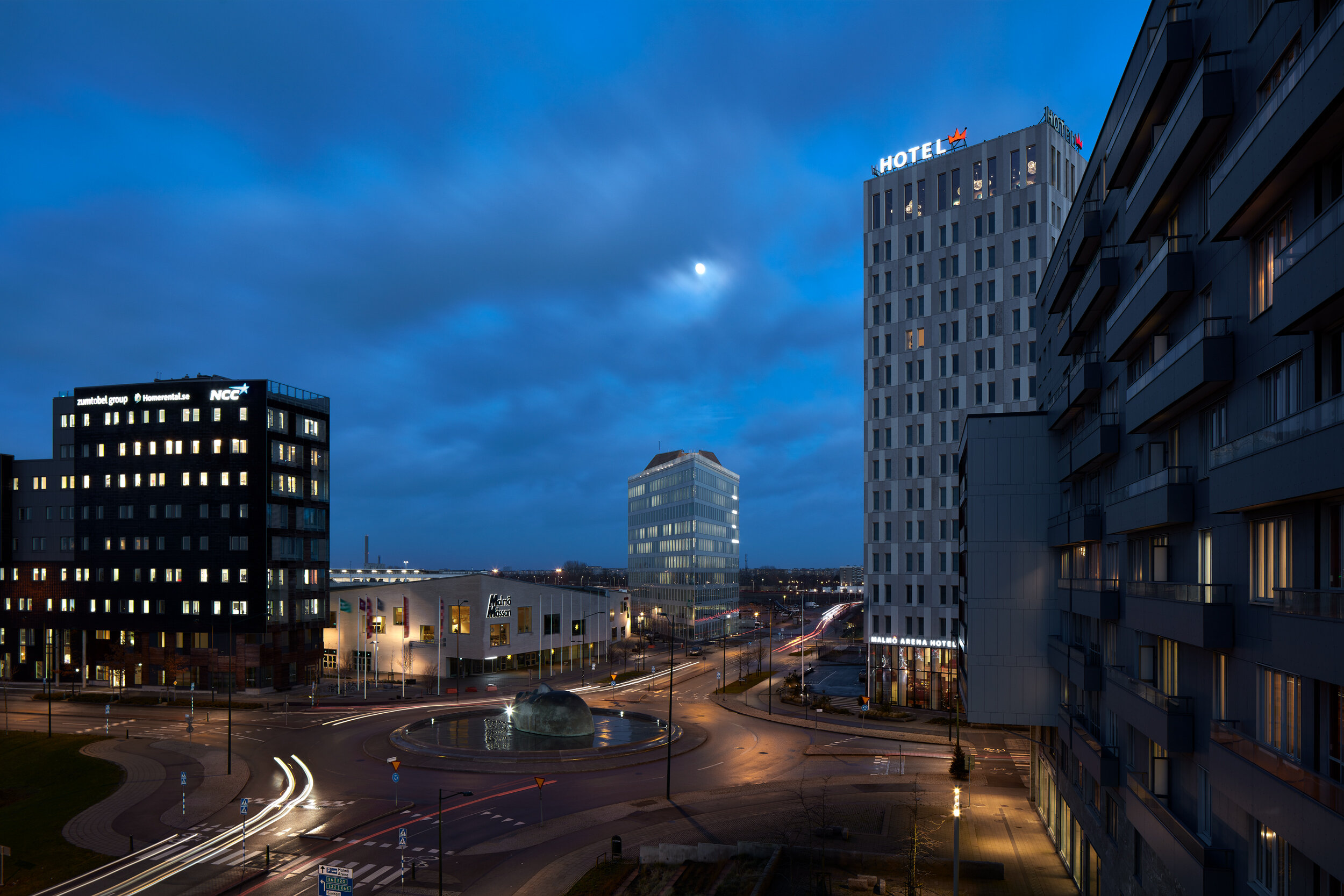



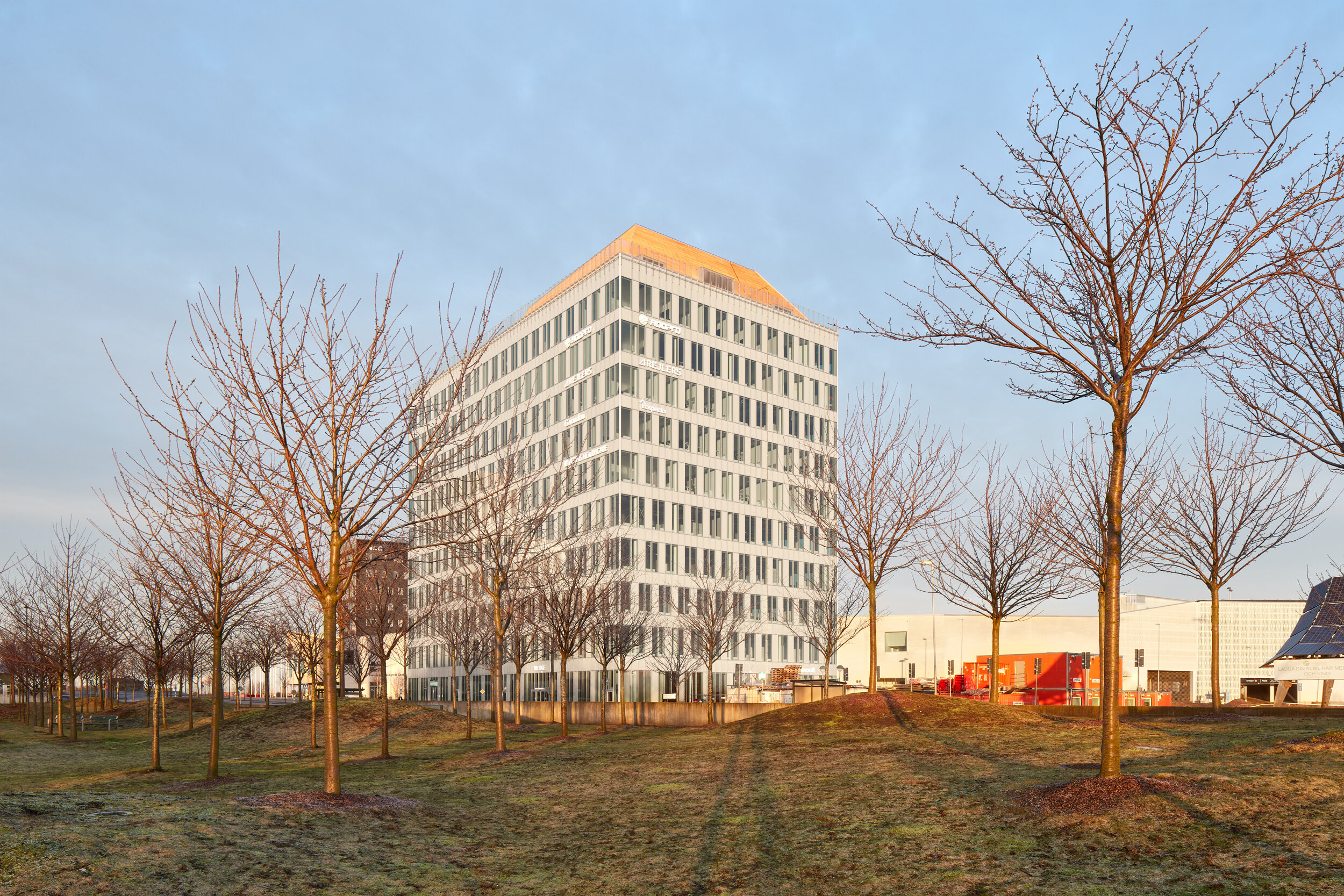
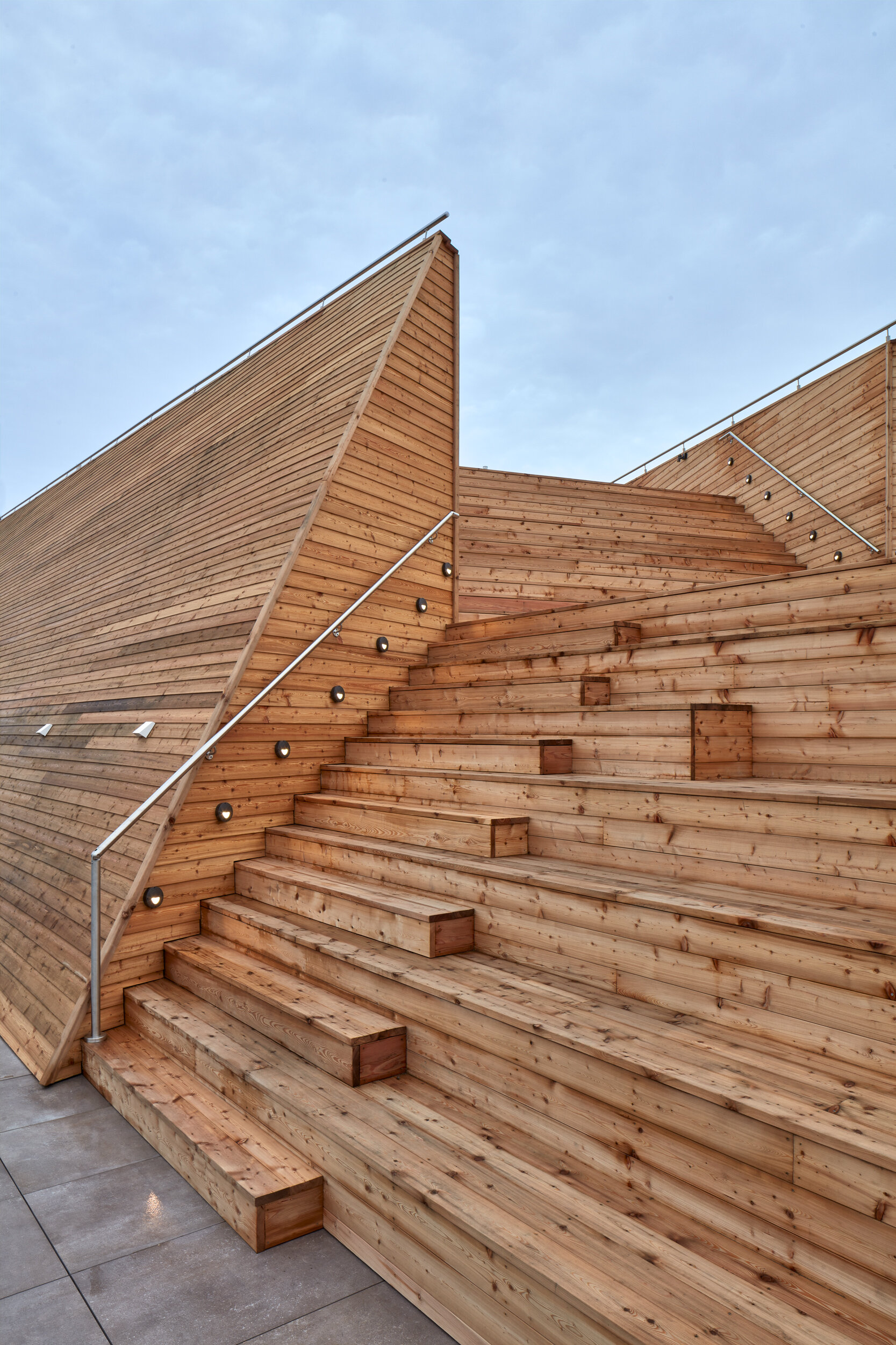
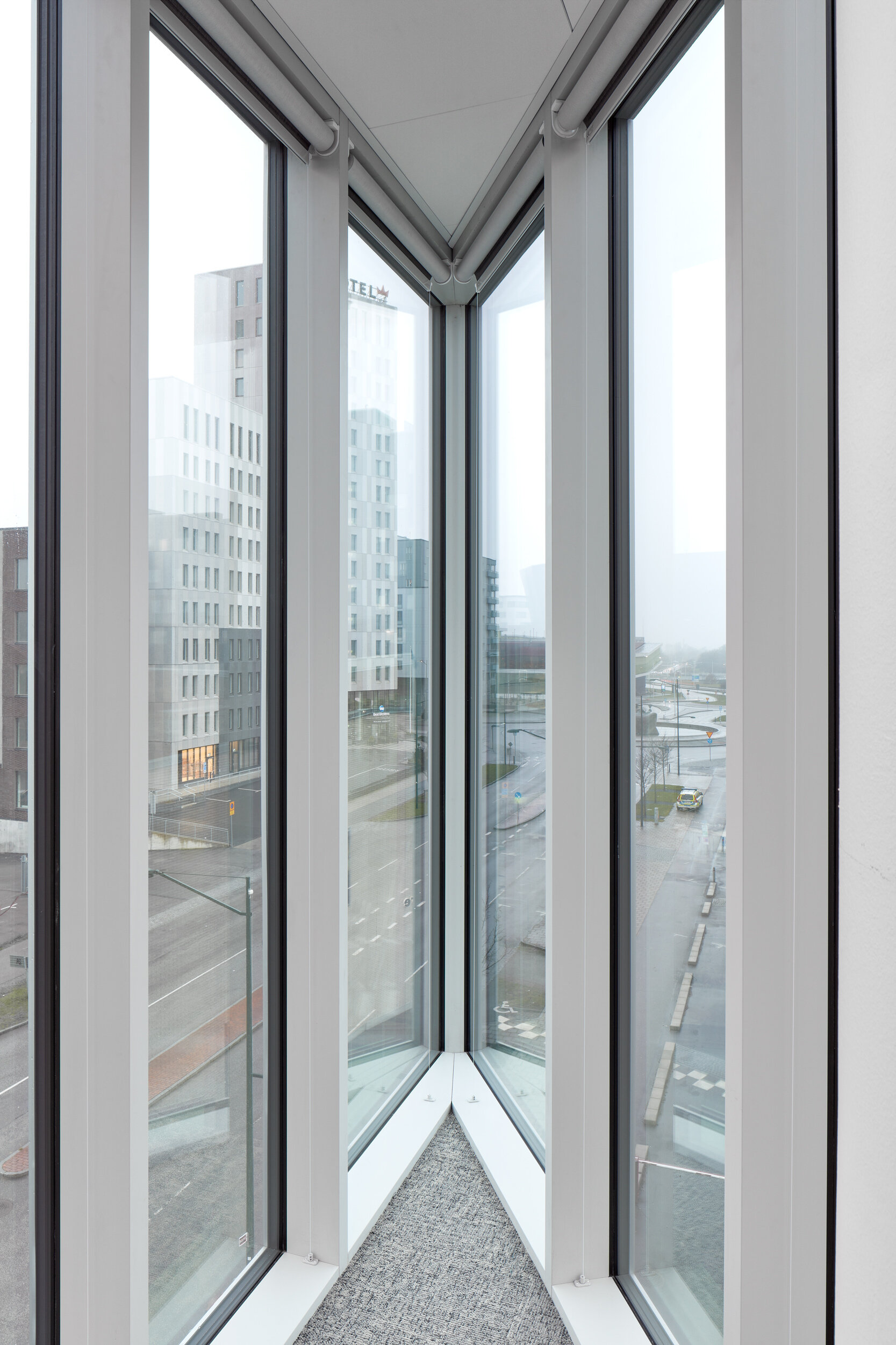
© Federico Covre
Présentation du projet par Erik Giudice lors des rencontres du Grand Prix AFEX
….Ferrier Marchetti Studio, pour un immeuble de bureaux à Shanghai (Chine)
..FERRIER MARCHETTI STUDIO - OFFICE BUILDING IN SHANGHAI (CHINA)….
….Avec ce programme de bureaux au centre de Shanghai, Ferrier Marchetti Studio a voulu "renouveler radicalement la formalisation d'un programme classique de bureaux et de parc de stationnement". Le bâtiment de 20.000m² livré en 2019 associe bureaux et commerces à un parking conçu comme un jardin suspendu qui accueille des espaces publics et culturels. Le projet comprend également une passerelle plantée qui s'étend pour relier le bâtiment aux rues avoisinantes en balcon sur l'animation urbaine. "A travers les ponts-paysages qui se connectent à la ville, et au niveau du sol et du premier étage où se trouvent les utilisations publiques et les magasins, c'est toute une vie publique qui prend place autour de ce programme", écrivent les architectes.
..
With this office development in the centre of Shanghai, the Ferrier Marchetti Studio wanted to "radically review the classic office and car park brief". The 20,000m² building delivered in 2019 combines offices and shops, with a car park designed as if a hanging garden that accommodates public and cultural spaces. The project also includes a planted walkway that extends to connect the building with the surrounding streets like a balcony overlooking the urban bustle. "Through the landscaped bridges that connect it to the city, at ground level and on the first floor where public uses and shops are located, an entire public life happens around this project", write the architects. ….
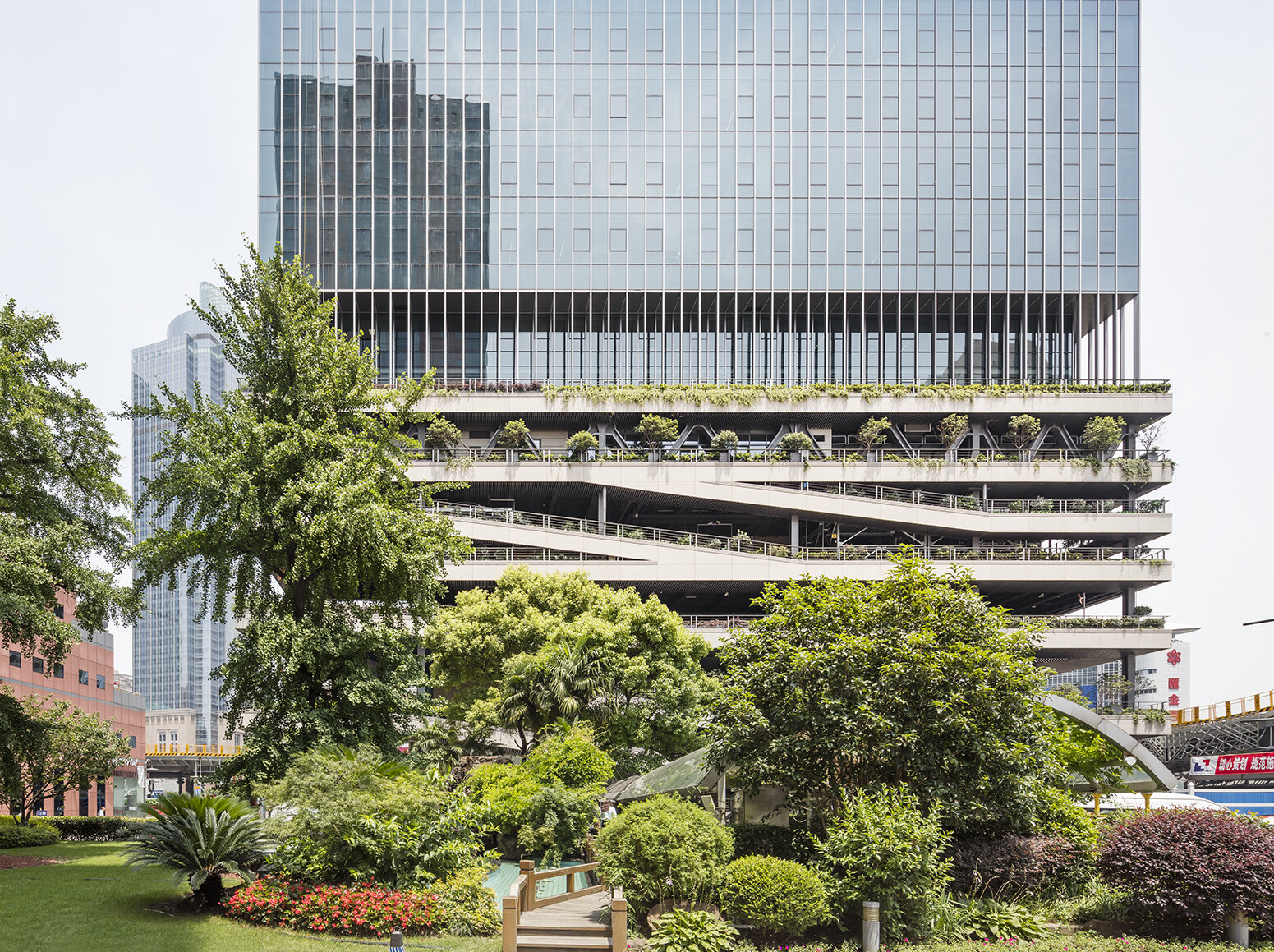
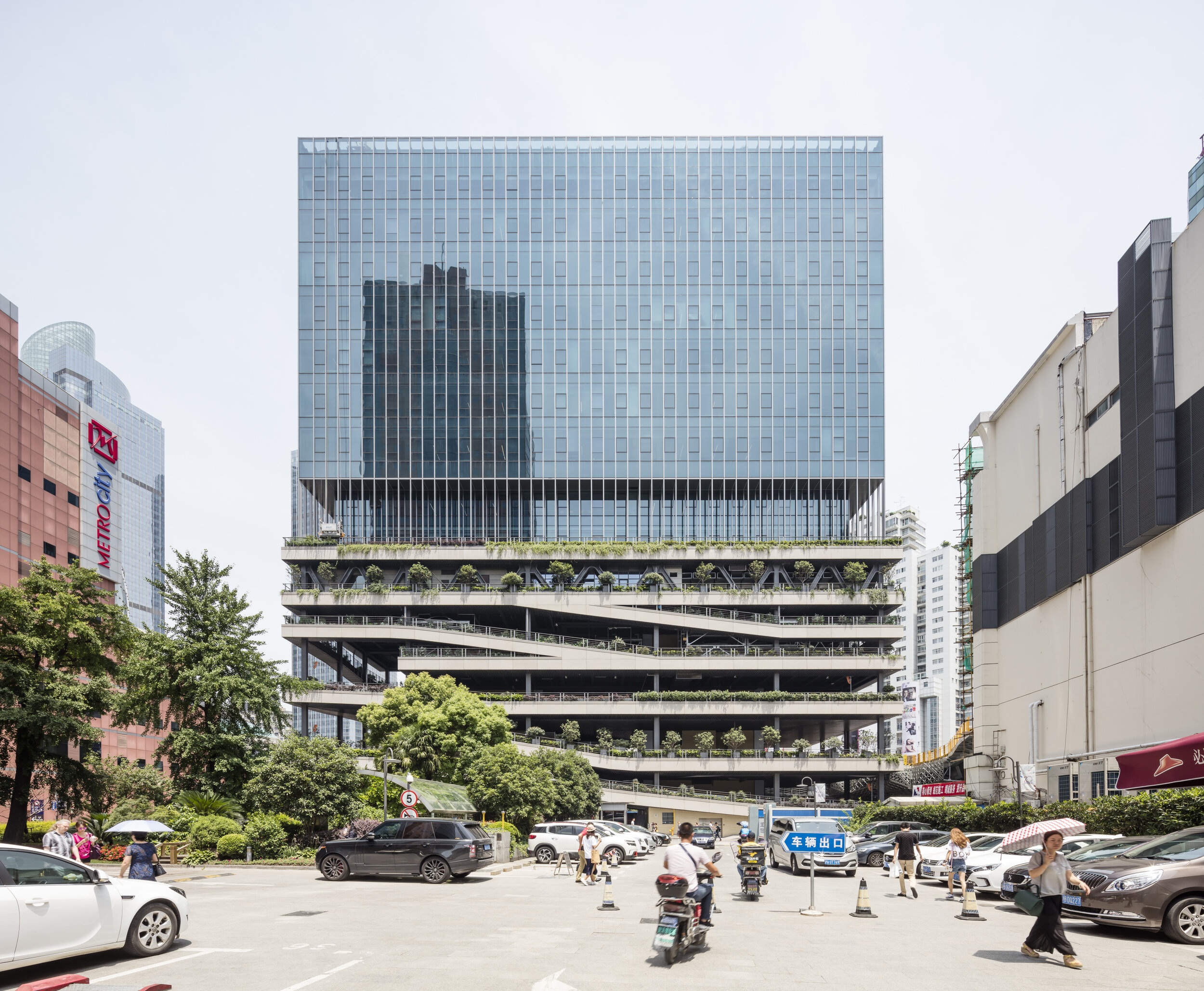
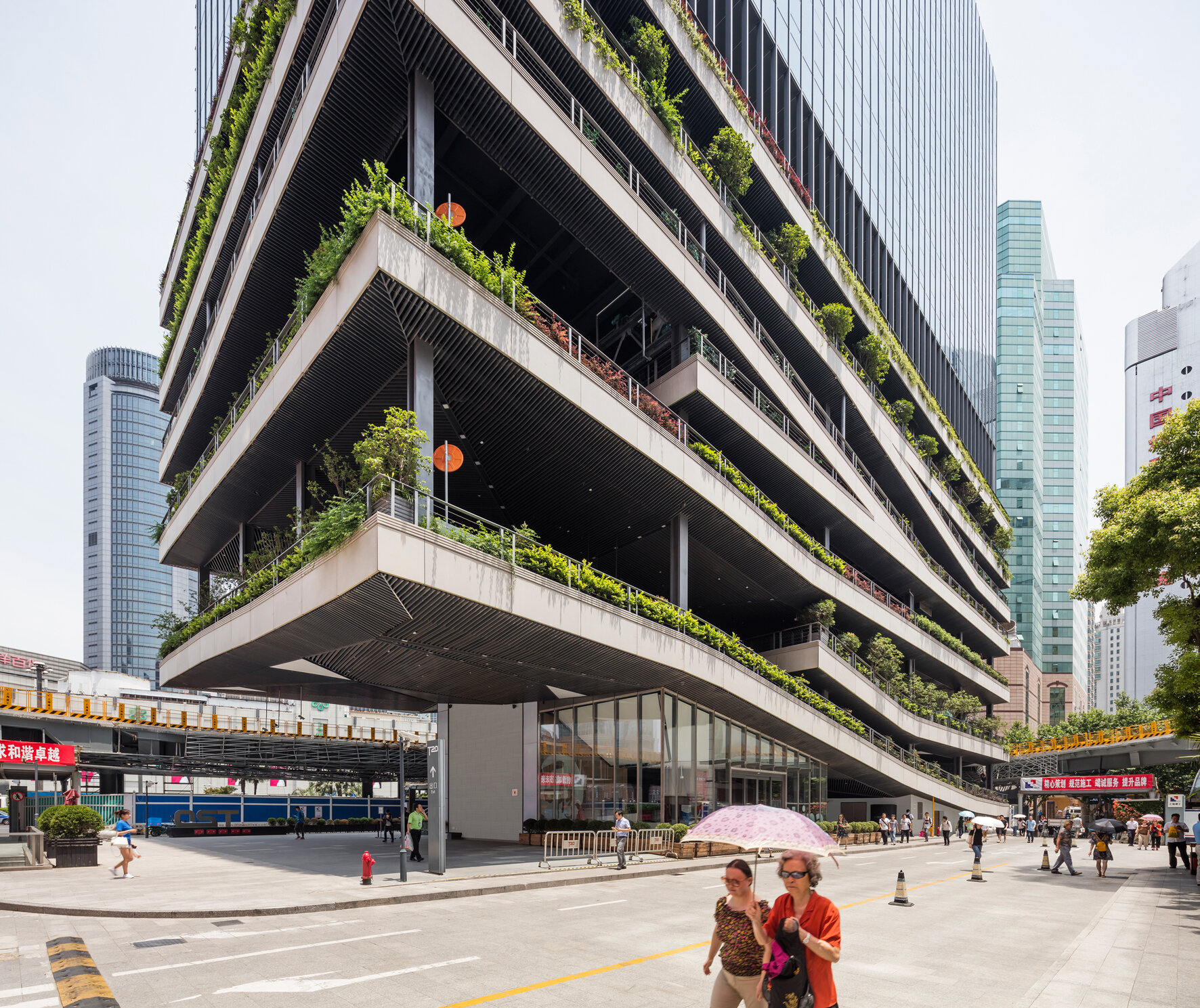

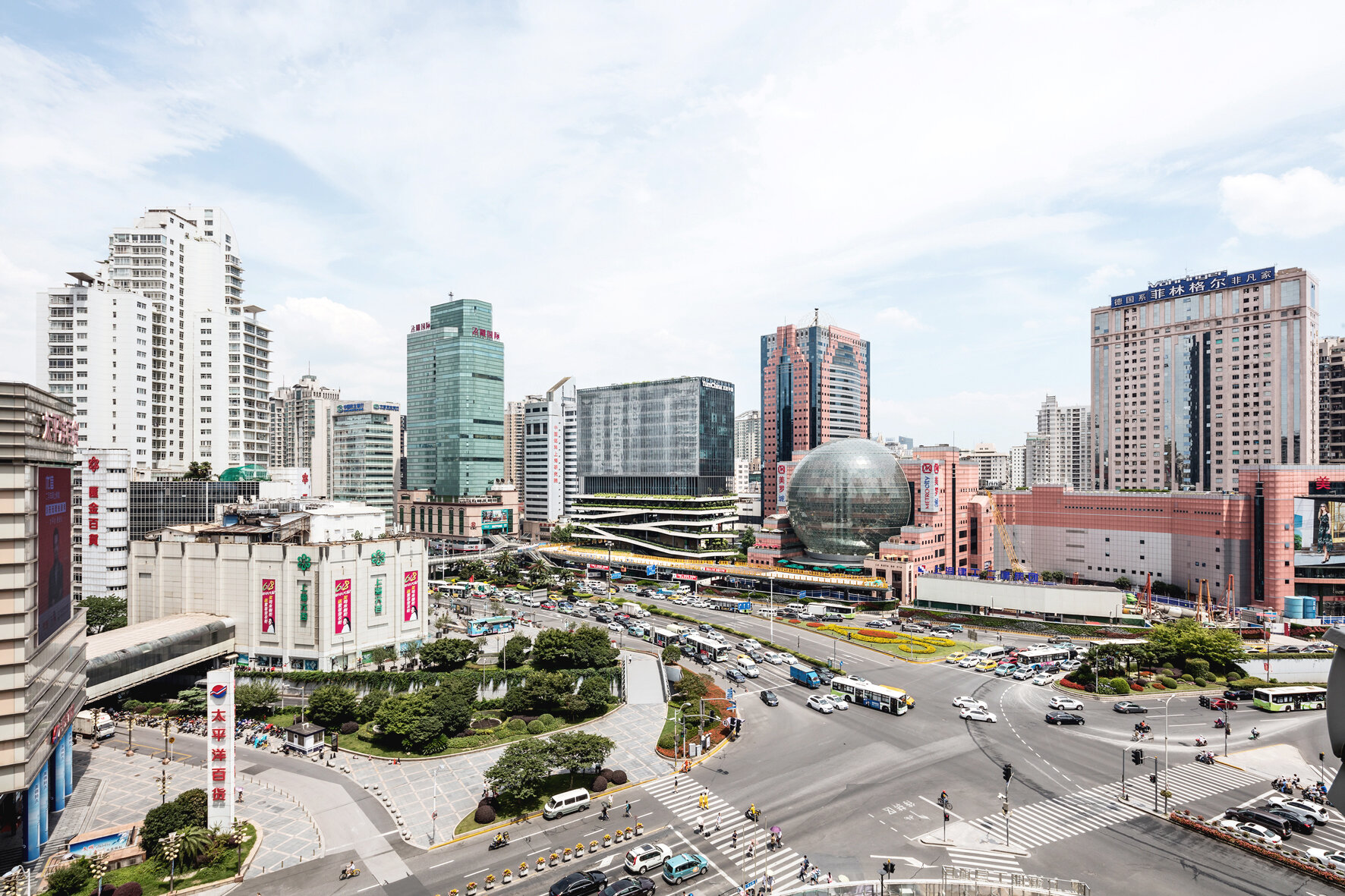
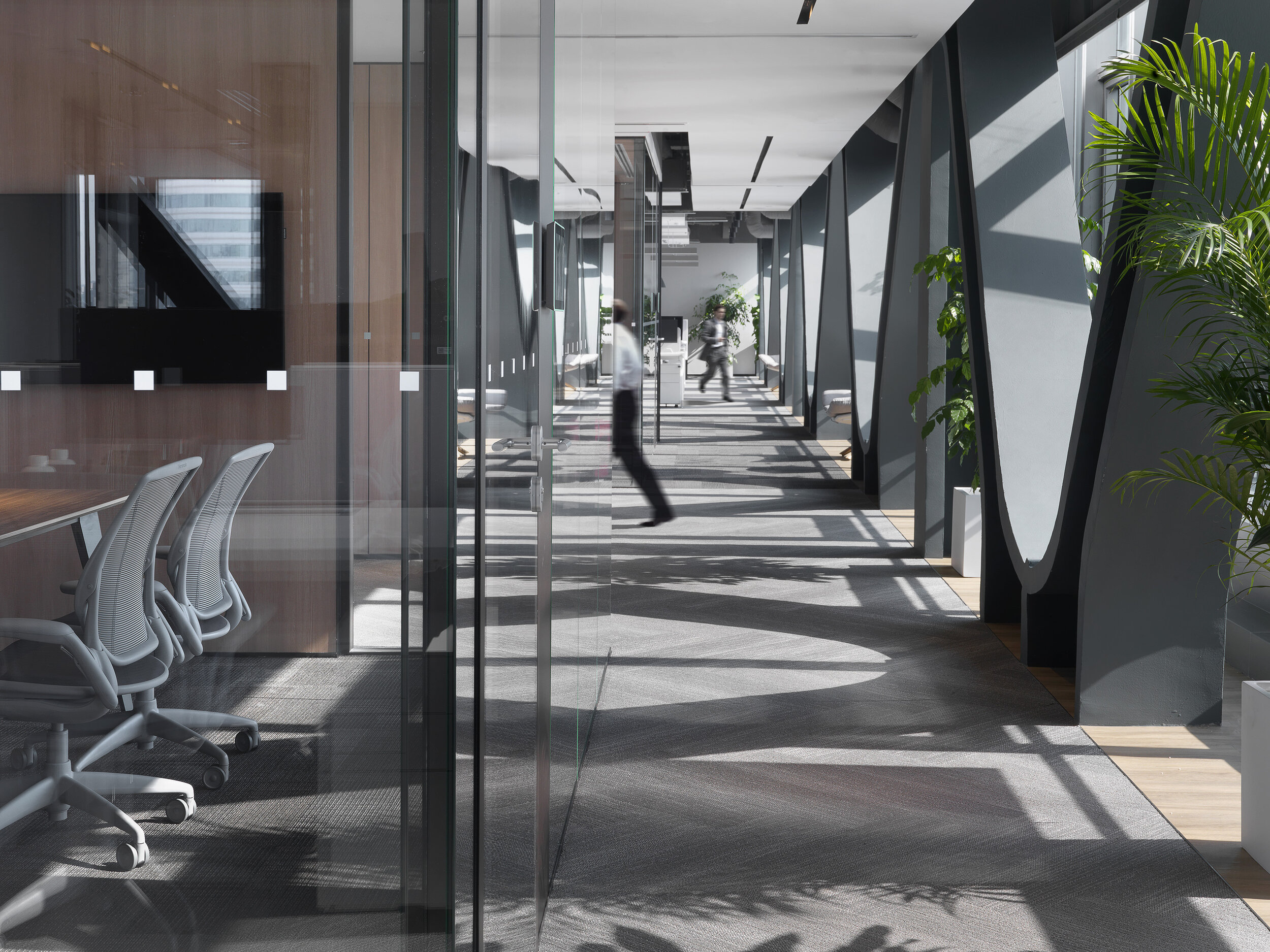
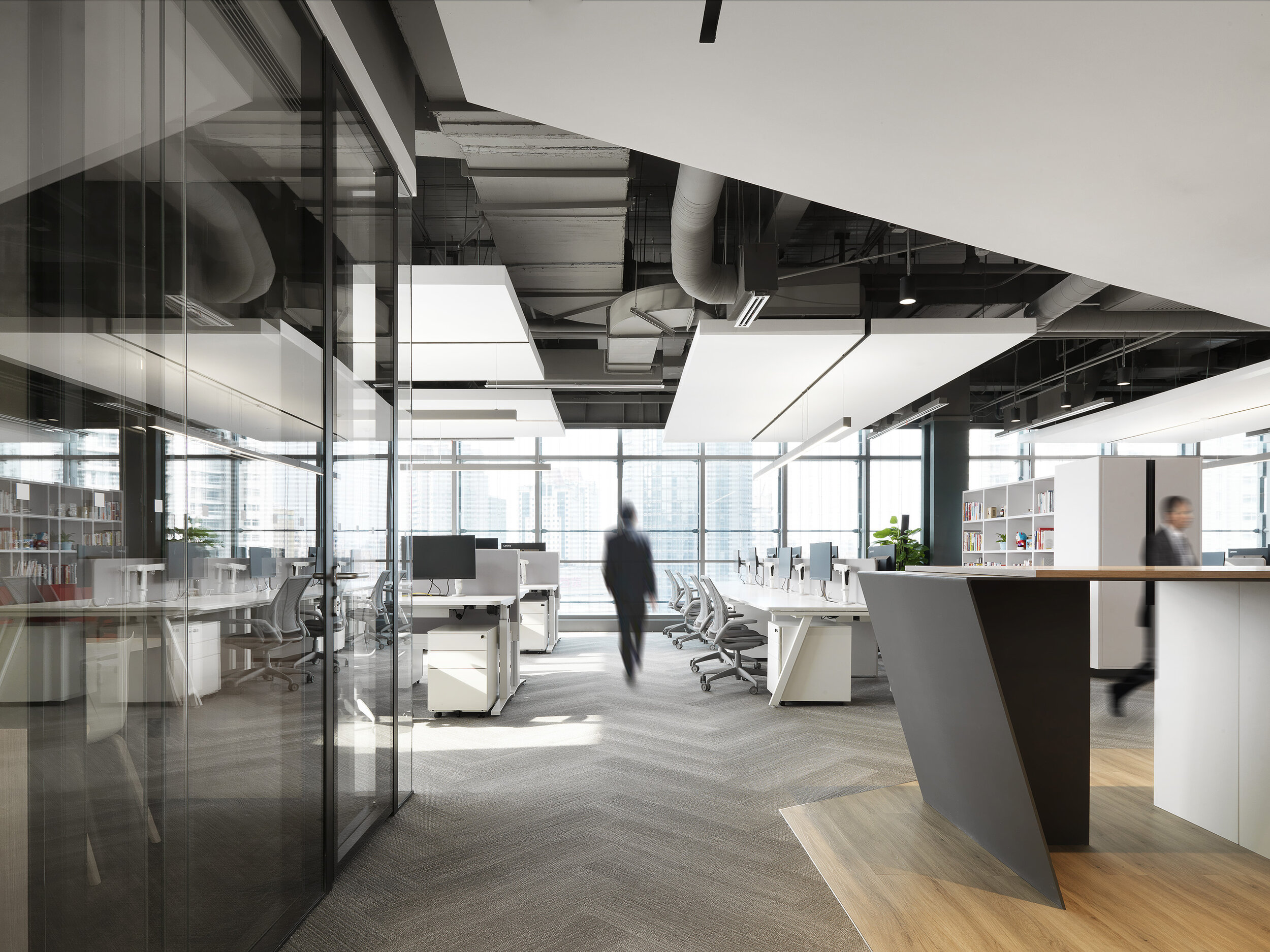


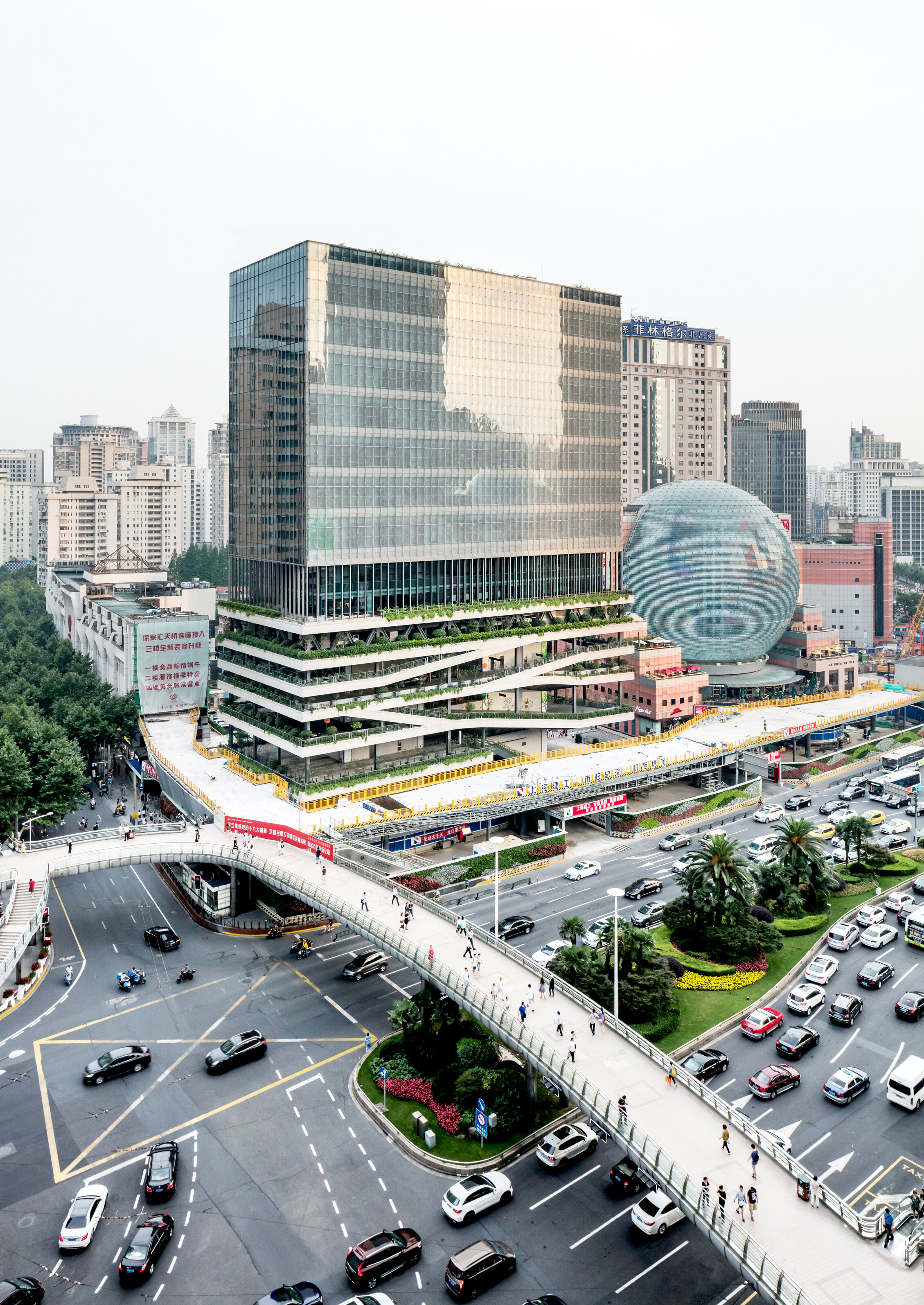
© Luc Boegly
Présentation du projet par Jacques Ferrier lors des rencontres du Grand Prix AFEX
….In Situ Architecture, pour une église à Nianing (Sénégal)
..IN SITU ARCHITECTURE - CHURCH IN NIANING (SENEGAL)….
….Cette église, dessinée par In Situ Architecture pour l'archidiocèse de Dakar, est située à Nianing, au Sénégal. Elle a été livrée en avril 2019. Orienté vers l'est et élancé vers le ciel, l'édifice se referme au nord et au sud pour se protéger du soleil et de l'Harmattan. L'édifice s'ouvre à l'ouest pour capter la fraîcheur des alizés par un jeu de volumes décomposés en sept voûtes avec un clocher qui culmine à 45 mètres et qui joue le rôle à la fois de signal et de cheminée de ventilation.
..
Designed for the Archdiocese of Dakar by In Situ Architecture, the church located in Nianing, Senegal was delivered in April 2019. Facing east and thrusting upwards towards the sky, enclosed on the north and south, the building is protected from the sun and the Harmattan. It opens up on the west to capture the freshness of the trade winds through a set of volumes broken down into seven vaults, with a bell tower that rises to 45 metres that acts as both a signal and a ventilation vent. ….
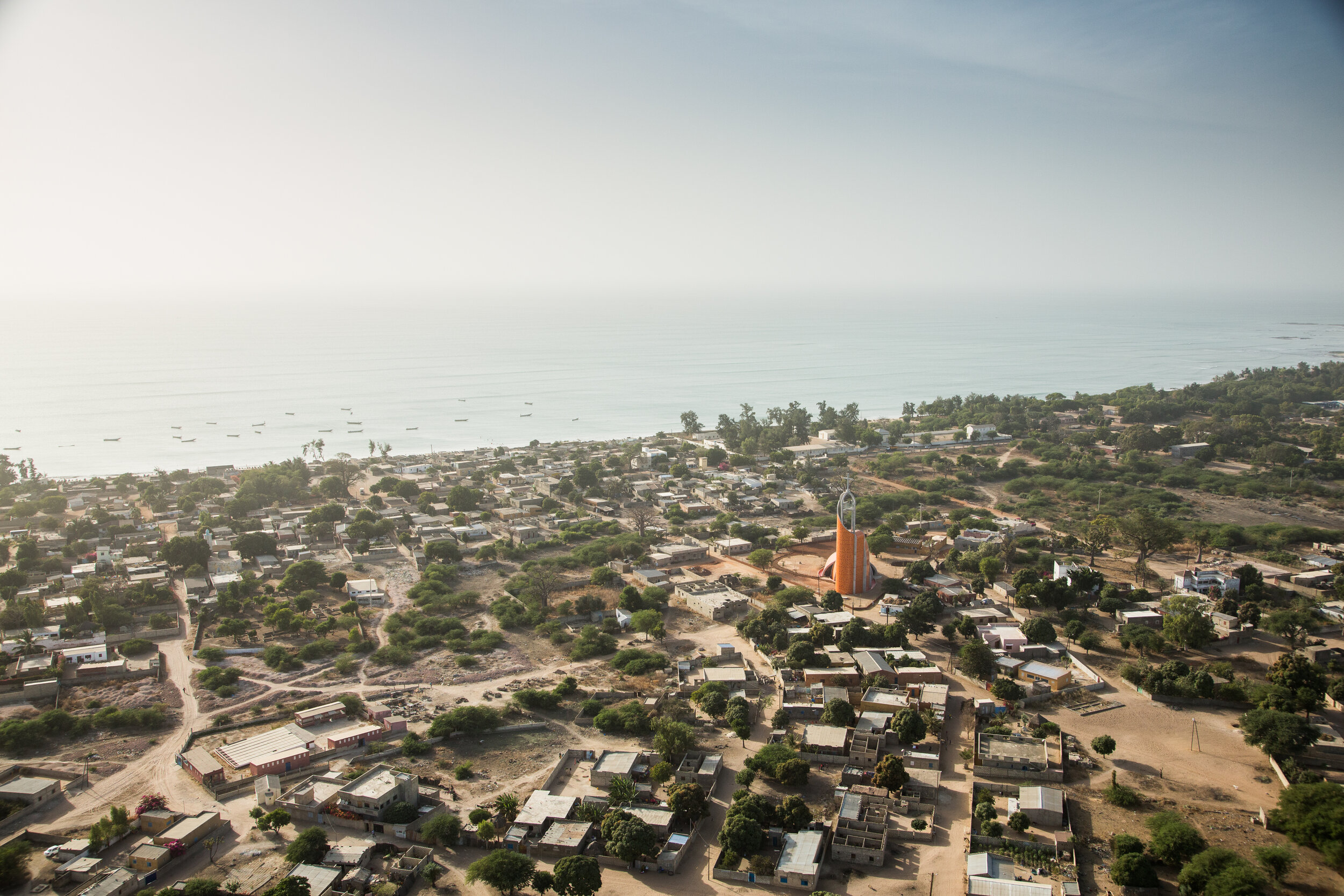
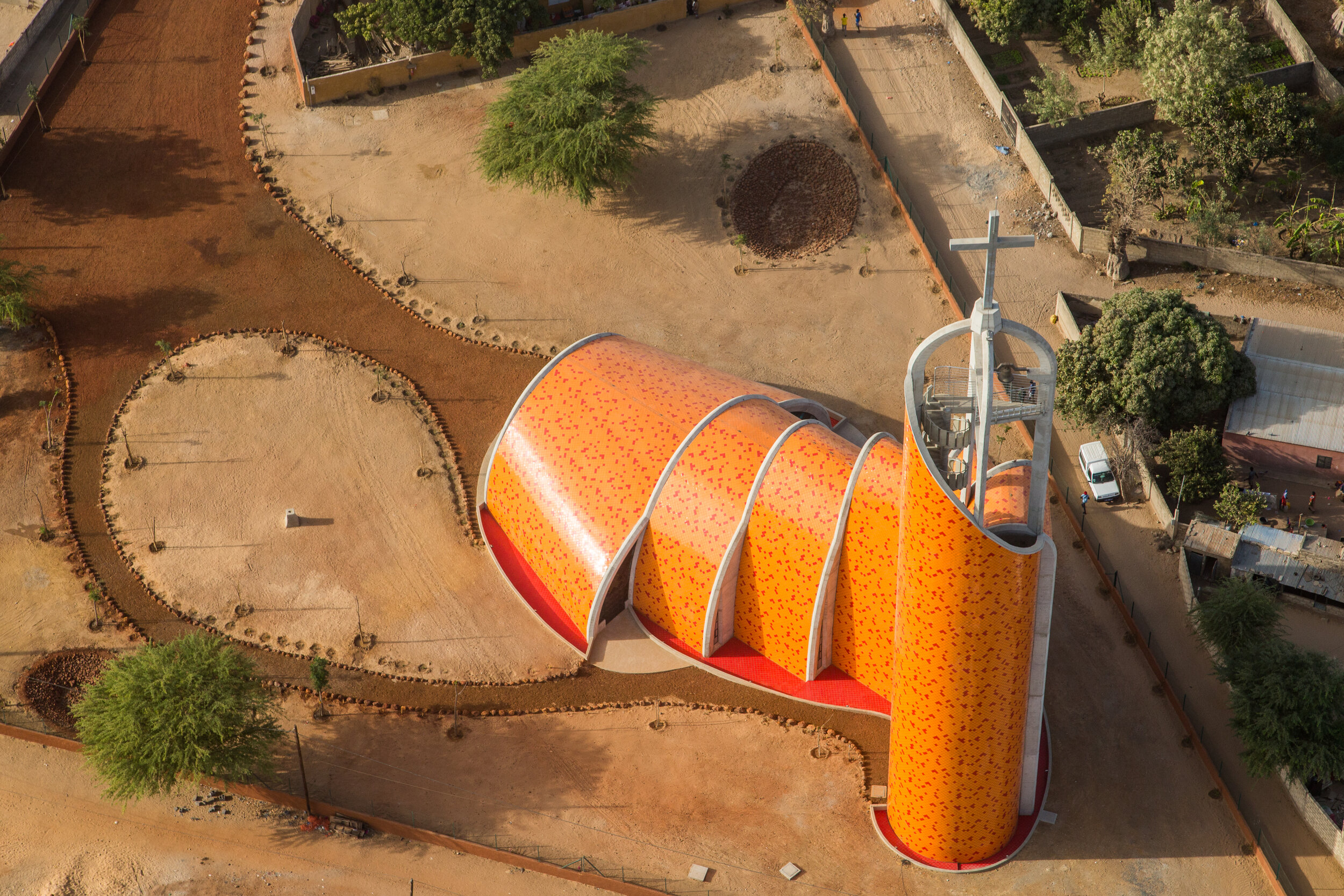
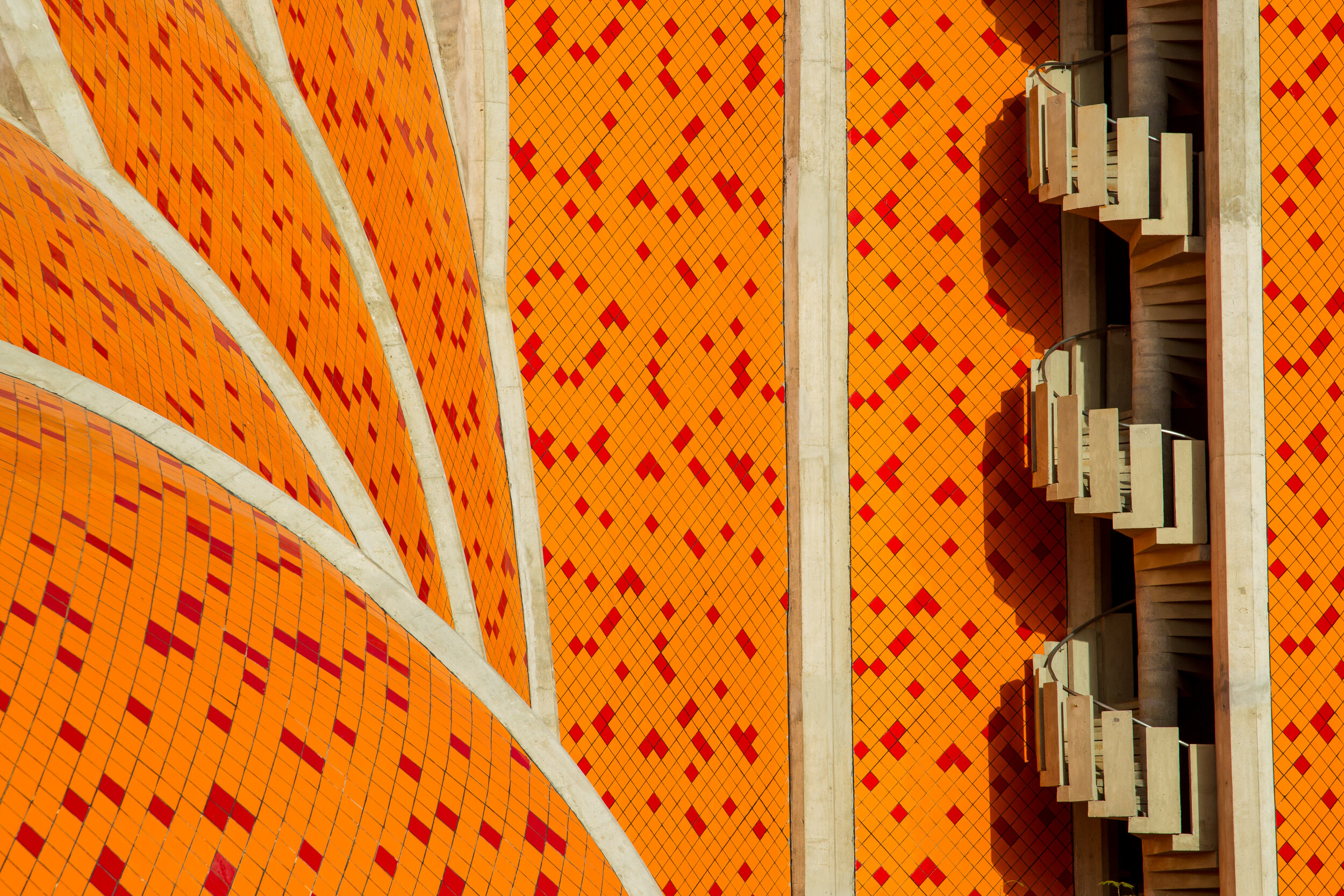



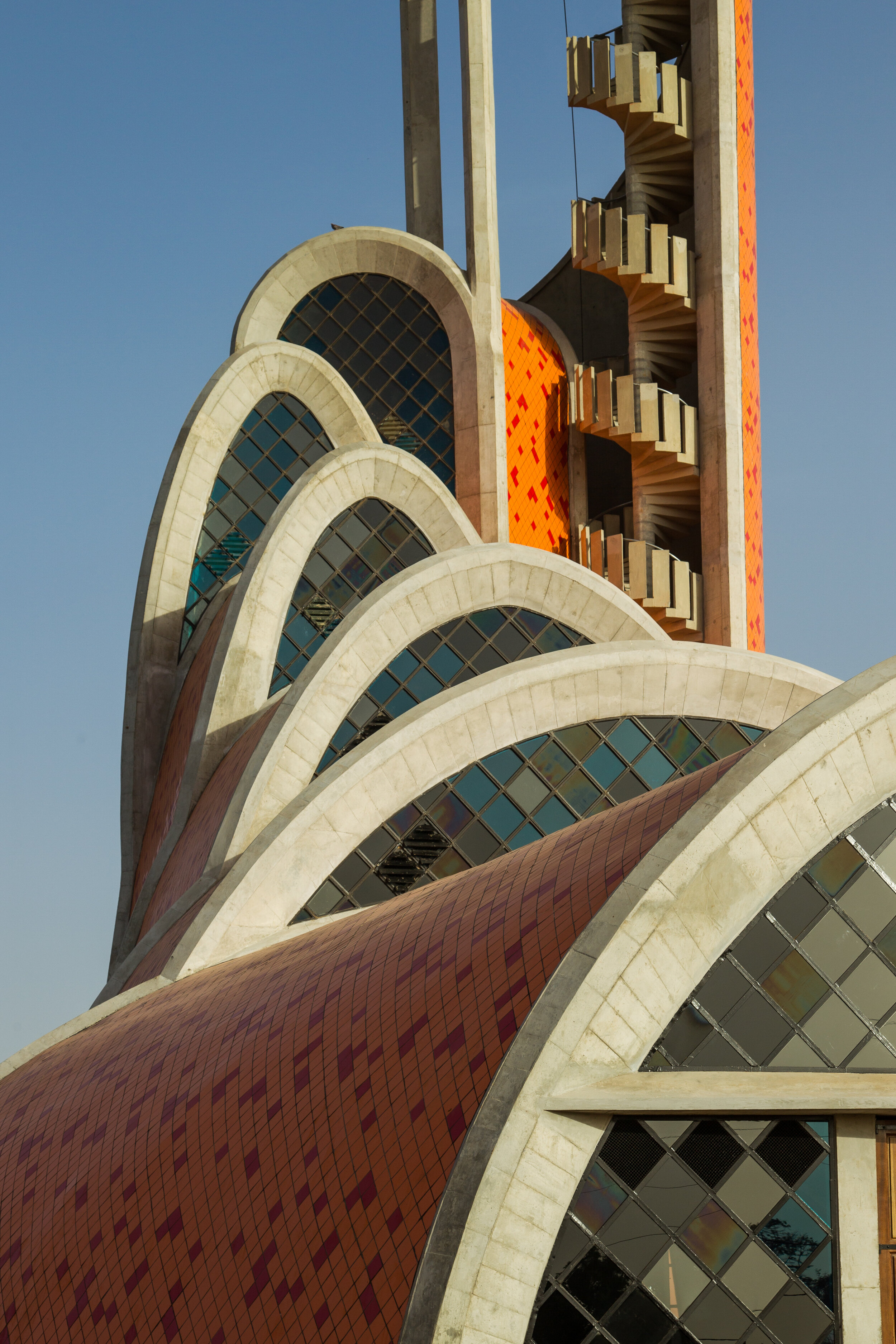


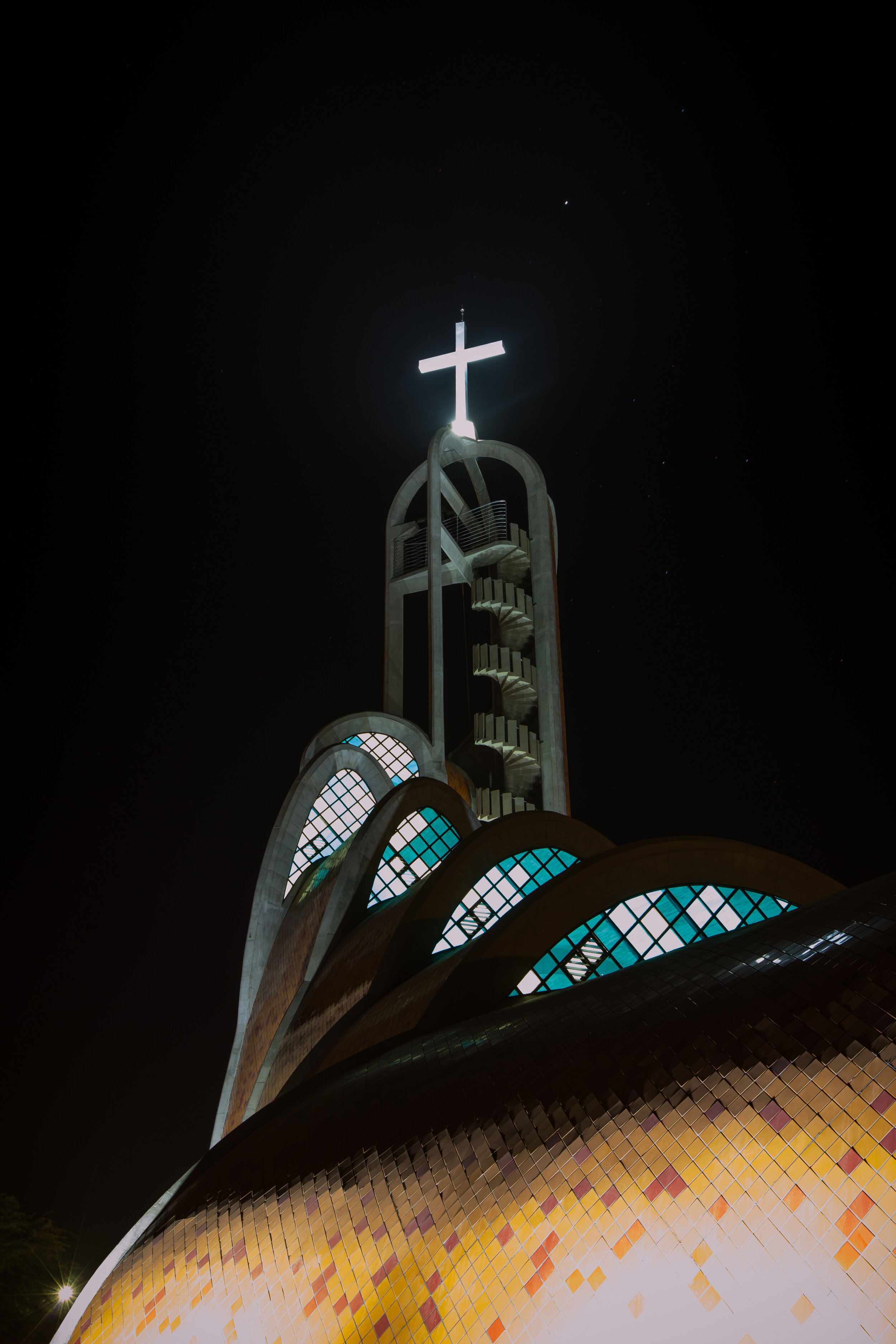
© Regis L'Hostis
Présentation du projet par Nicolas Vernoux-Thélot lors des rencontres du Grand Prix AFEX
….Voie Off Architectes, pour un campus scolaire à Sousse (Tunisie)
..VOIE OFF ARCHITECTES - SCHOOL CAMPUS IN SOUSSE (TUNISIA)….
….Le groupe scolaire unifié Philippe Séguin (école et collège) a été construit à Sousse, en Tunisie, par Voieoff Architectes (Grenoble), associés à Atelier Osmose, une agence locale. Il se compose de 900m² bâtis sur un terrain de 3.900m². Parmi les partis pris des architectes, on notera celui de "poser l'ensemble de la composition sur le terrain naturel en profitant de sa légère déclivité du nord-est vers le sud-ouest (plus de quatre mètres entre les points hauts et bas), en créant quatre grandes plateformes, décalées sur le site, sur lesquelles viennent se poser les éléments du programme : plateforme haute de la logistique, école maternelle, cycles 2/3/4, puis plateau sportif en partie basse".
..
The Philippe Séguin school campus (school and college) was built in Sousse by Voie Off Architectes (Grenoble) in association with Atelier Osmose, a local architect. The campus includes 900m² built on a plot of 3.900m². Part of the design intent was "siting the entire composition on the natural terrain, taking advantage of the slight slope from the northeast to the southwest (more than four metres between the high and low points), creating four large platforms, offset on the site, whereon the programme elements are located - upper logistics platform, nursery school, 2/3/4 cycles plus sports platform below". ….
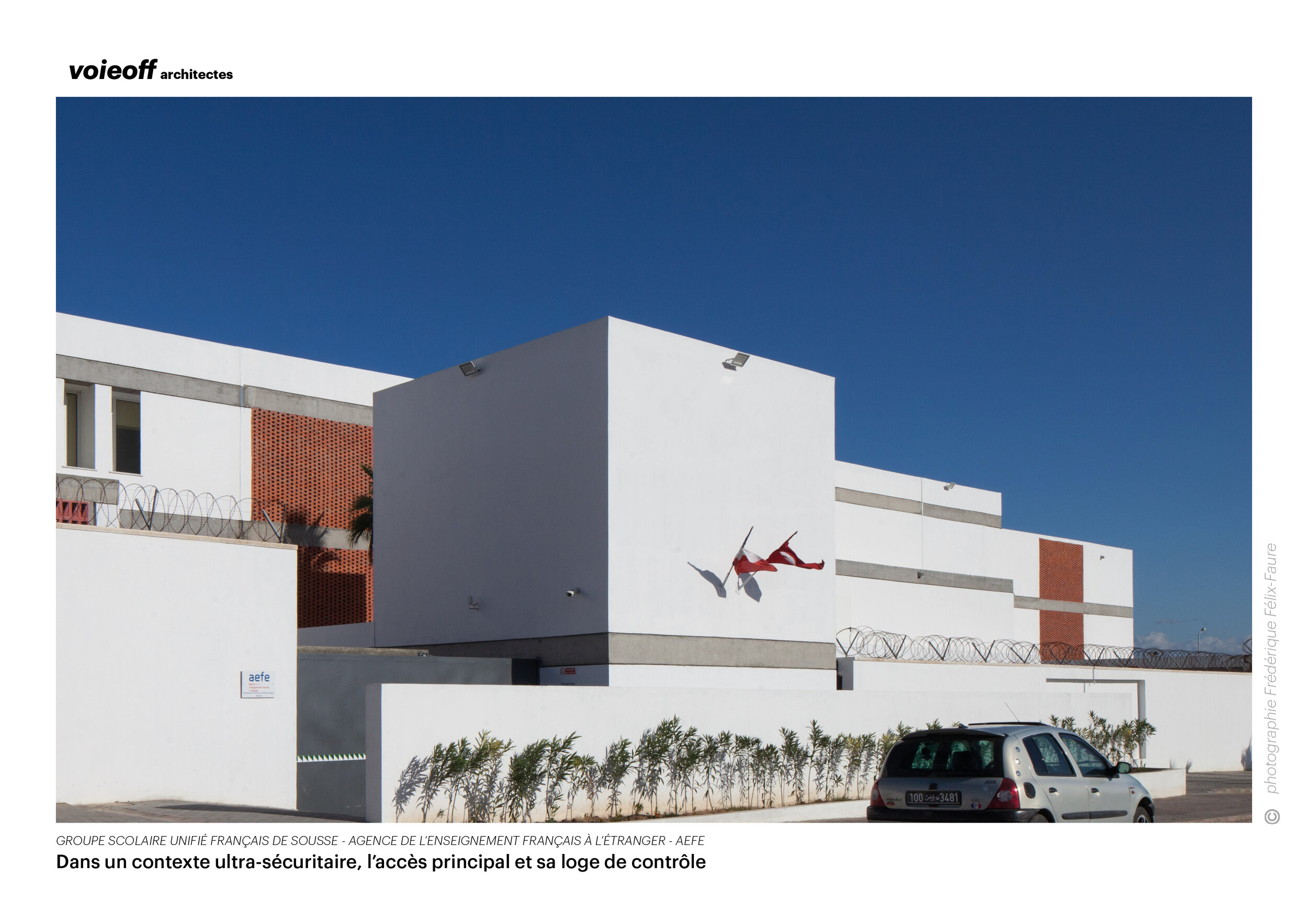
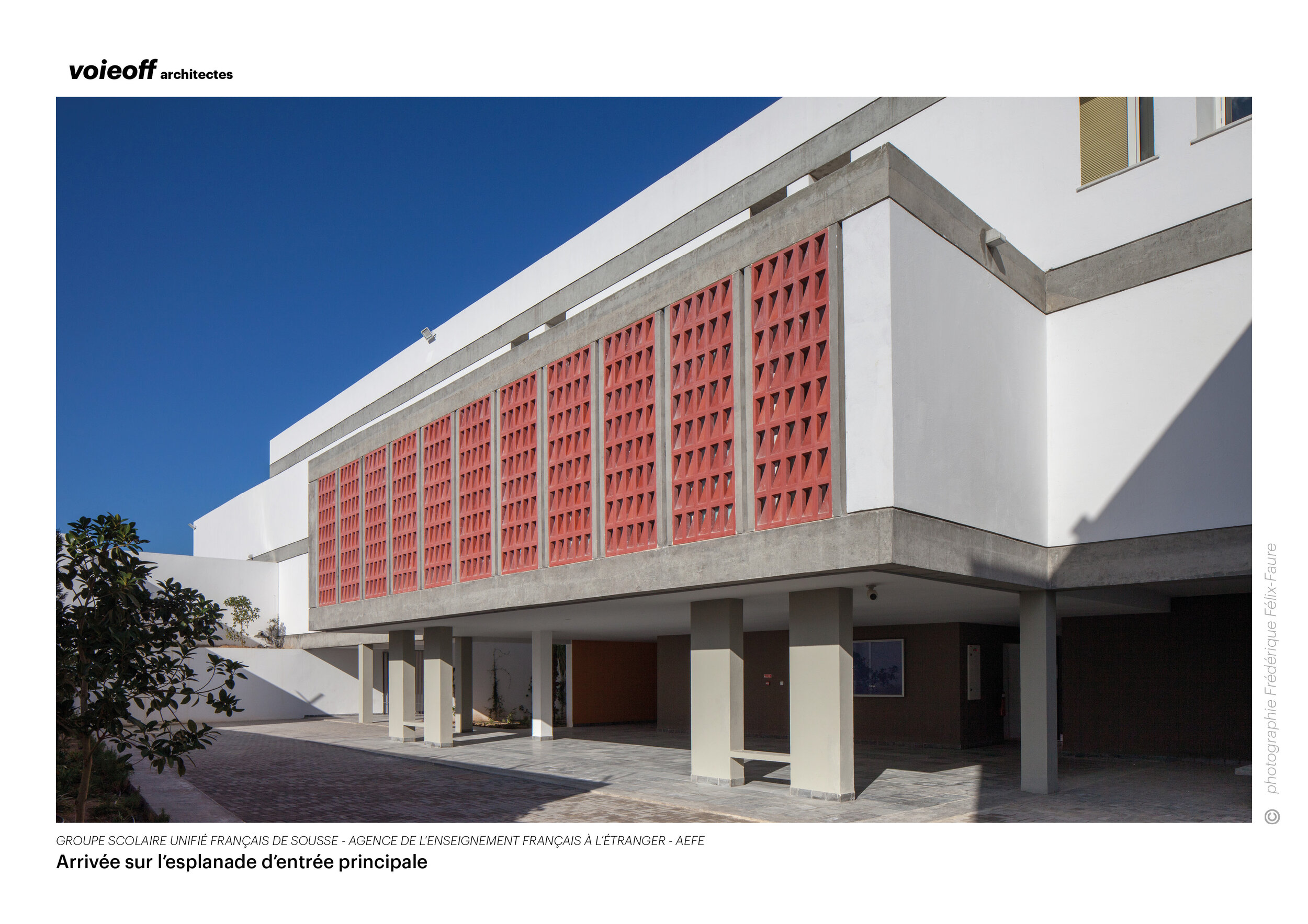
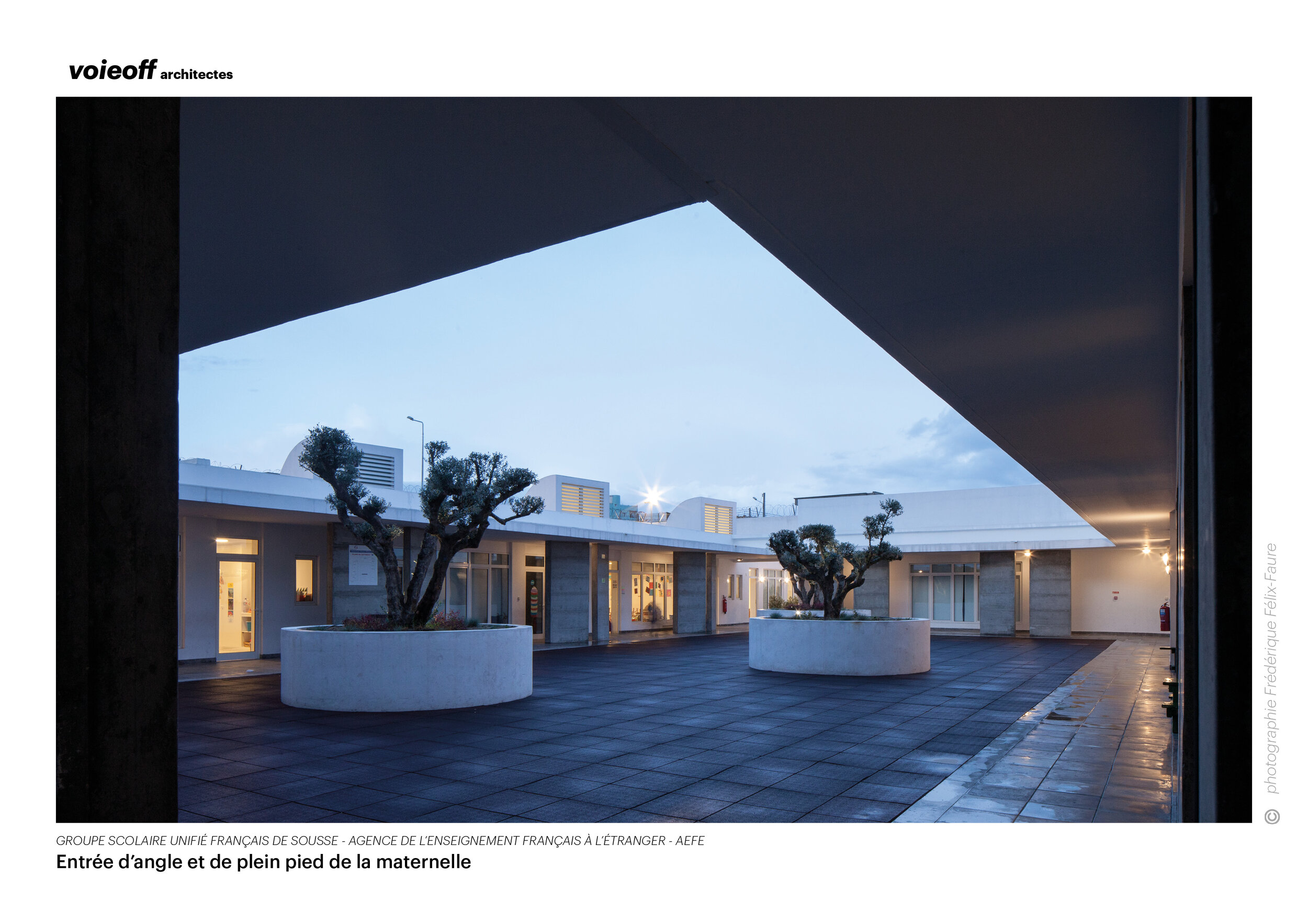


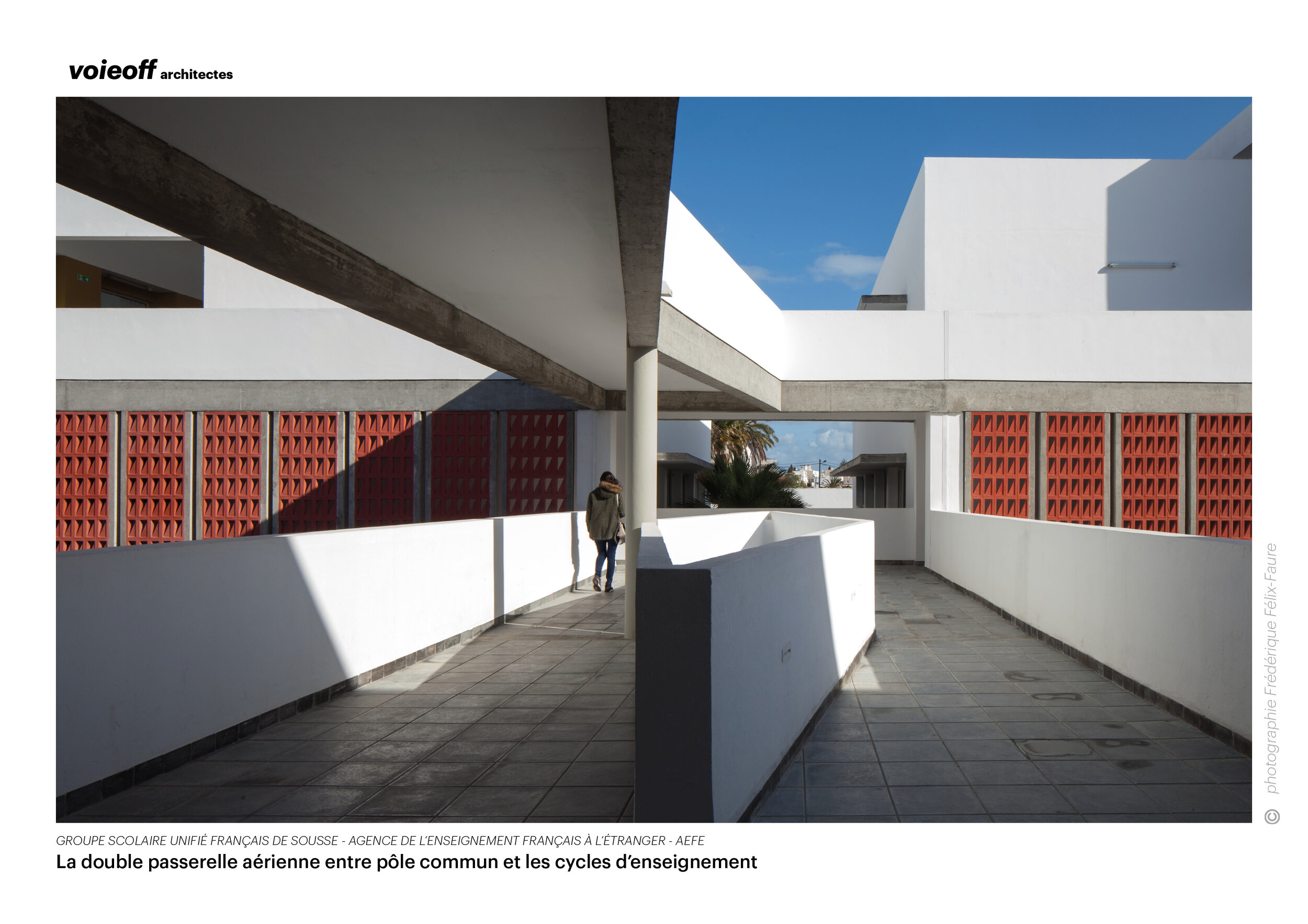
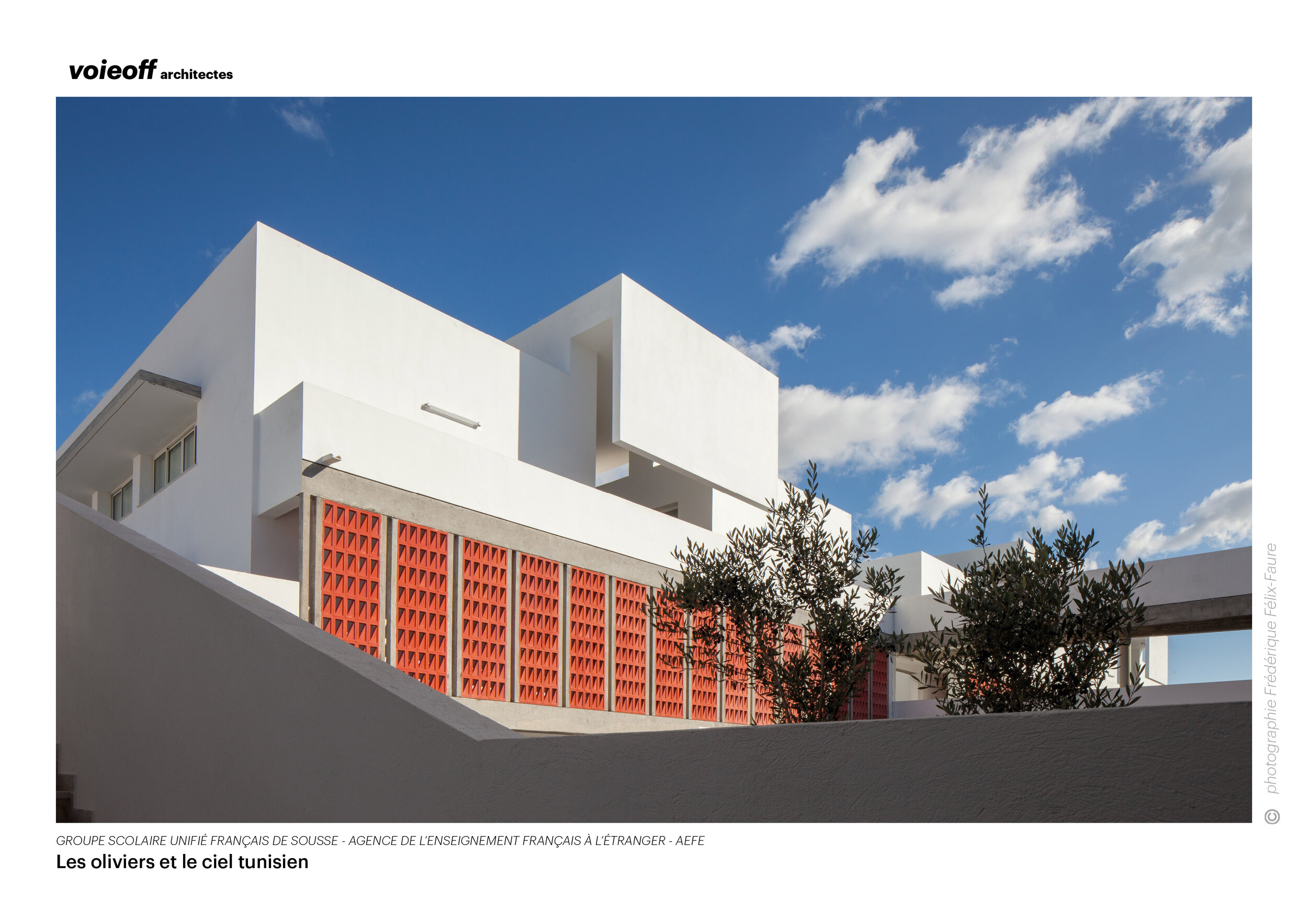
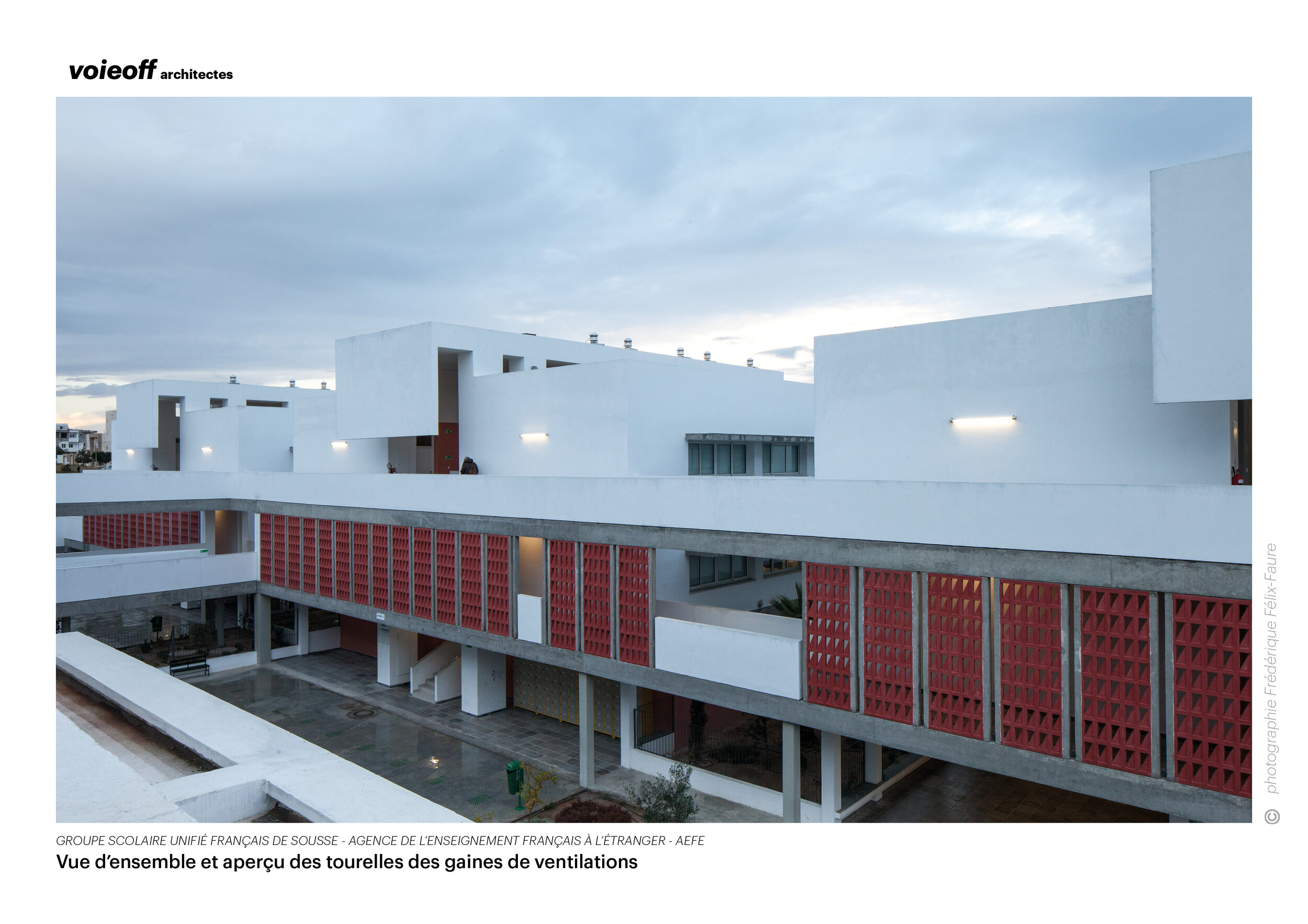
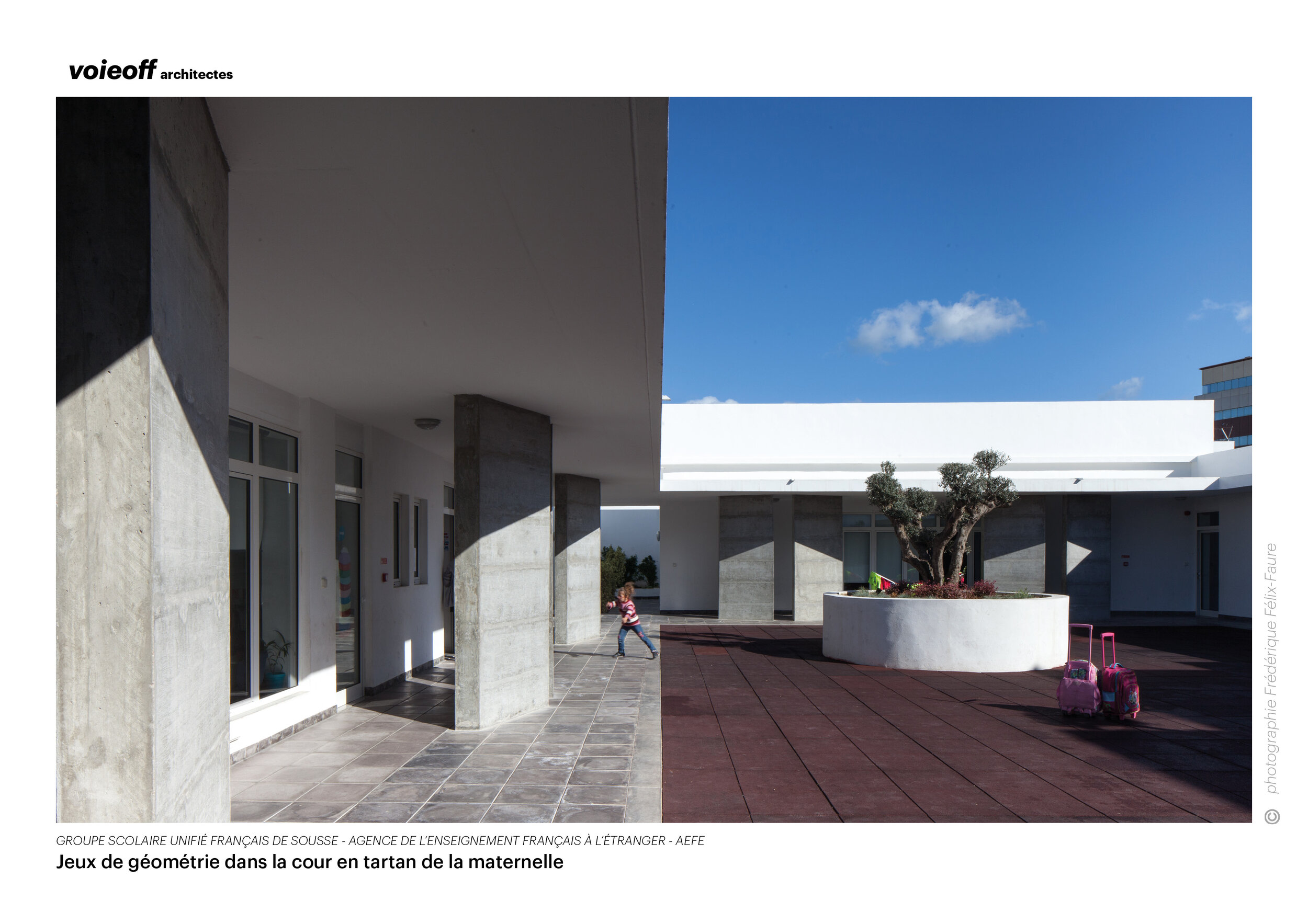
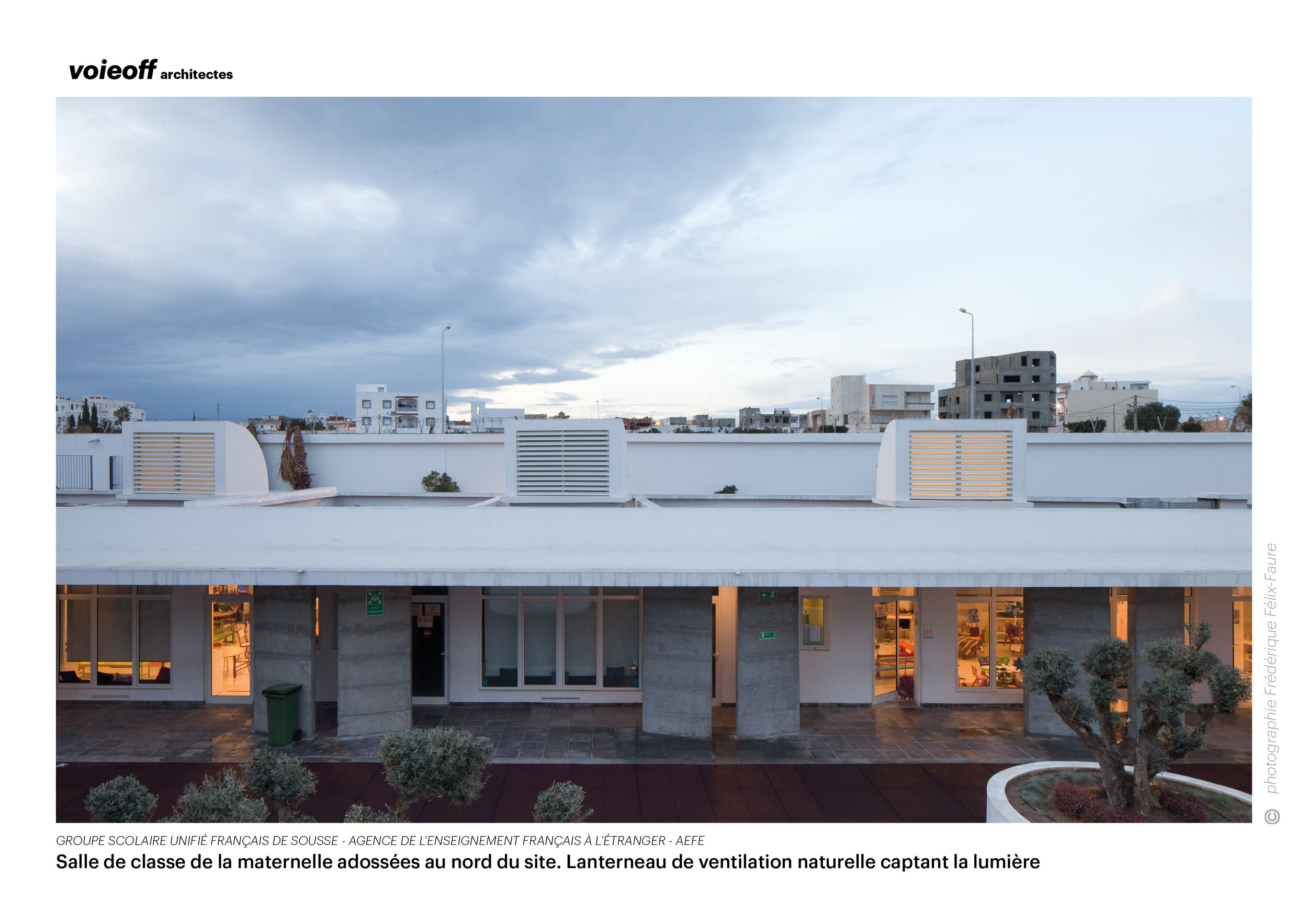
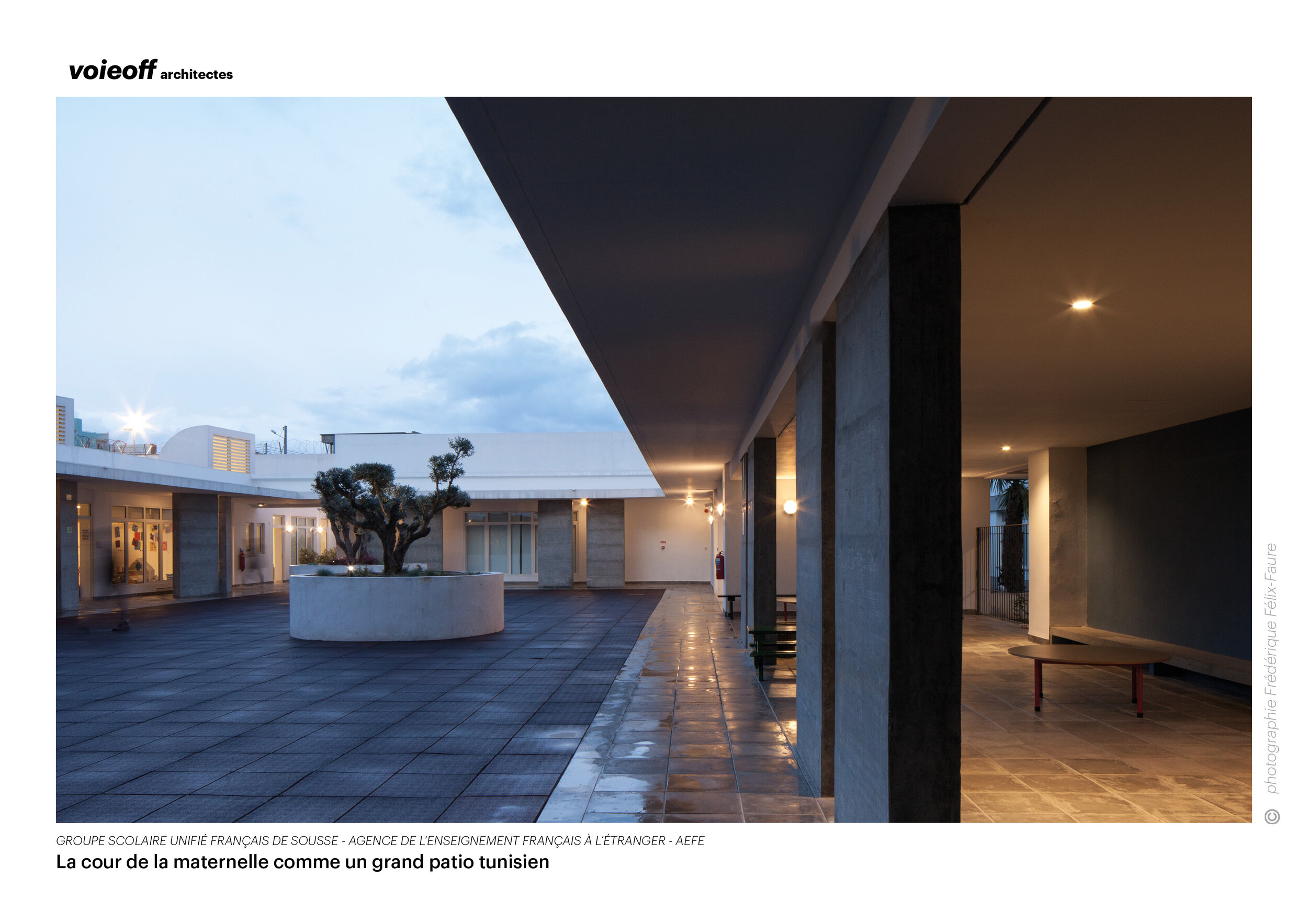
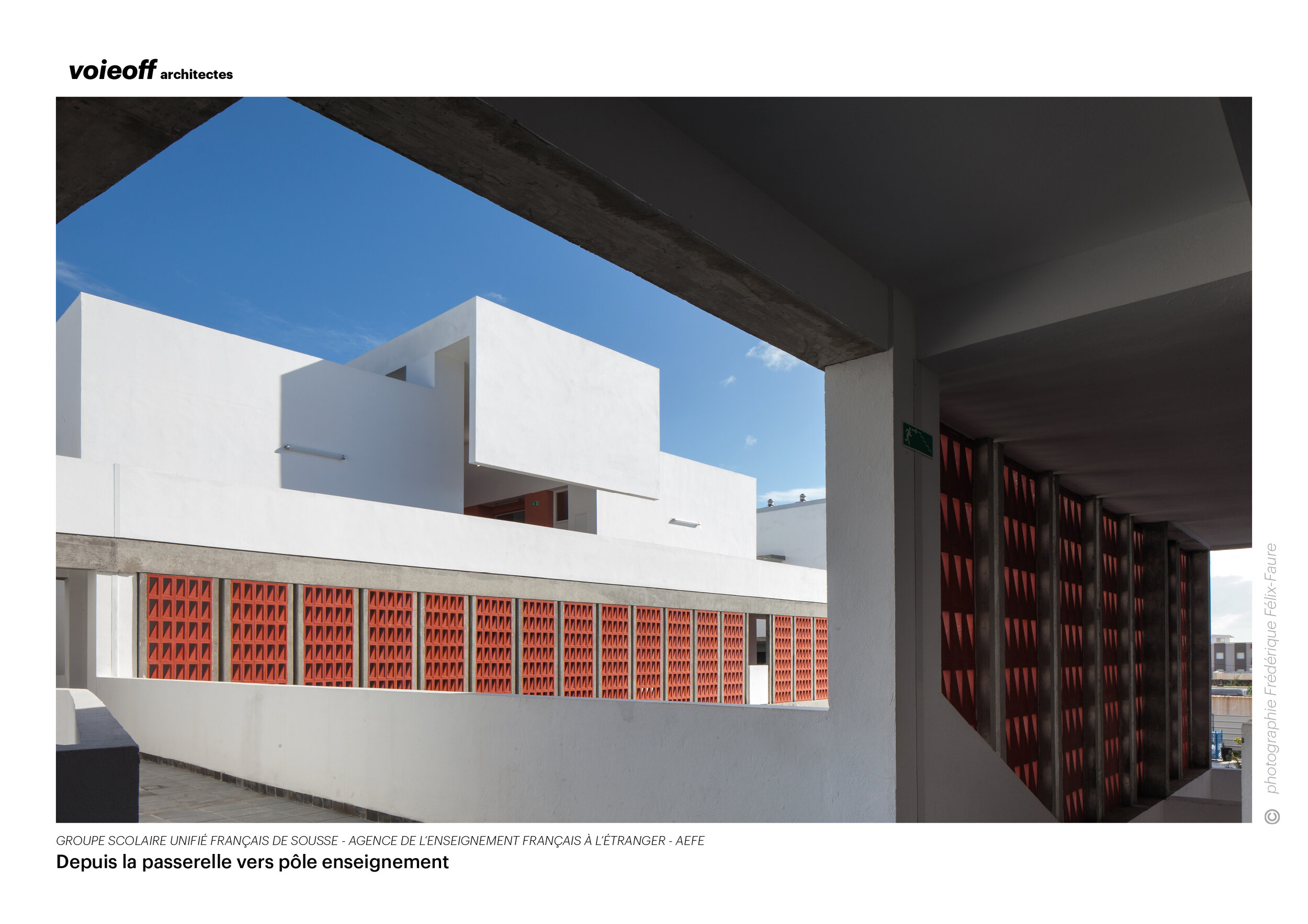
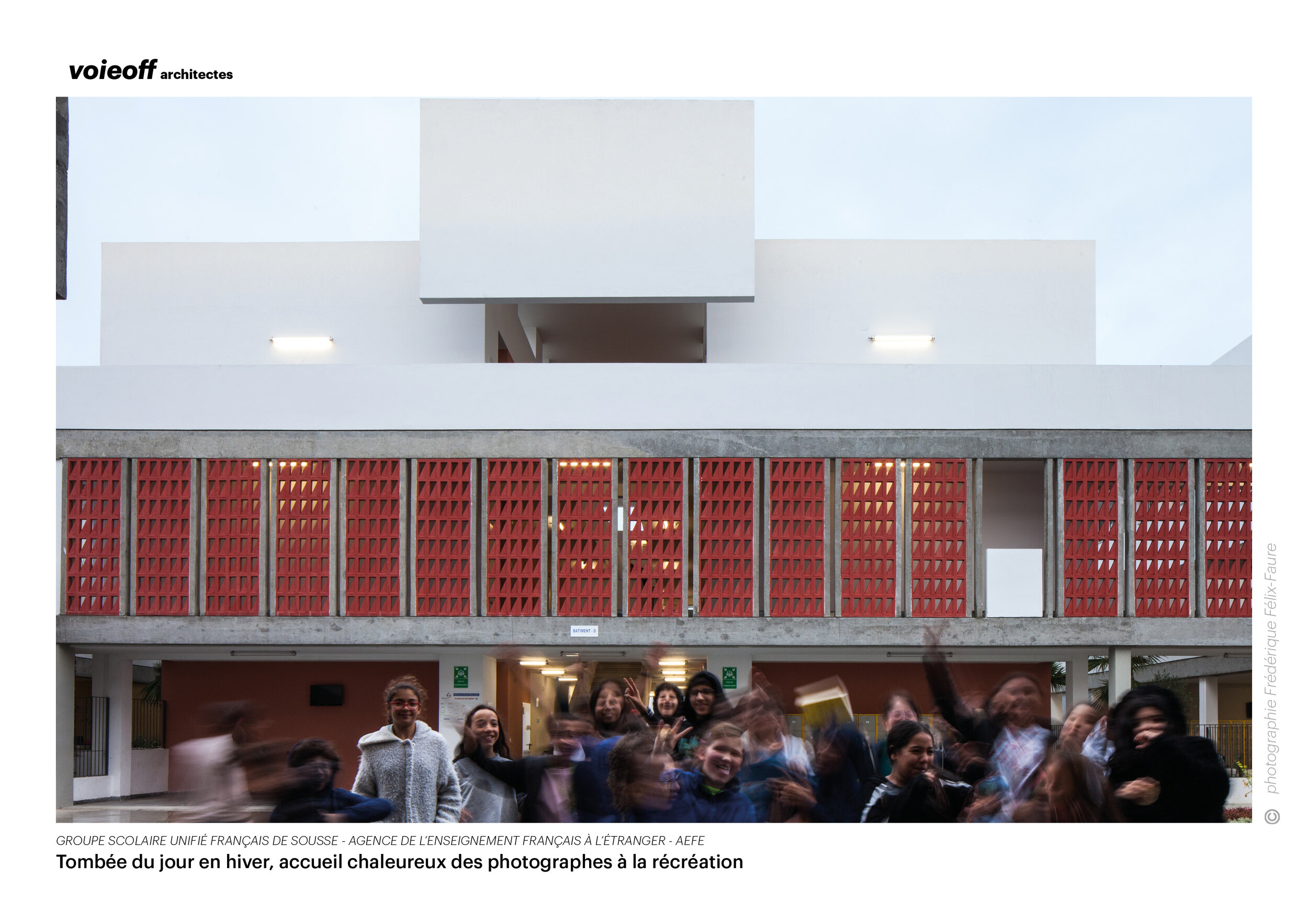
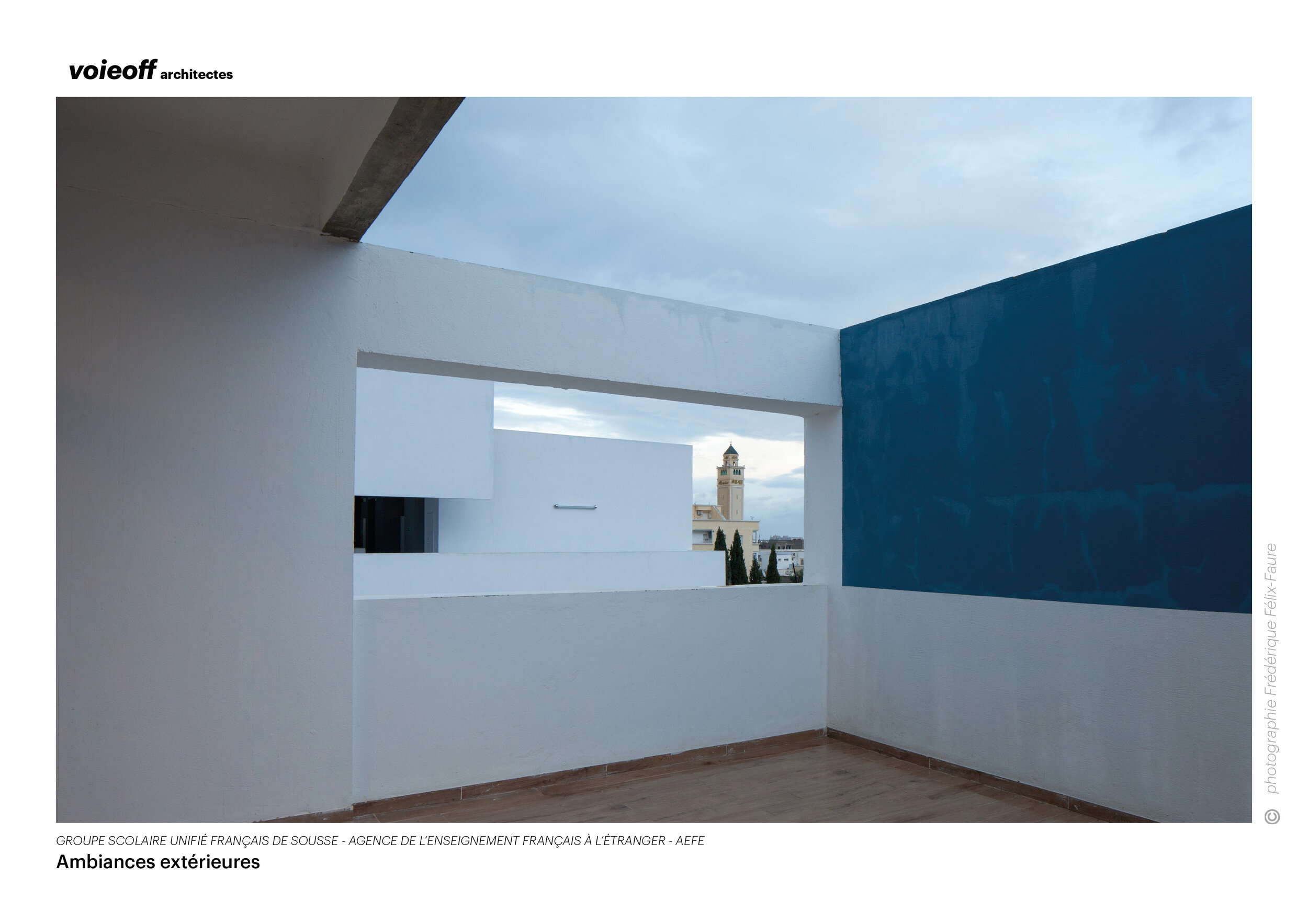
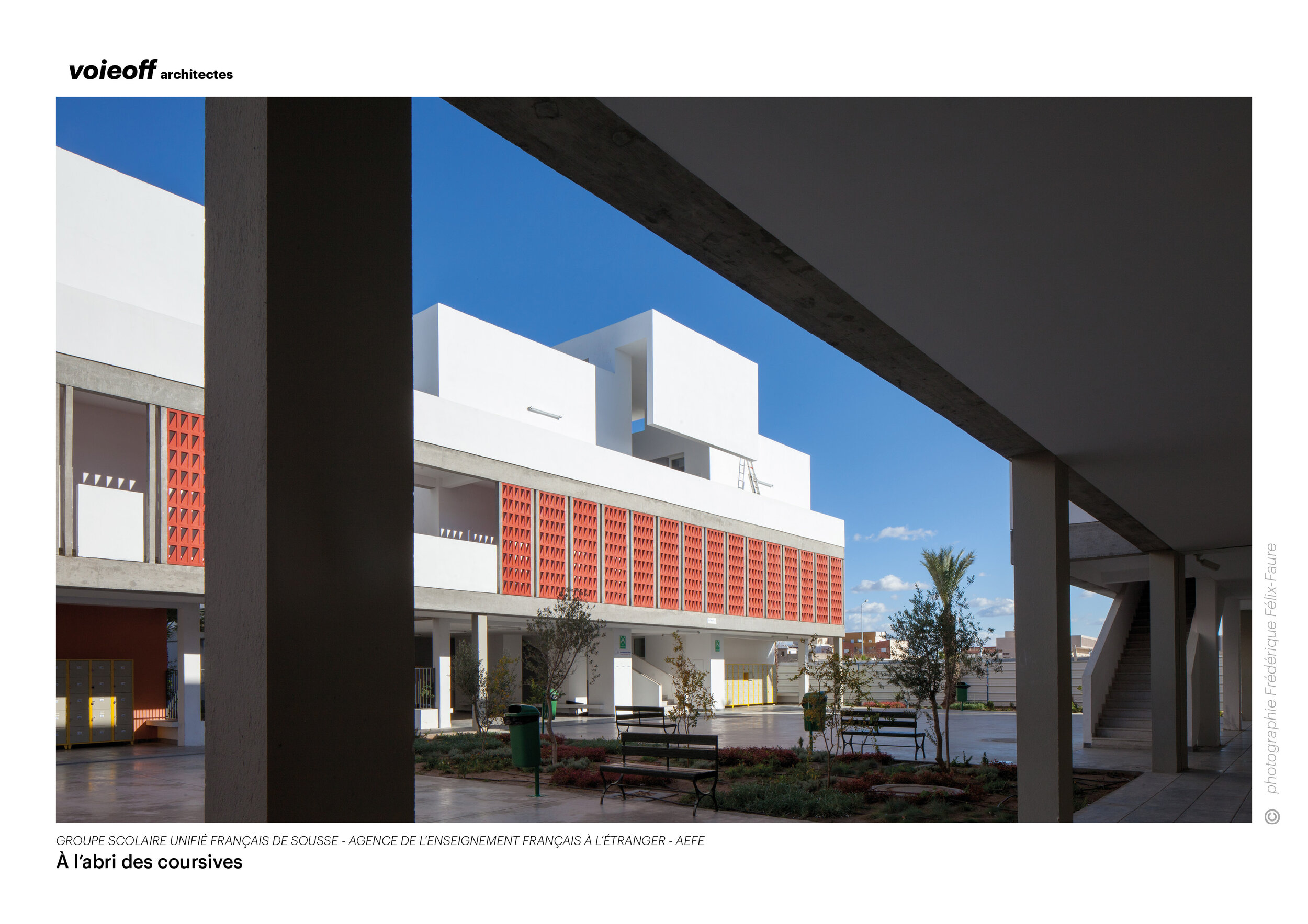
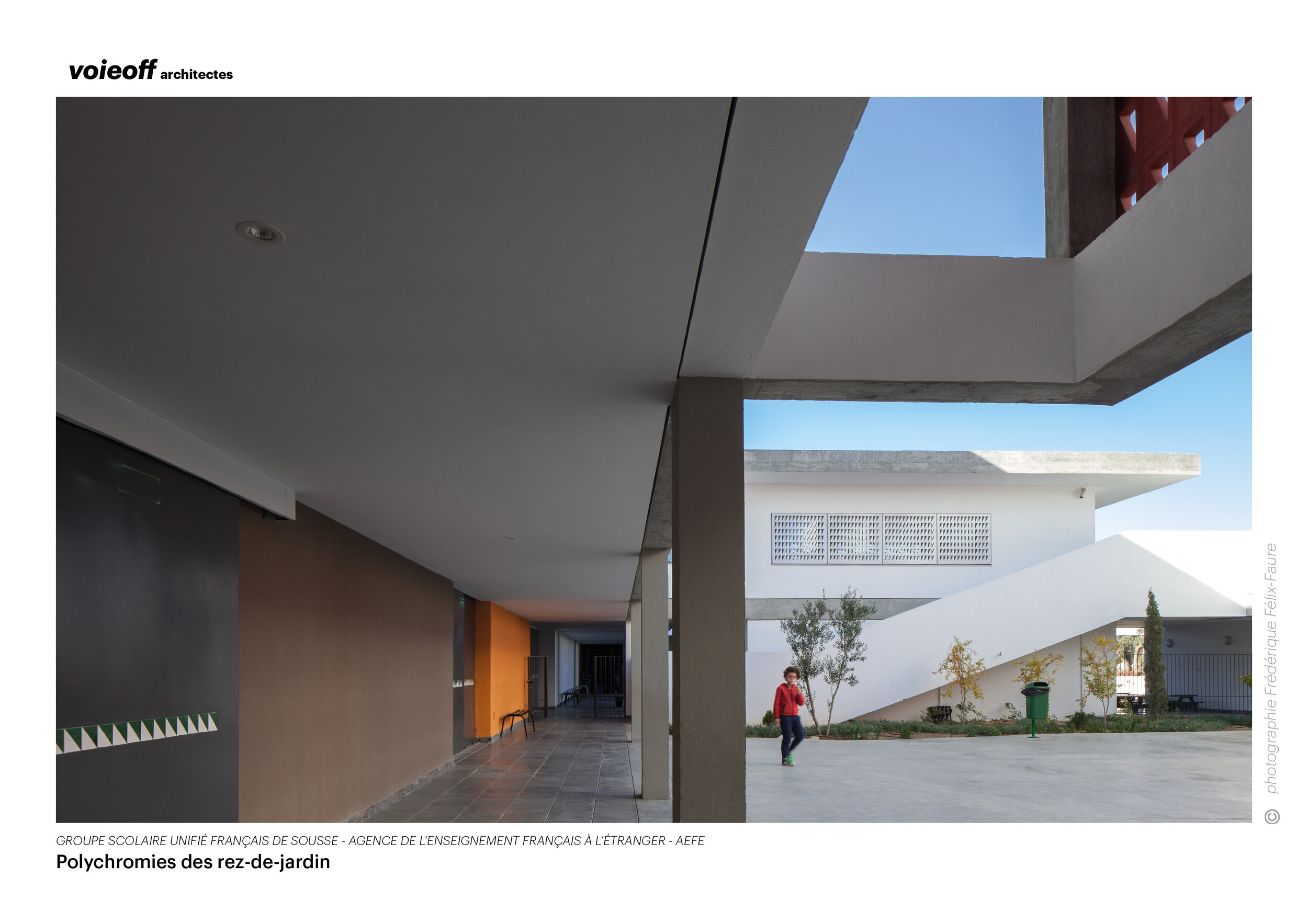
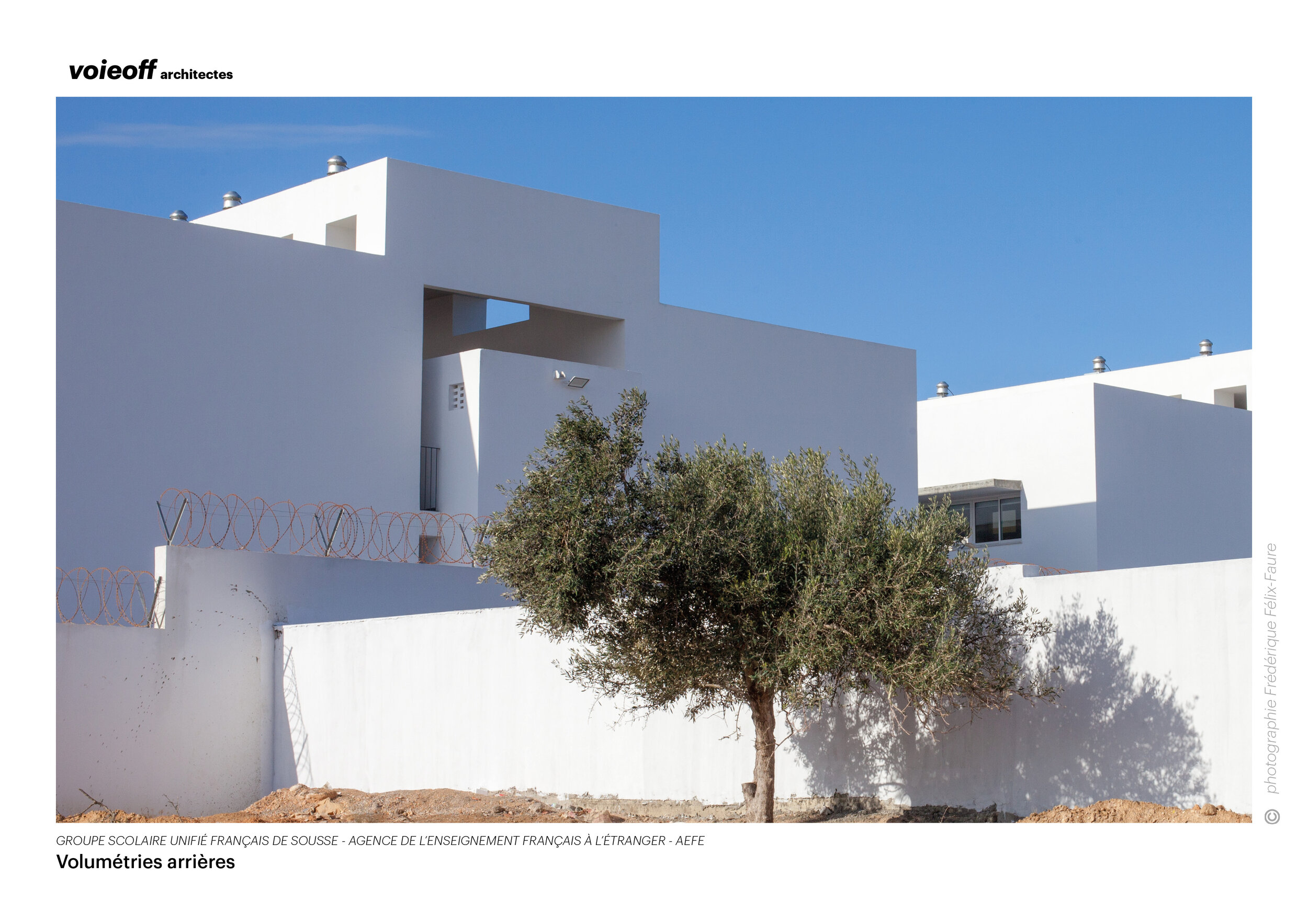
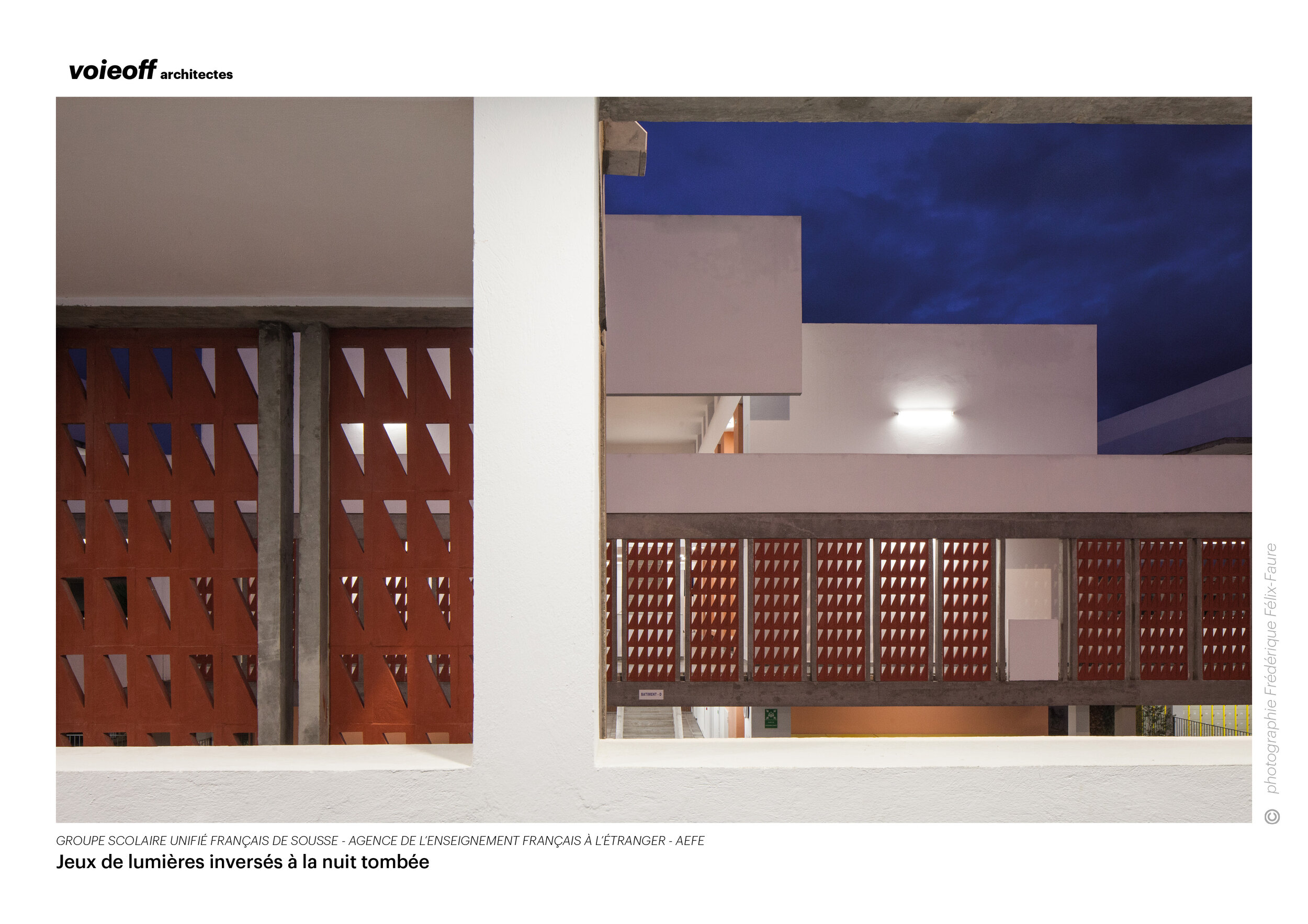
© Frédérique Félix-Faure
Présentation du projet par Adrien Félix-Faure lors des rencontres du Grand Prix AFEX
LE JURY DU GRAND PRIX AFEX 2020
1. François Roux, Architecte, Président de l’AFEX, Président du Jury
Architectes
2. Achille Bourdon, Architecte, AJAP 18
3. Martin Duplantier, Architecte
4. Xavier Fabre, Architecte
5. Florence Lipsky, Architecte
6. Anne-Julie Martinon, Architecte, AJAP 16
7. Larbi Mehroum, Architecte
8. Frédéric Neau, Architecte
9. Brice Piechaczyk, Architecte
10. Corinne Vezzoni, Architecte
11. Nicolas Ziesel, Architecte
Associés - Partenaires
12. Félicie Geslin, Journaliste, Groupe Moniteur
13. Florence Mercier, Paysagiste
Partenaires institutionnels
14. Philippe Barbat, Directeur Général des Patrimoines, Ministère de la Culture
15. Philippe Bélaval, Président du Centre des Monuments Nationaux
16. Hervé Boisguillaume, Ministère de la cohésion des territoires
17. Denis Dessus, Président du Conseil National de l’Ordre des architectes
18. Jean-Claude Martinez, Président de la MAF
19. Corinne Micaelli, Ministère de l’Europe et des Affaires étrangères



